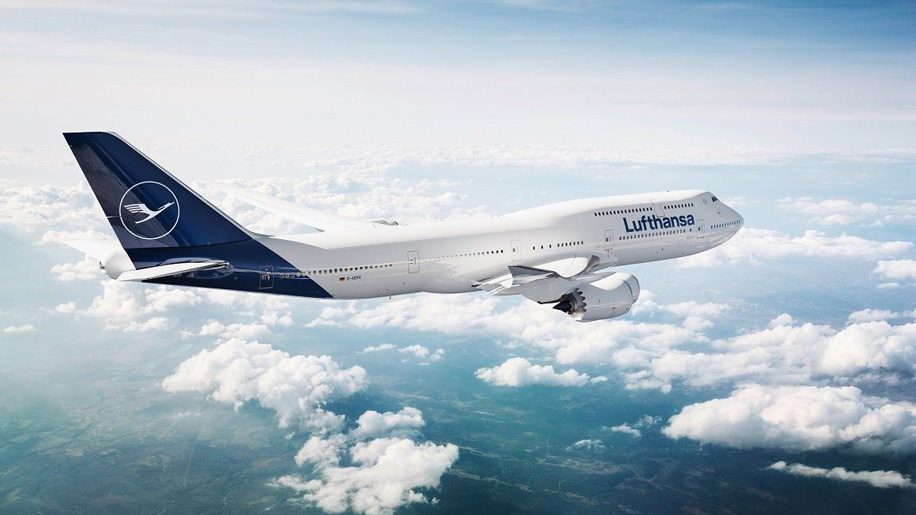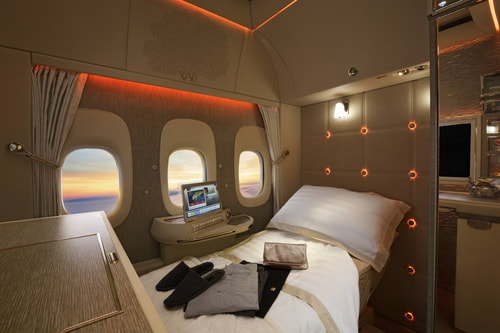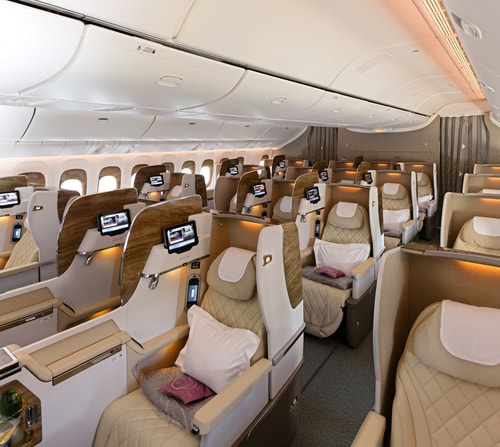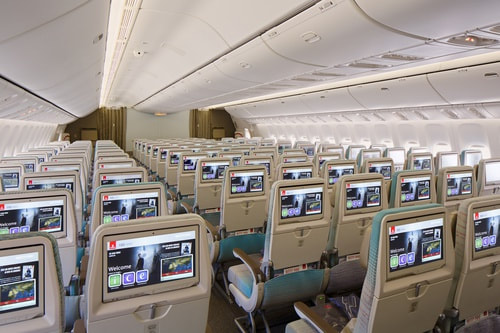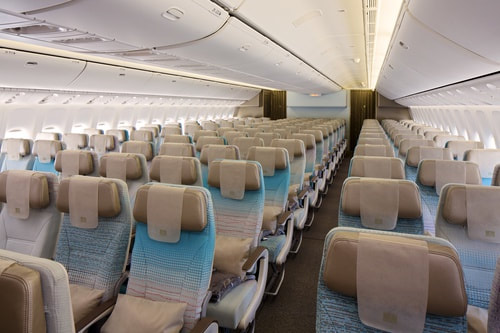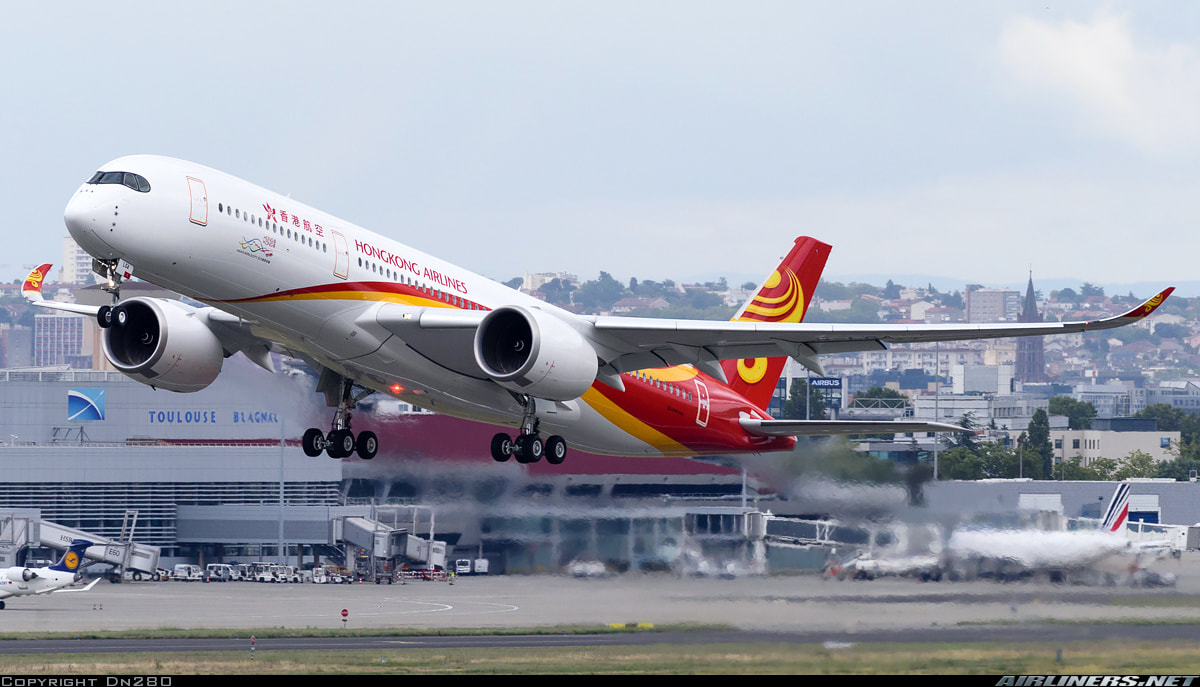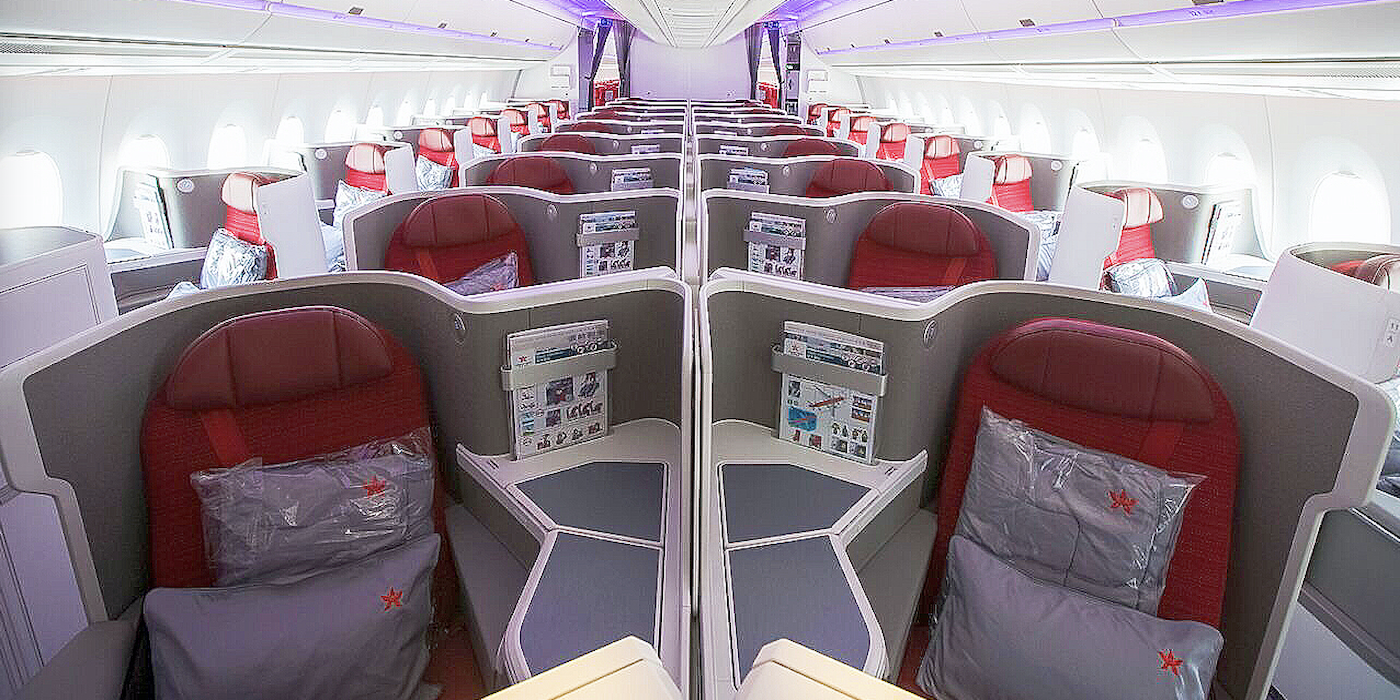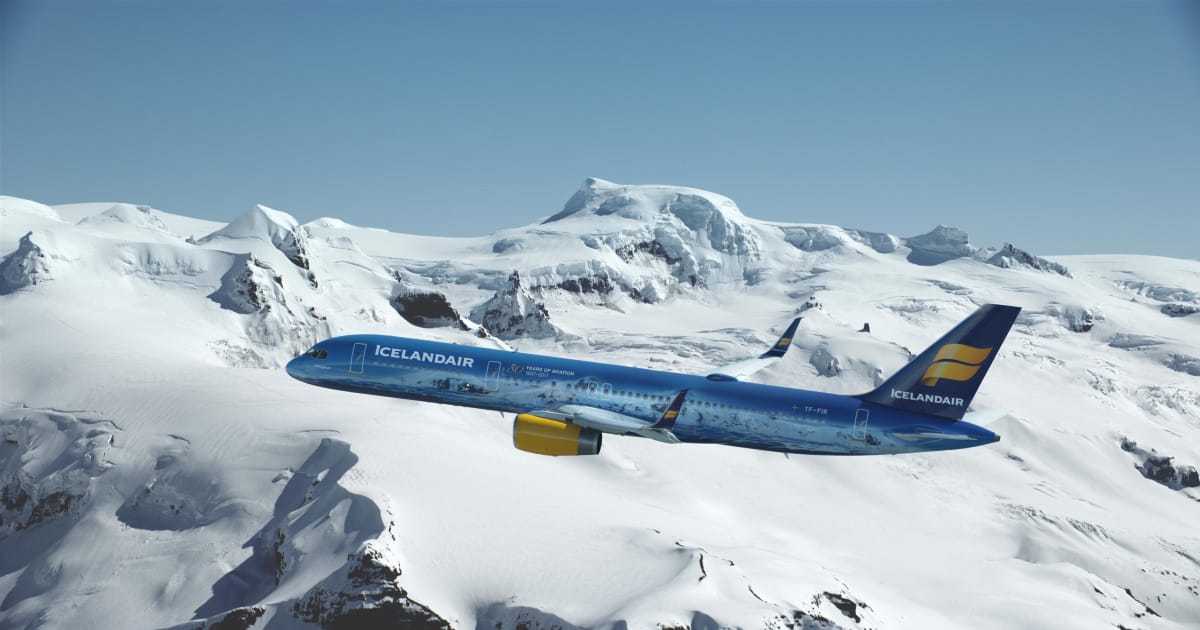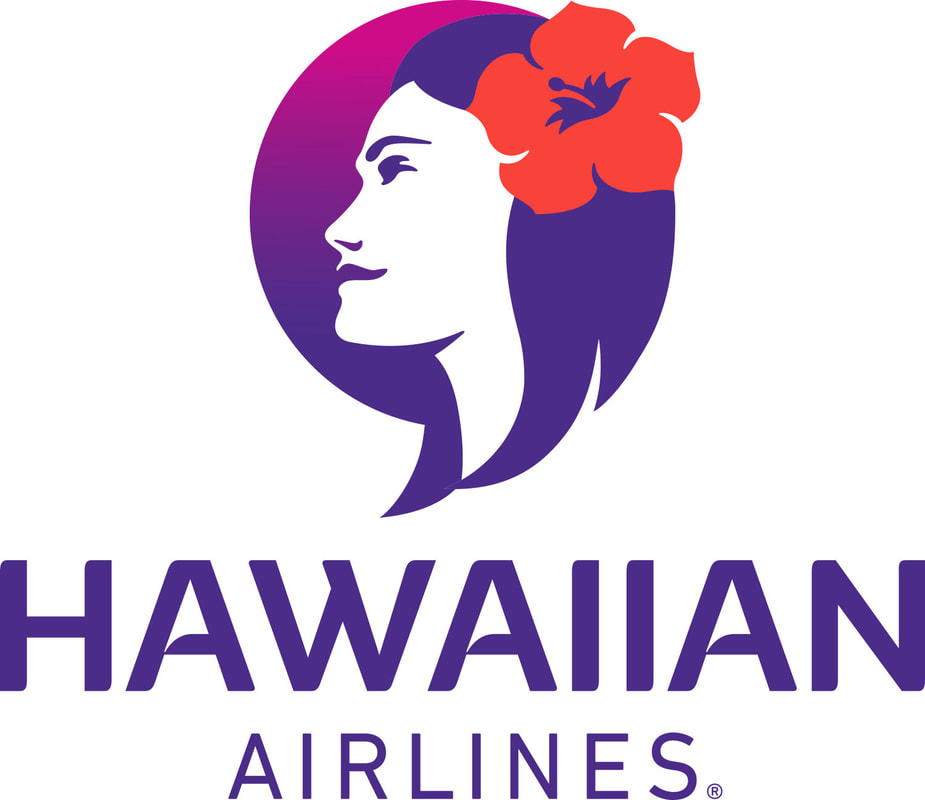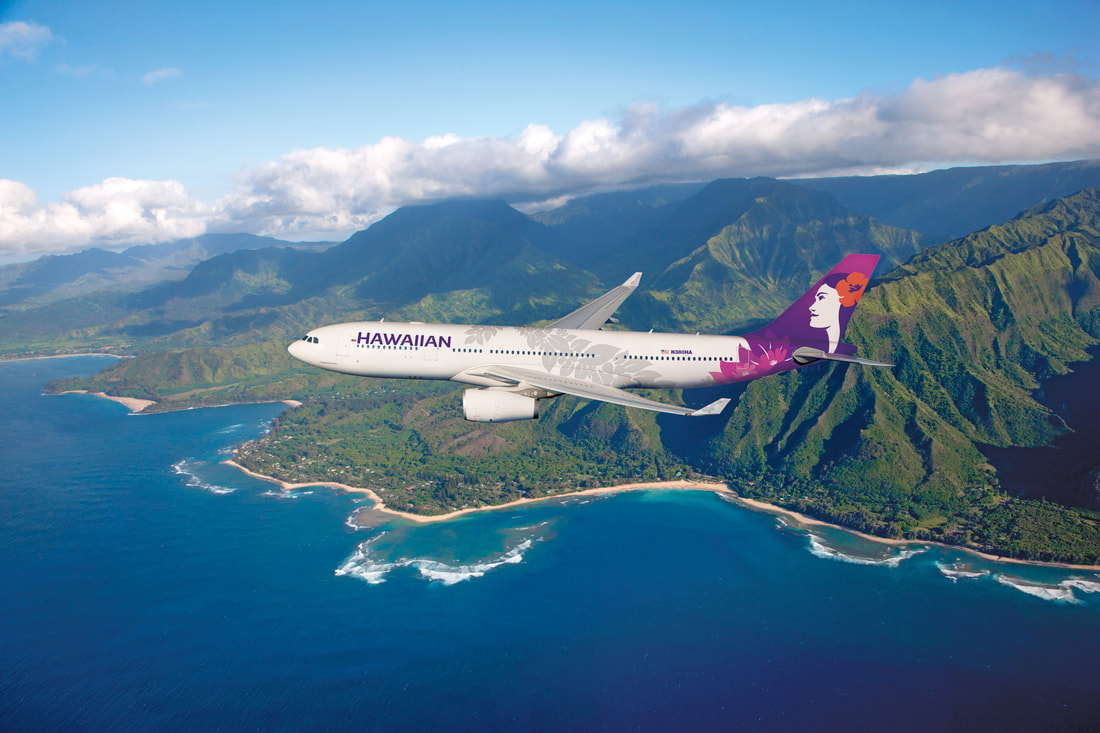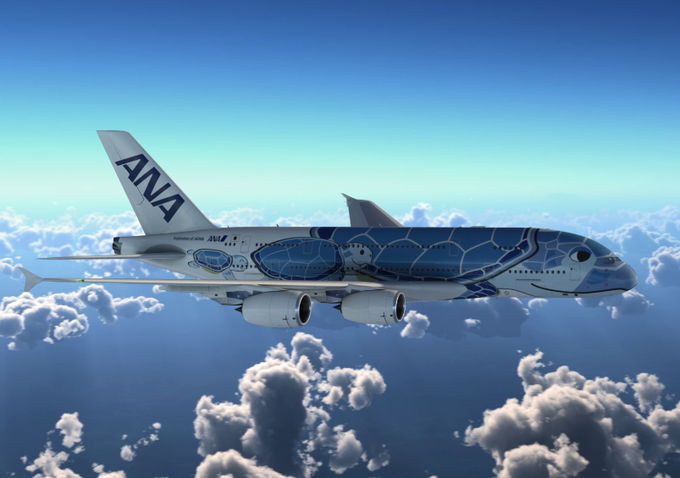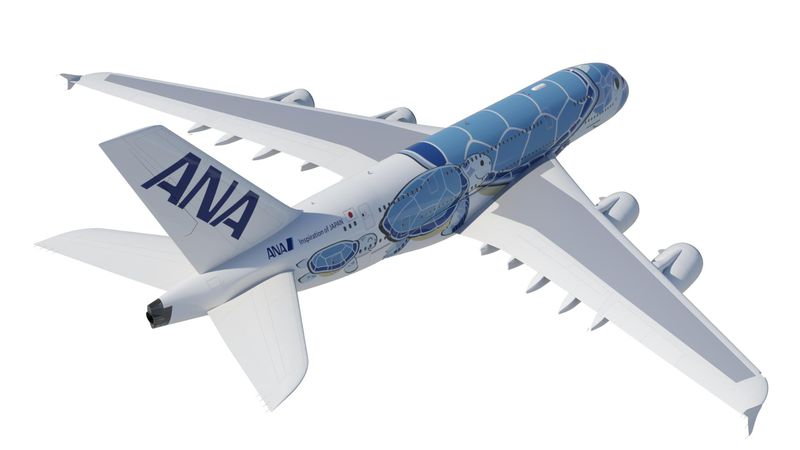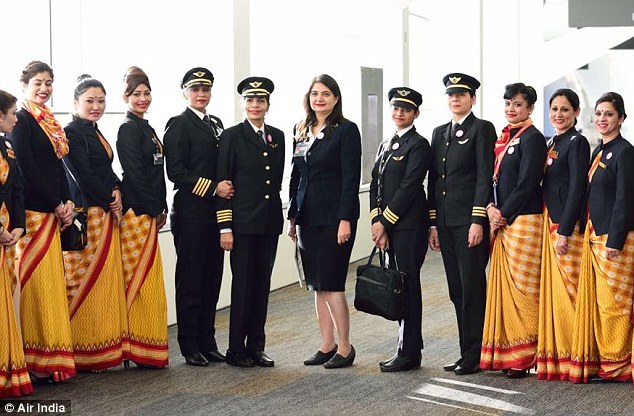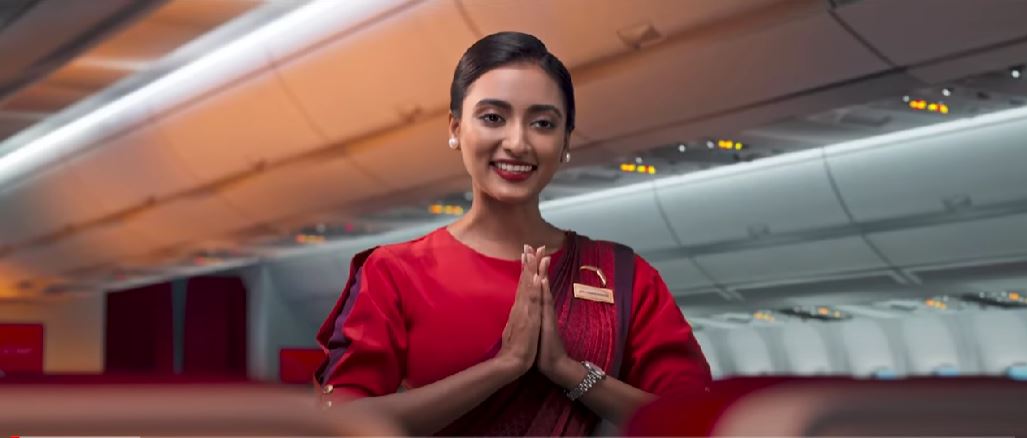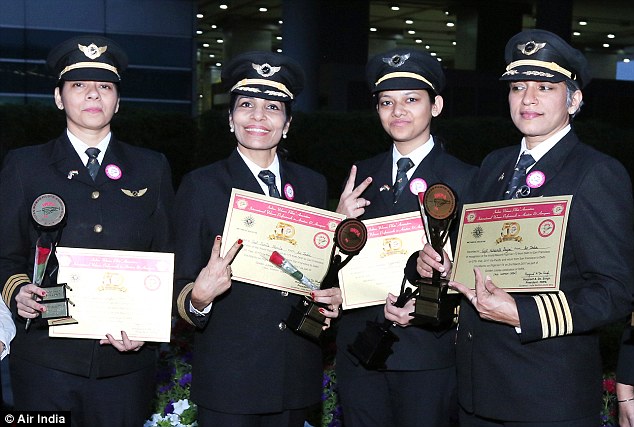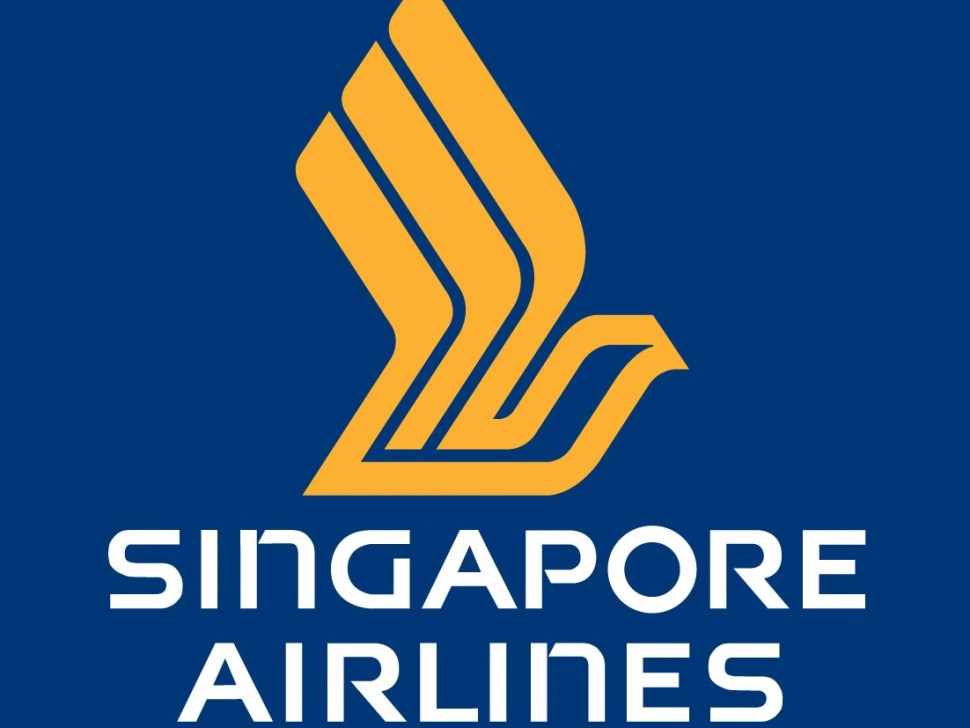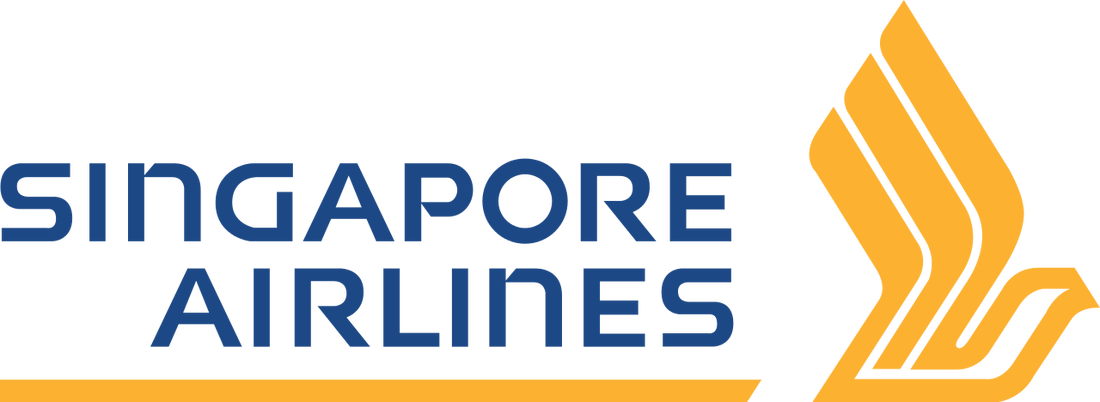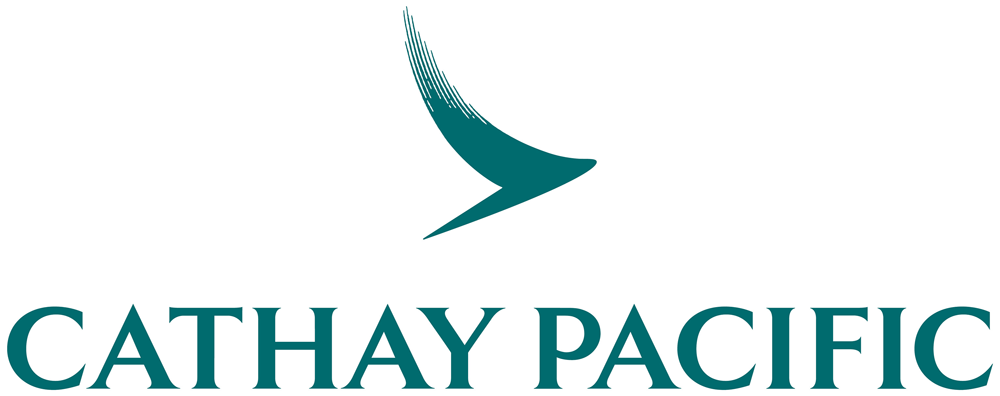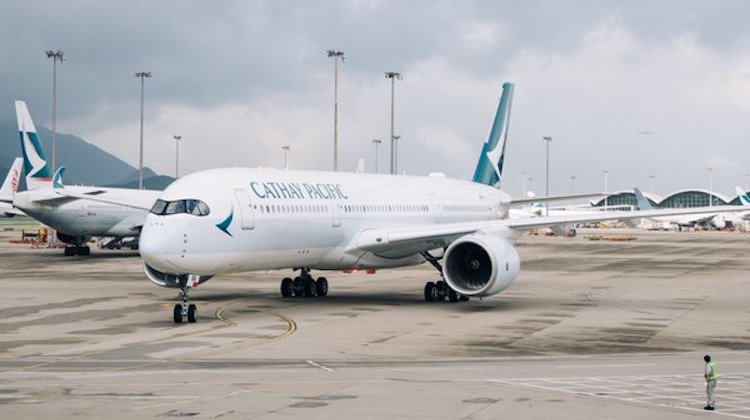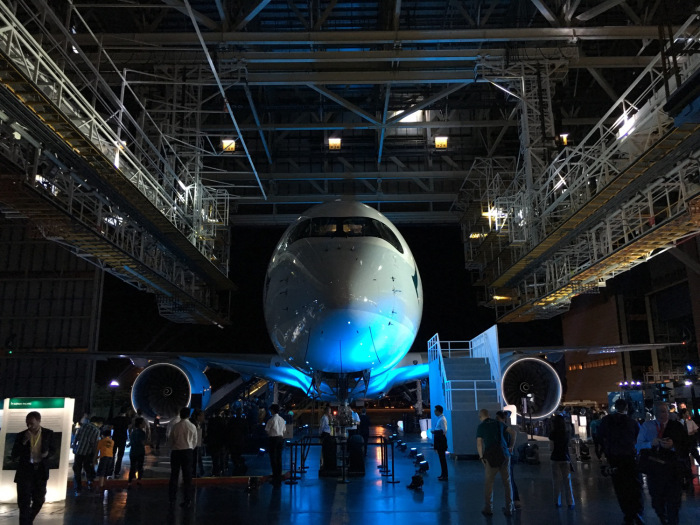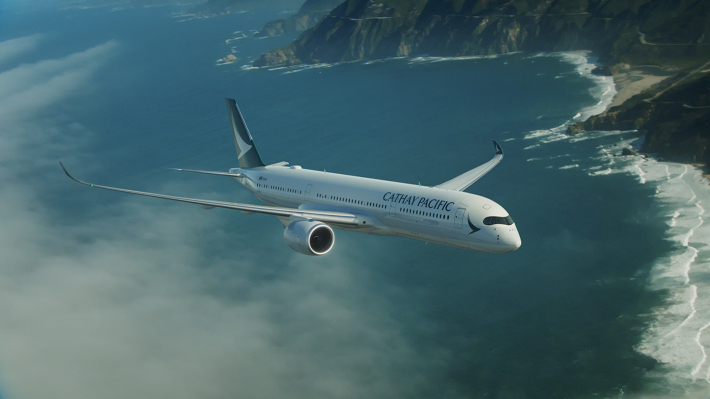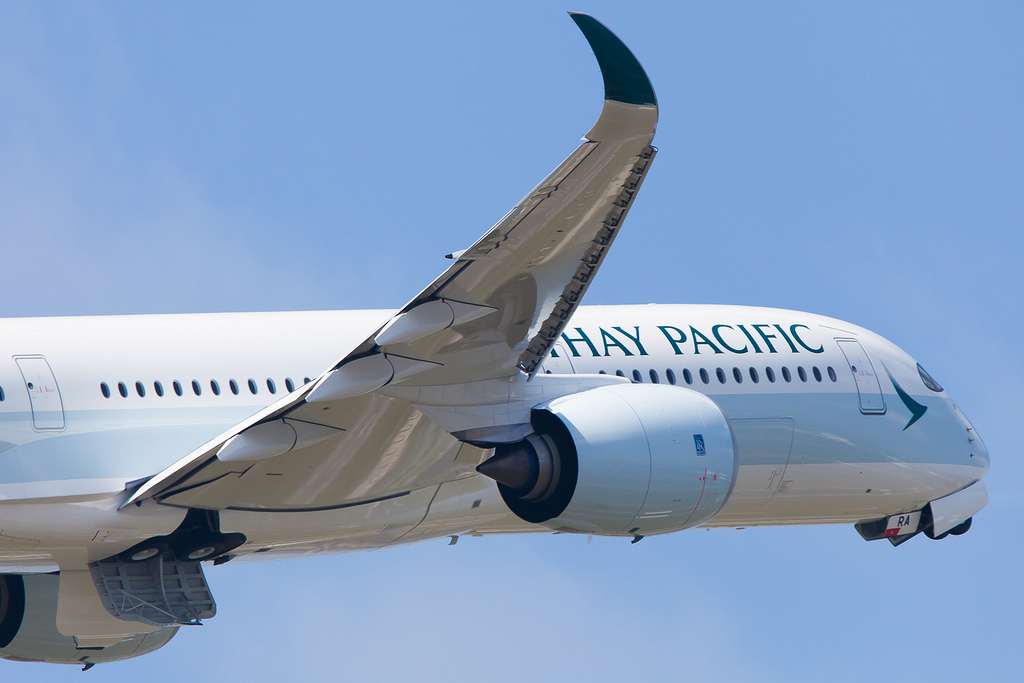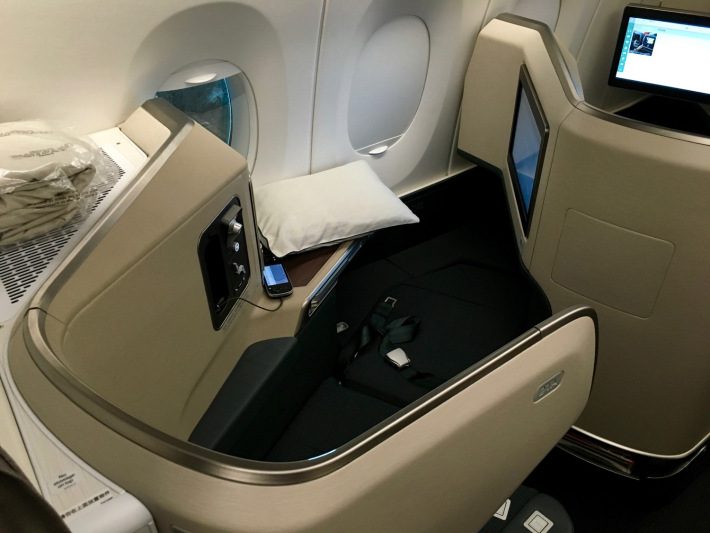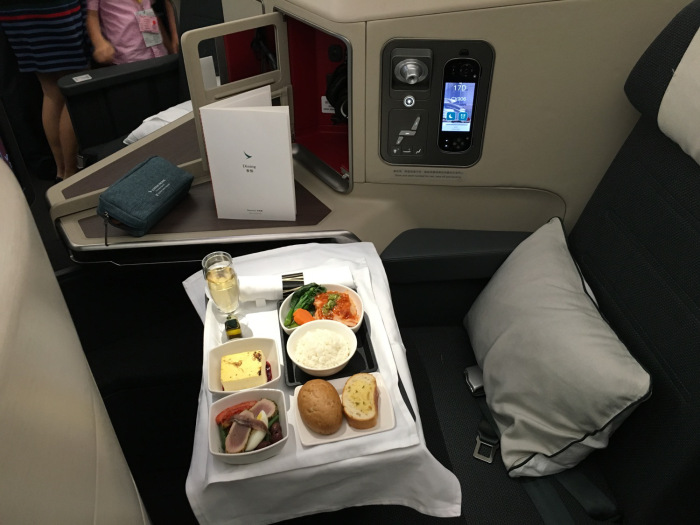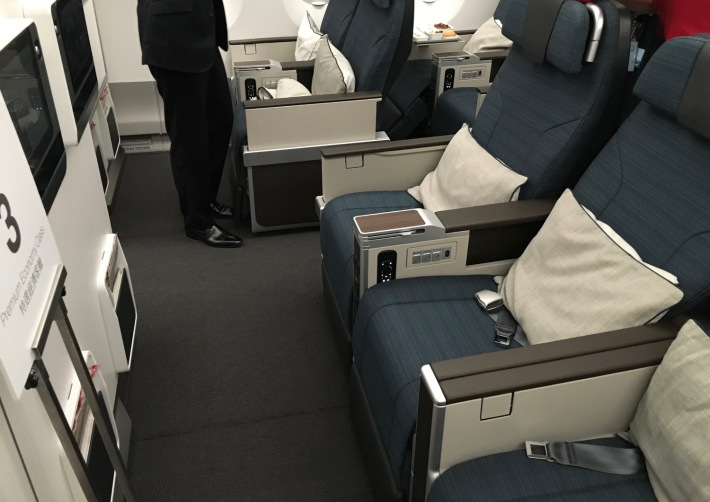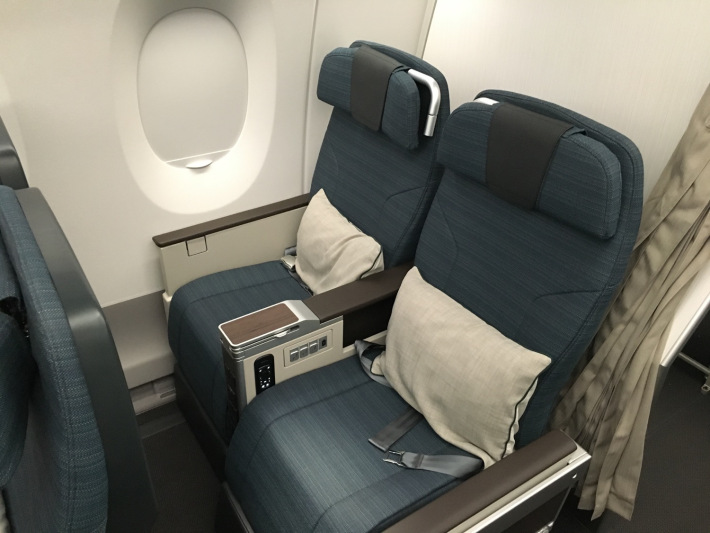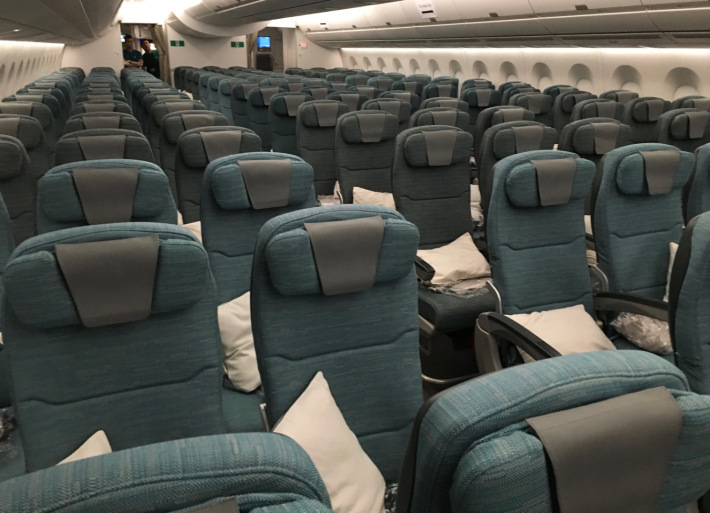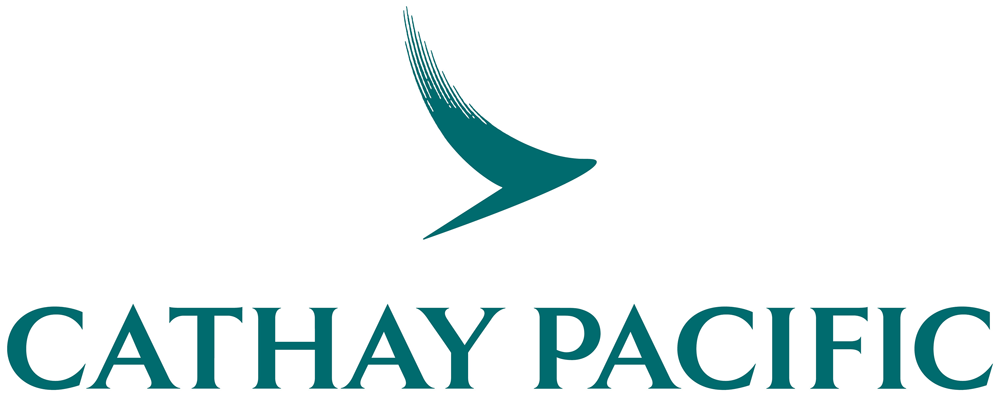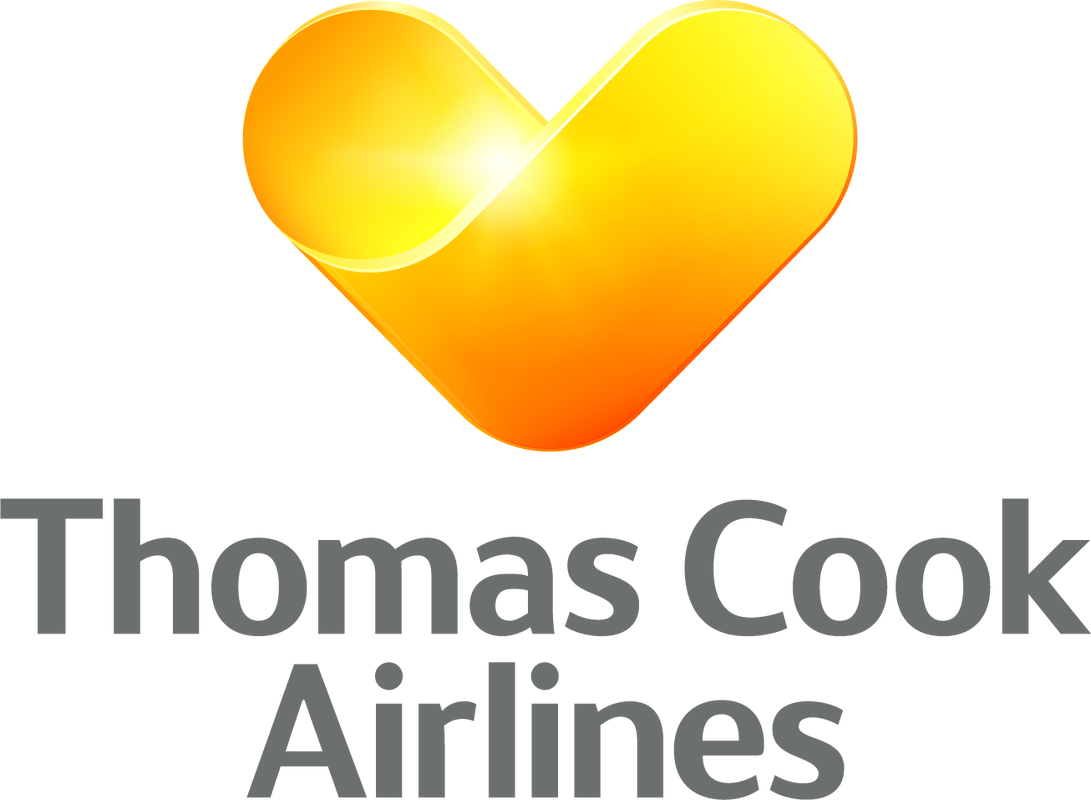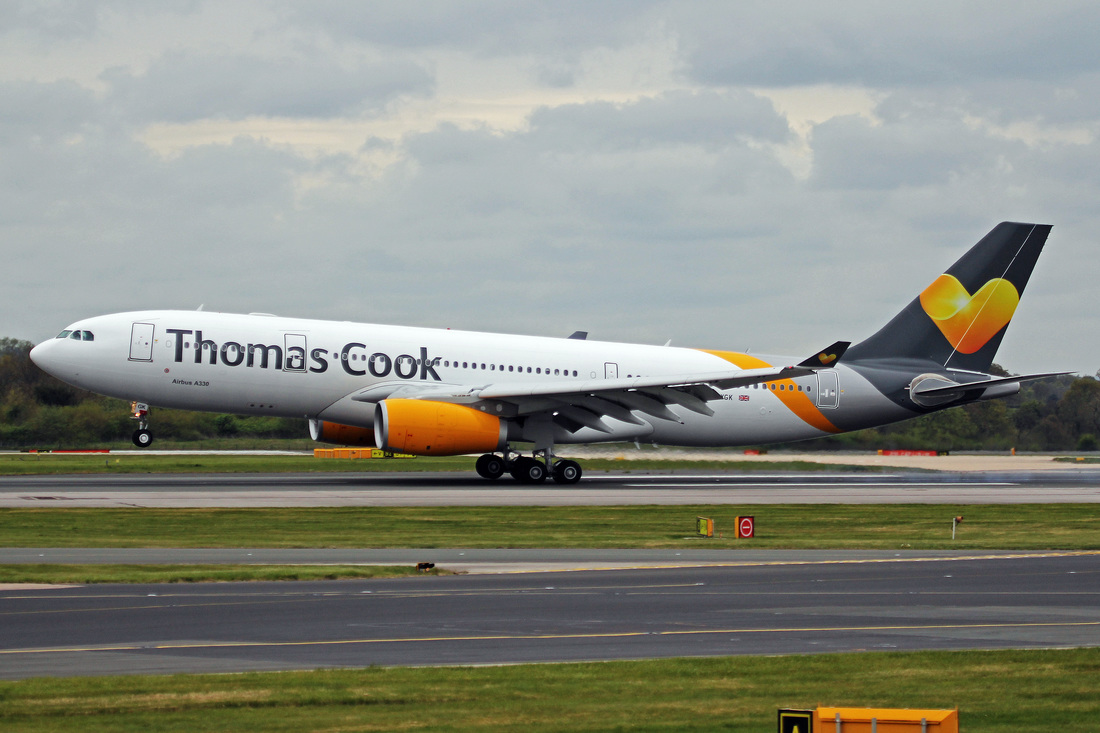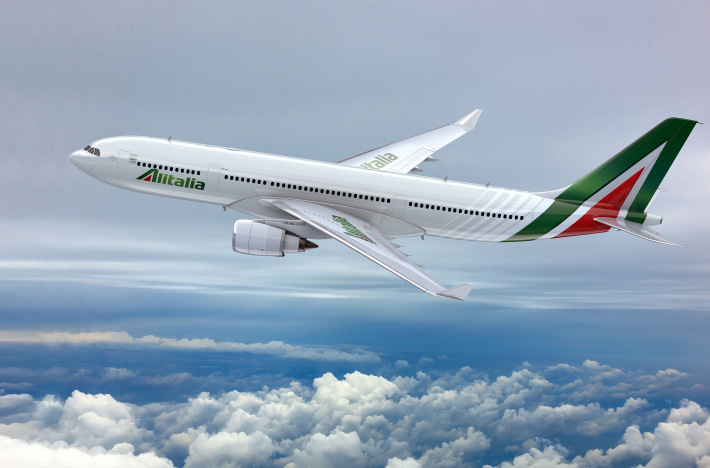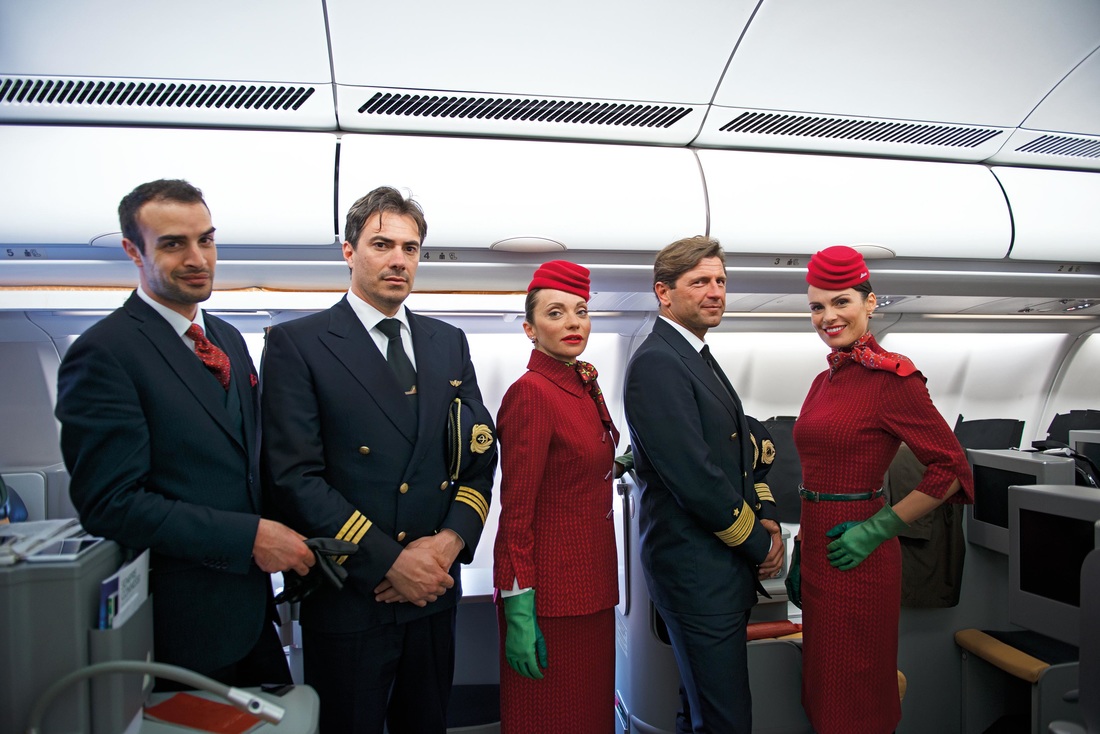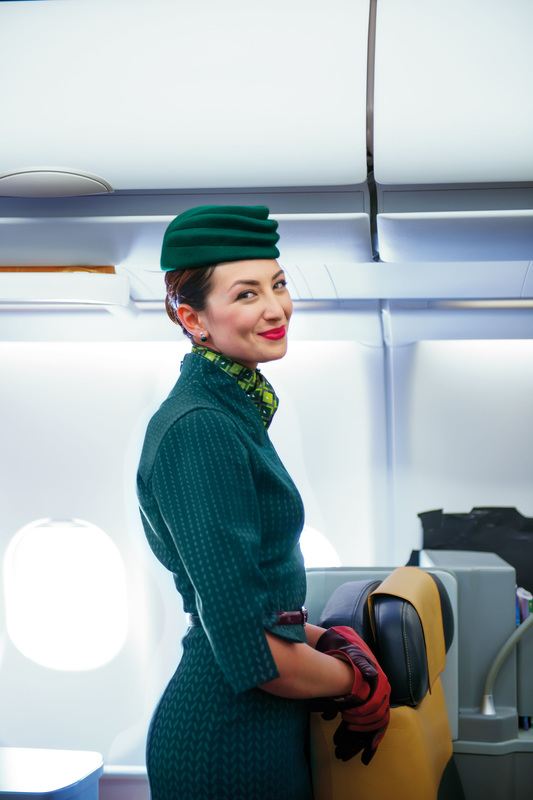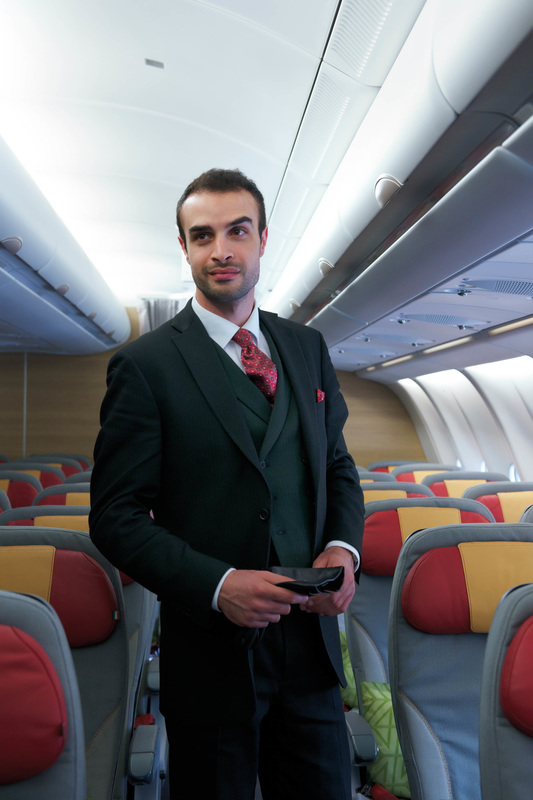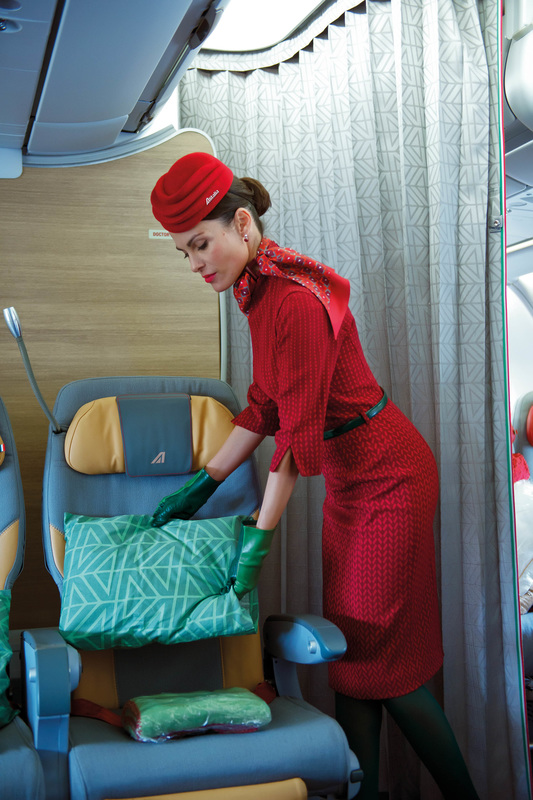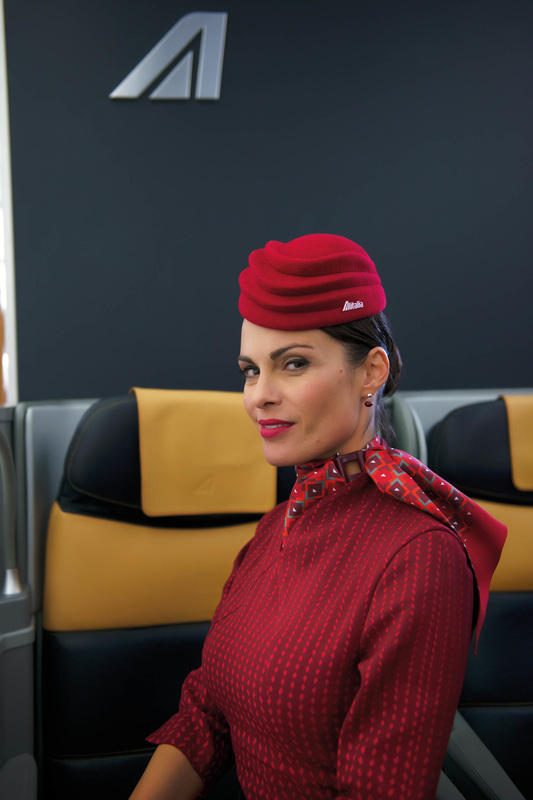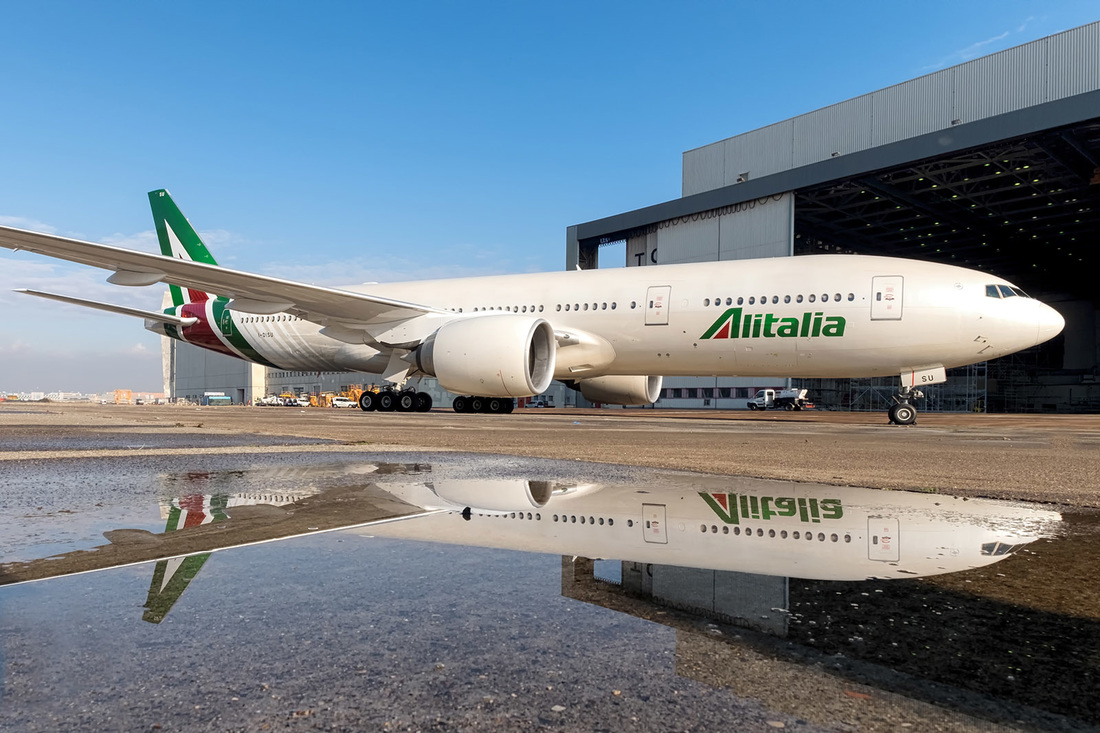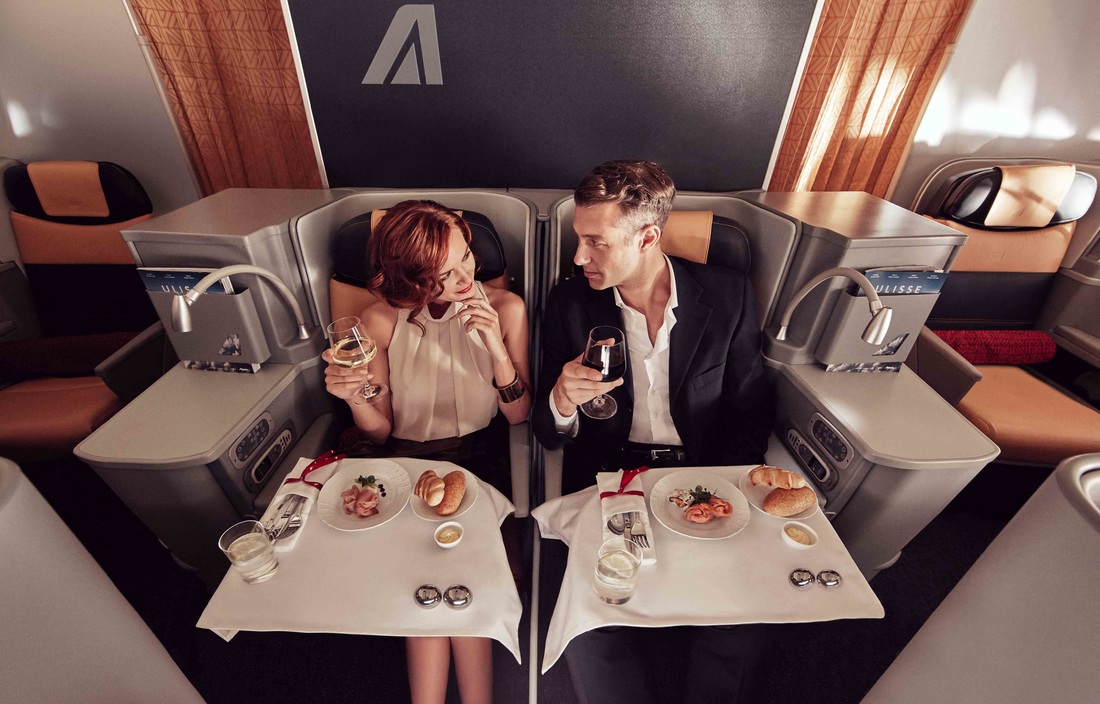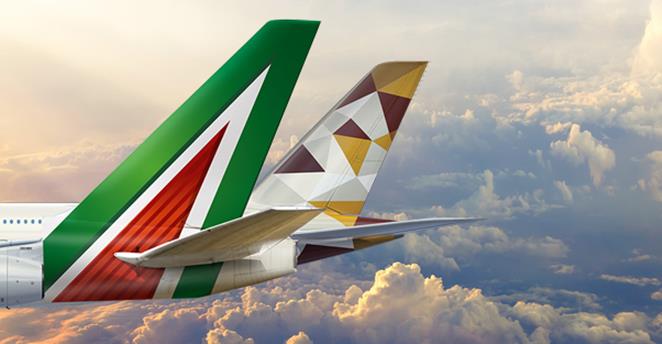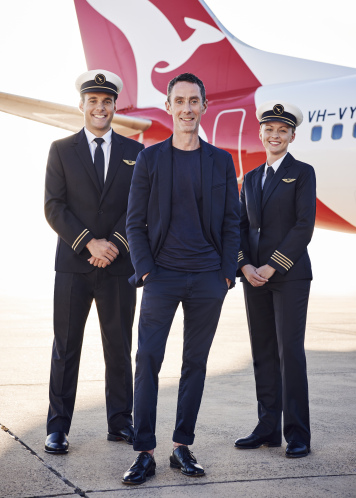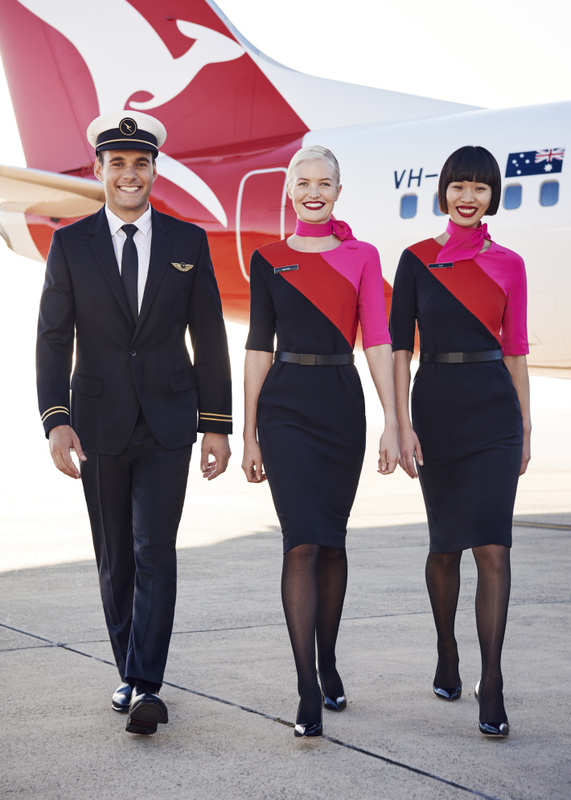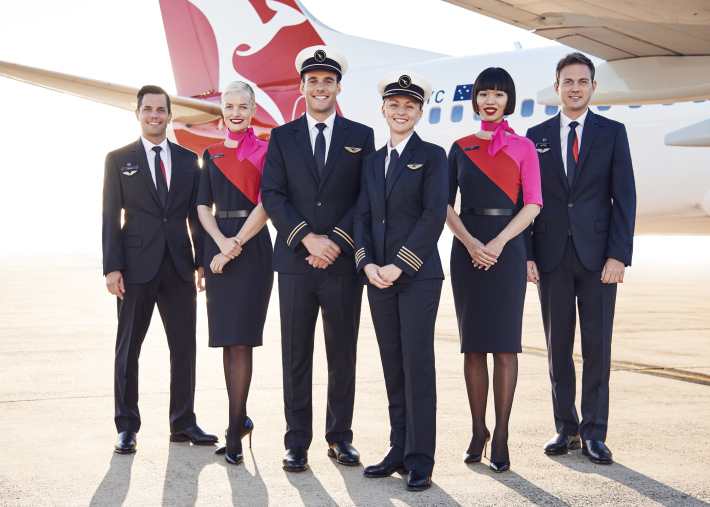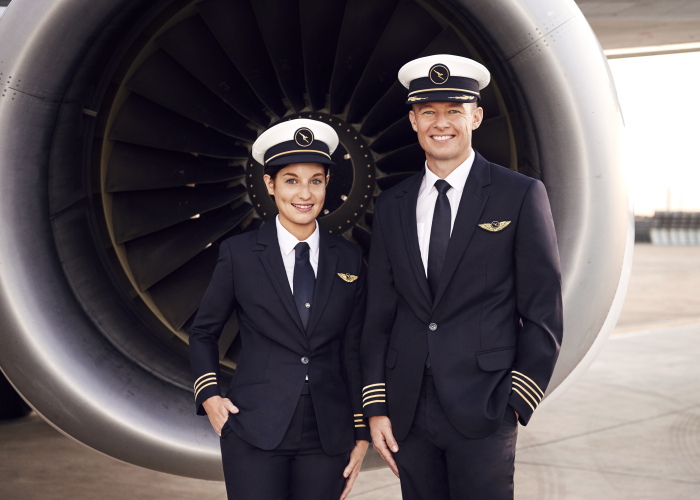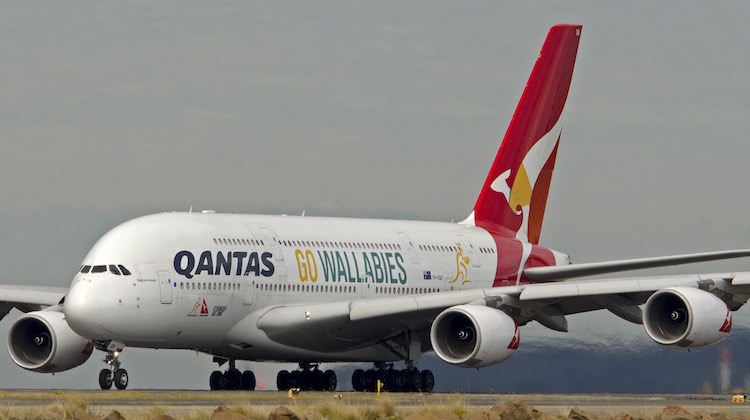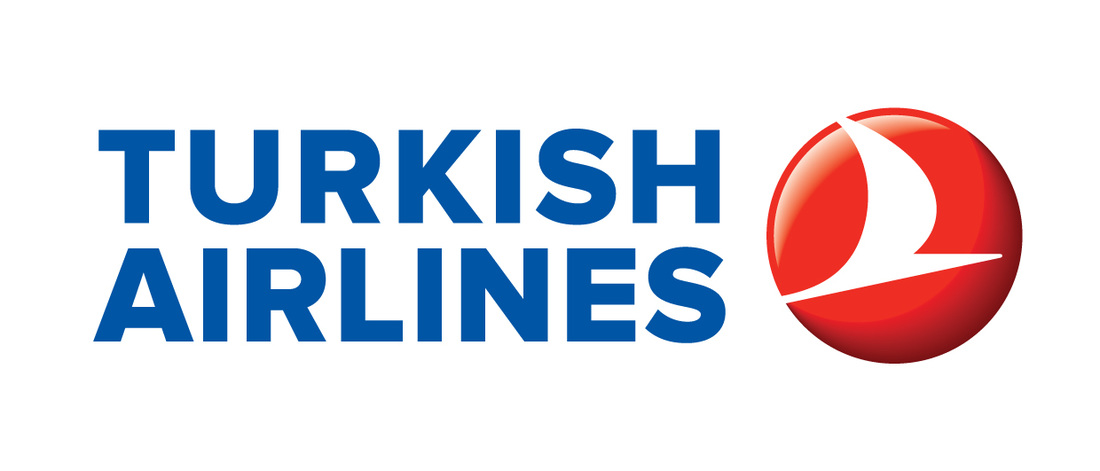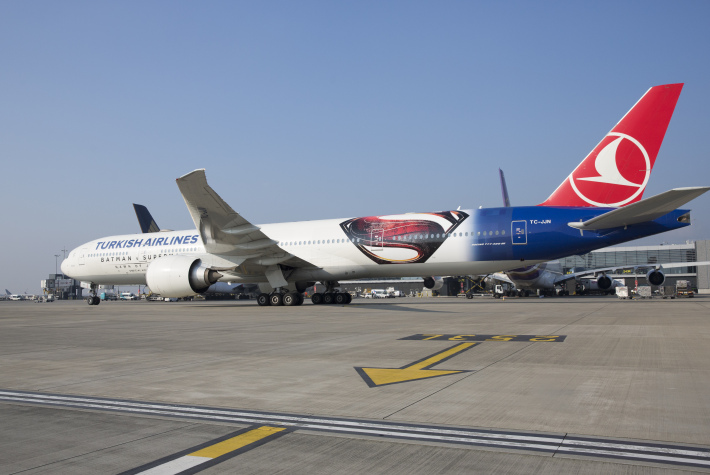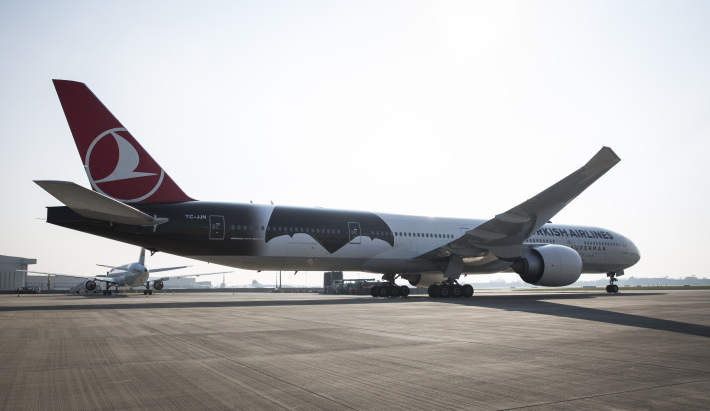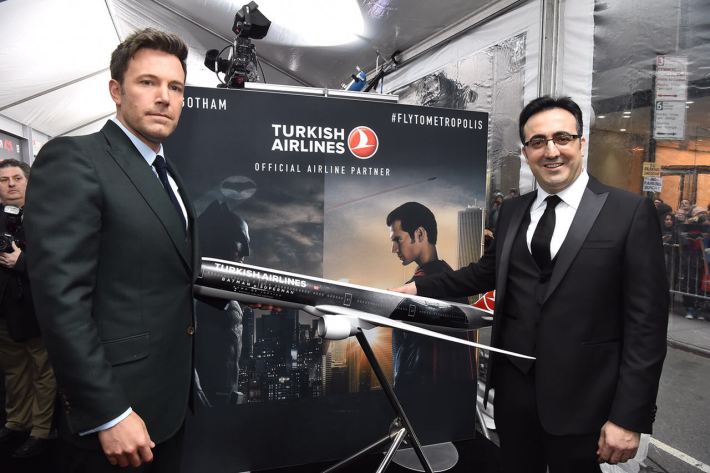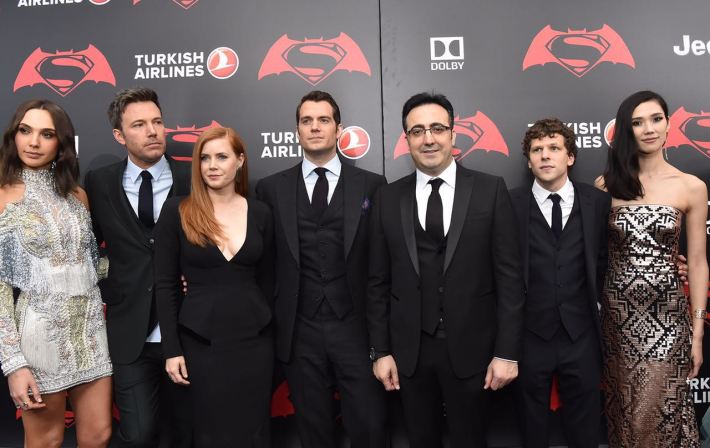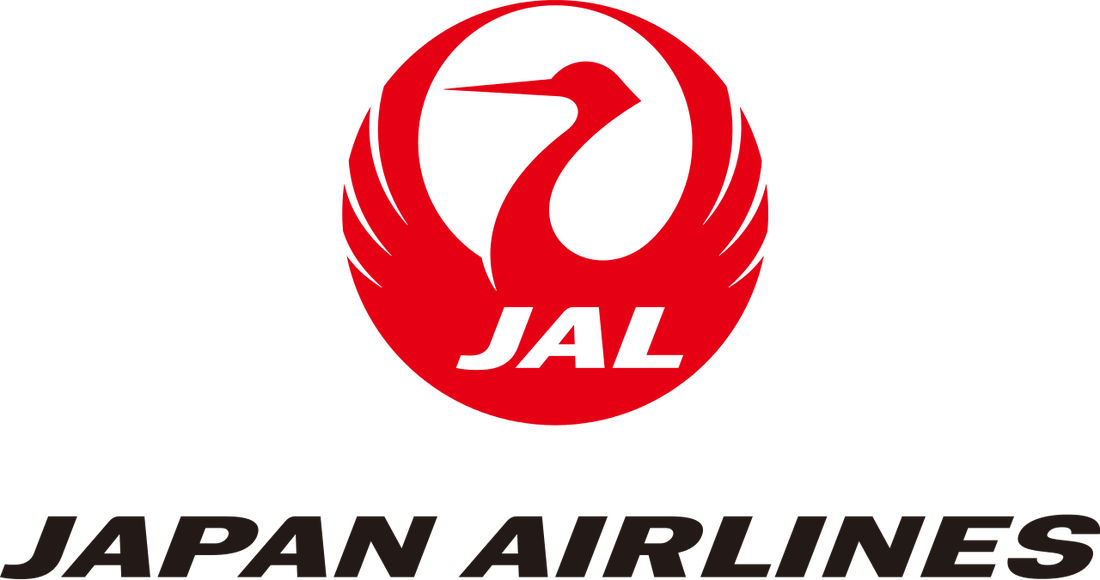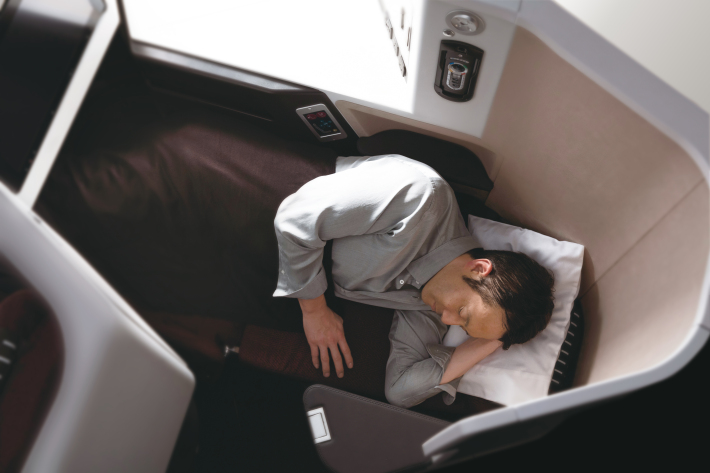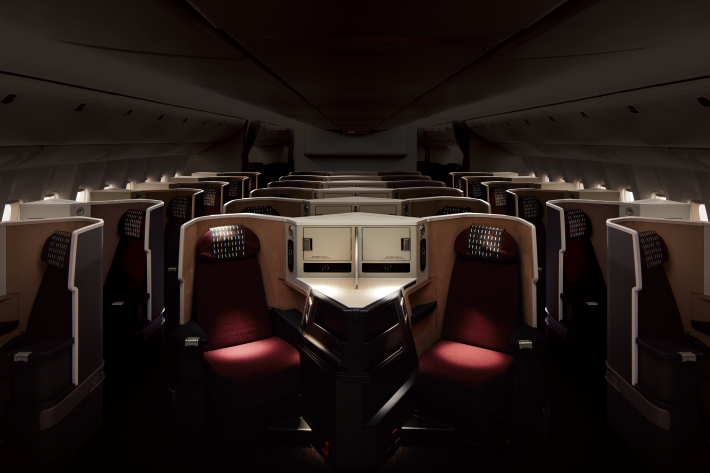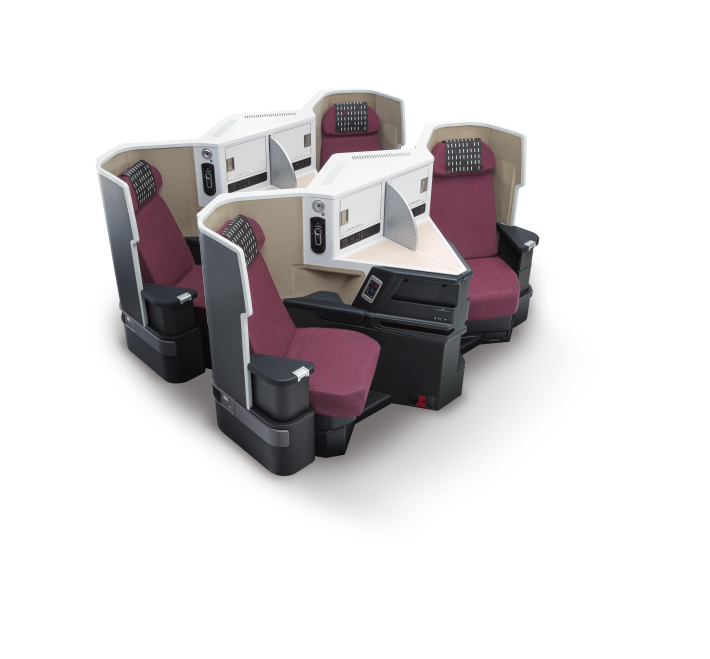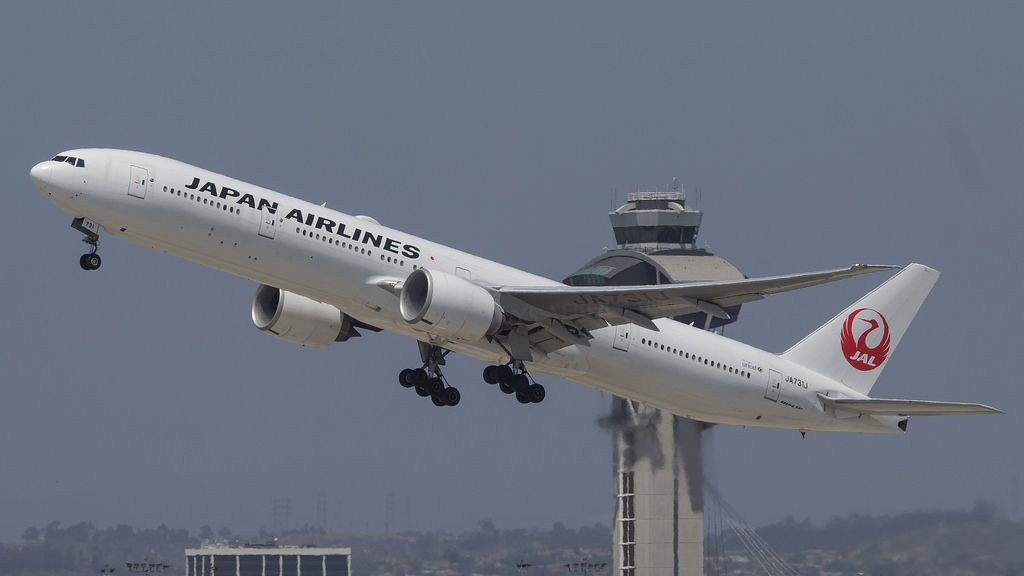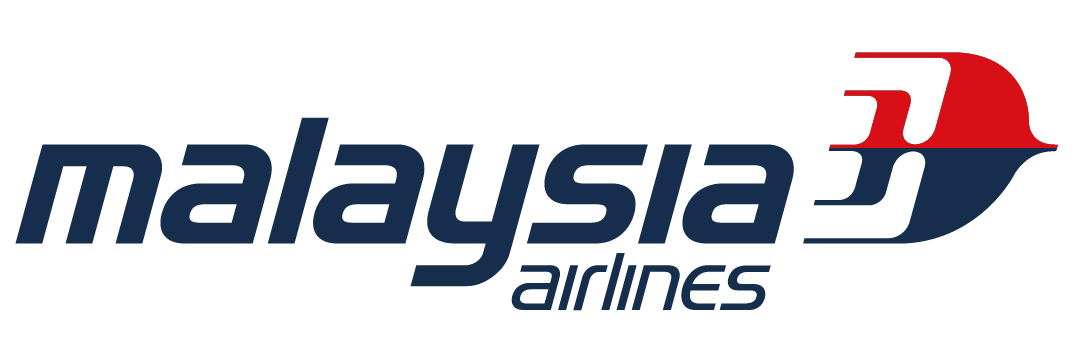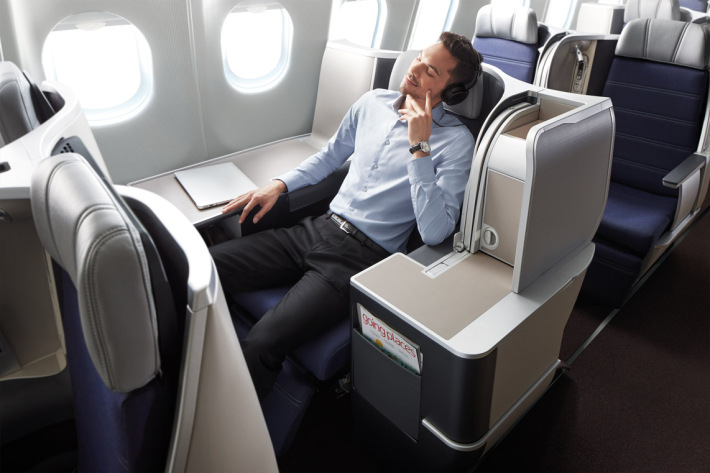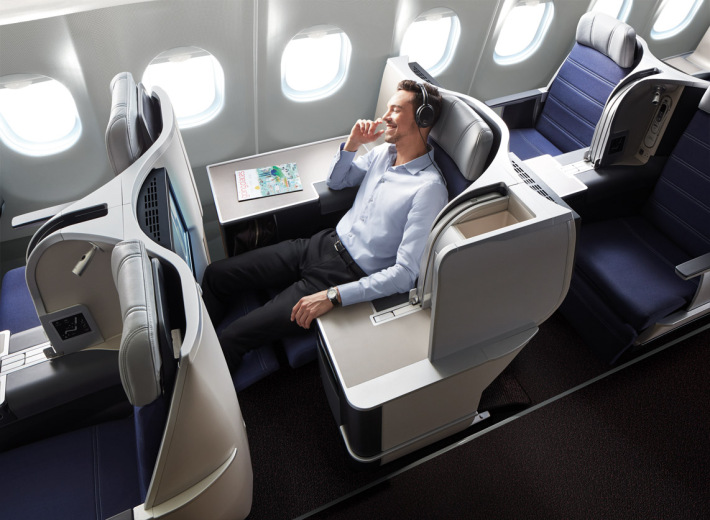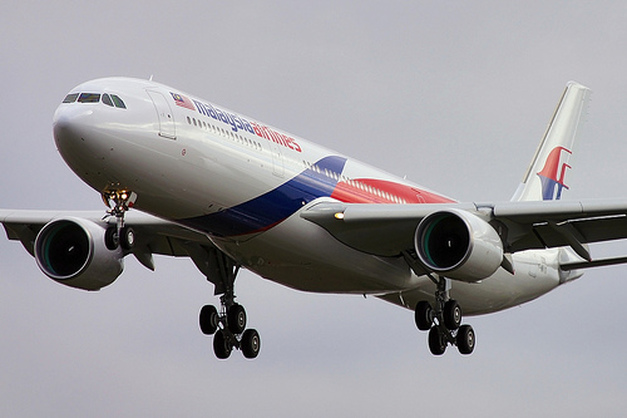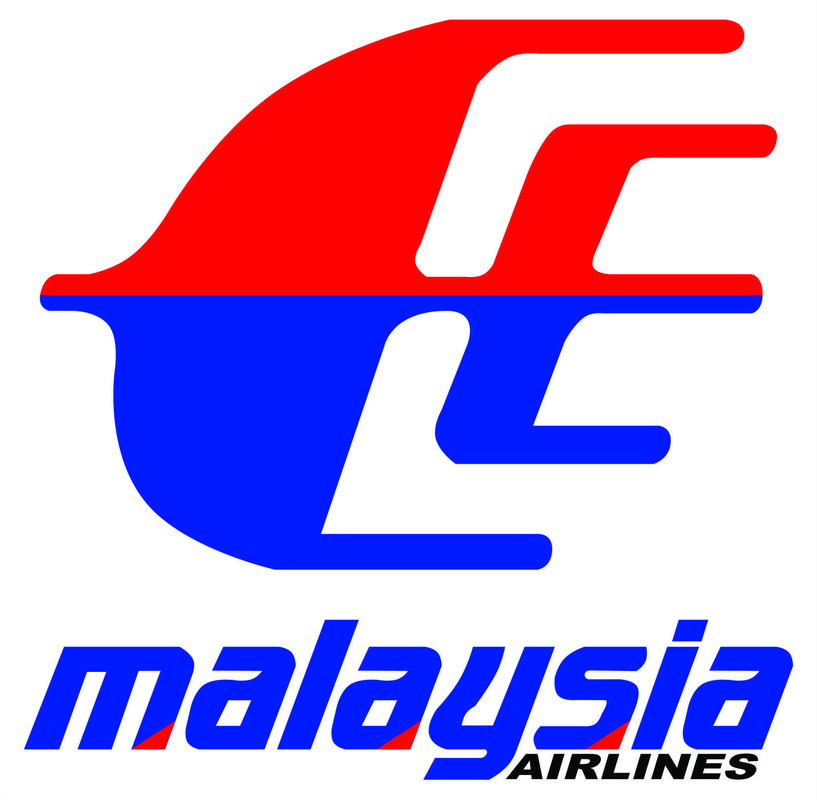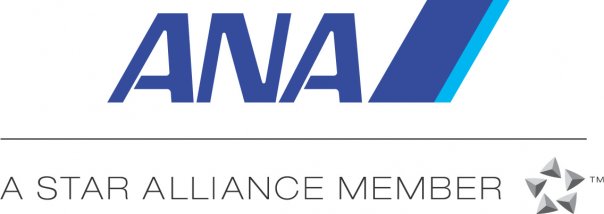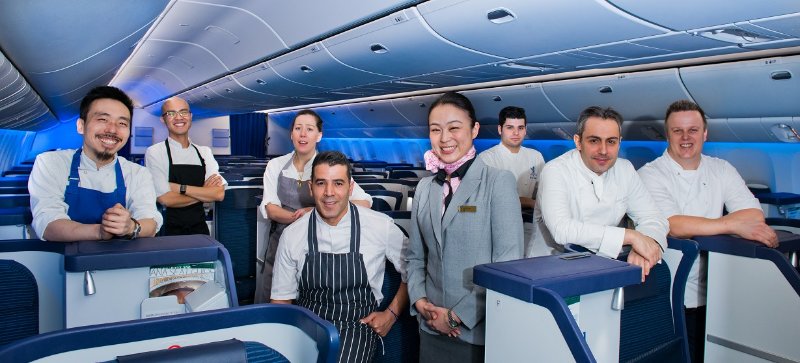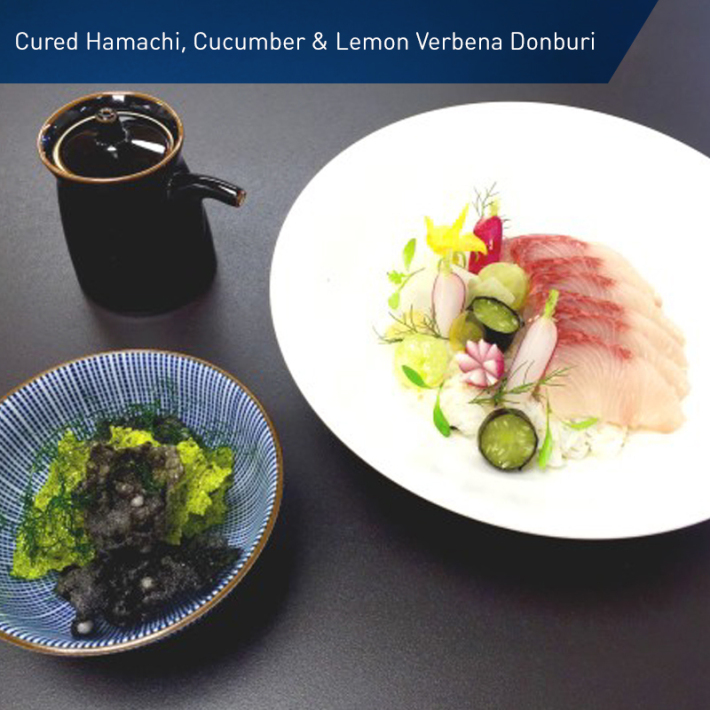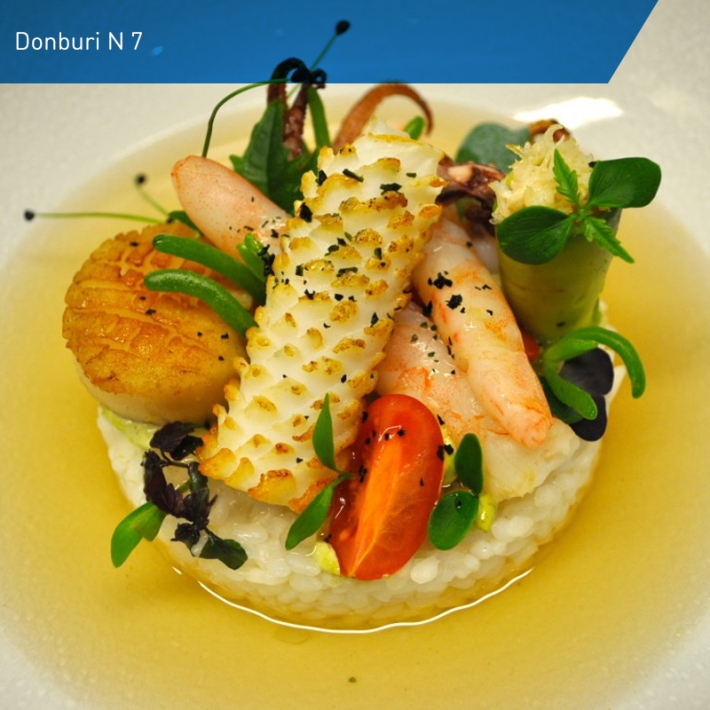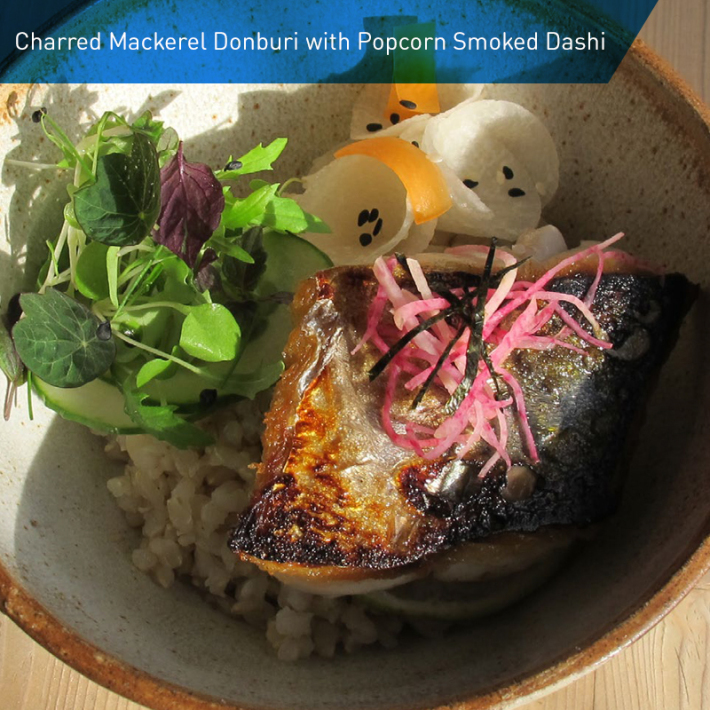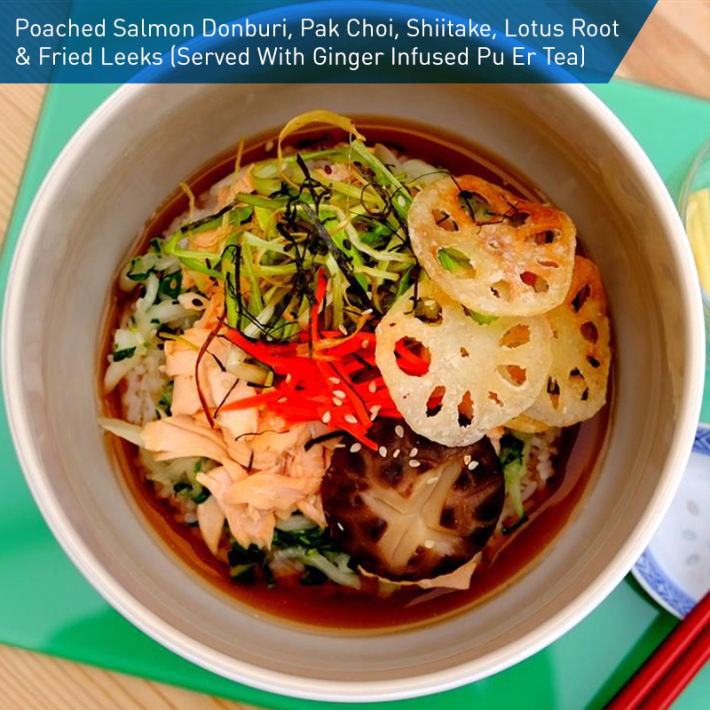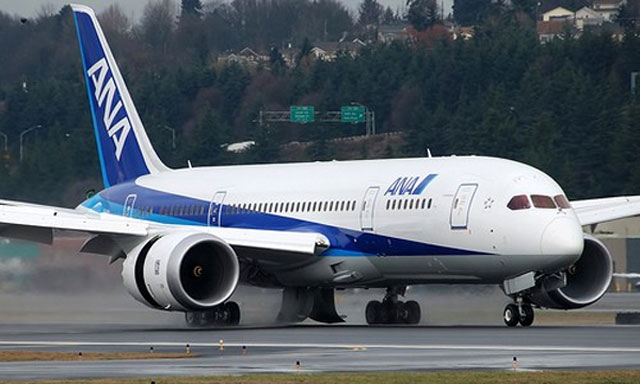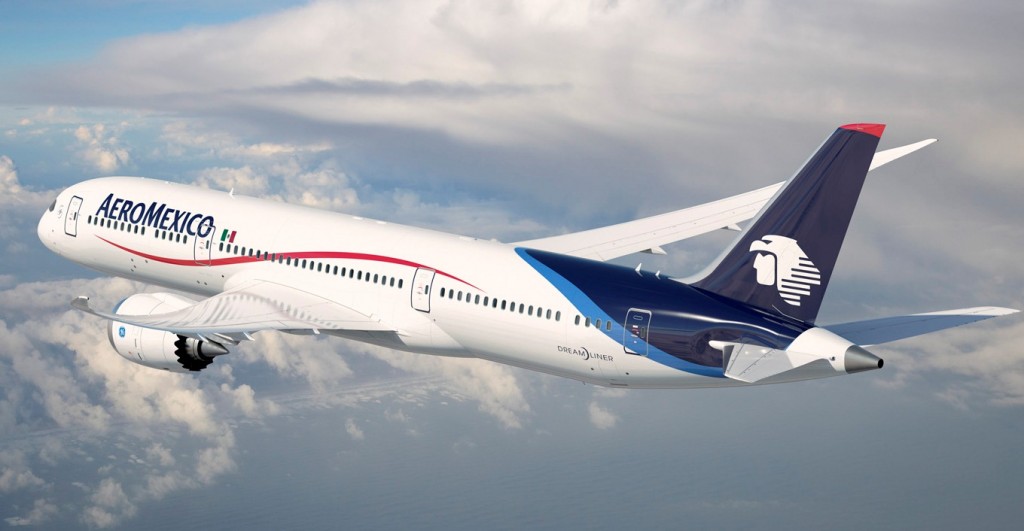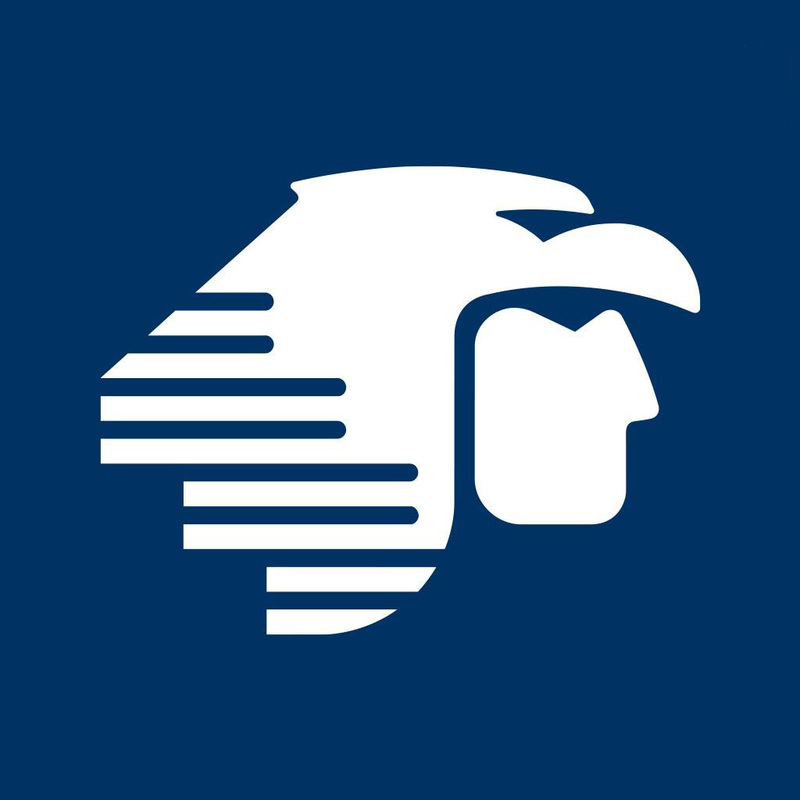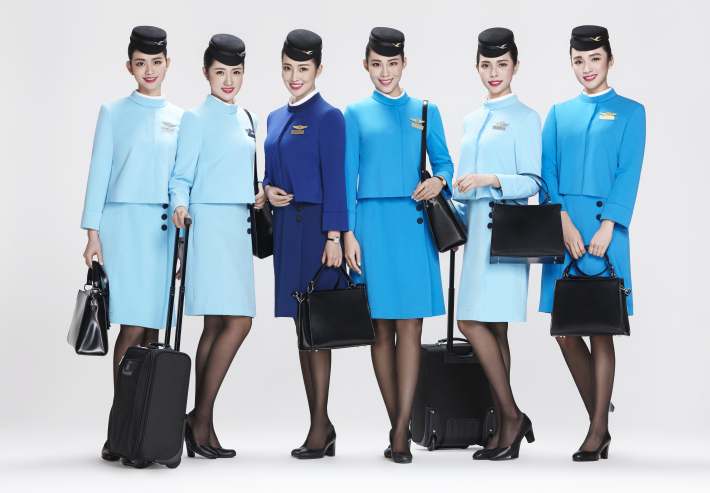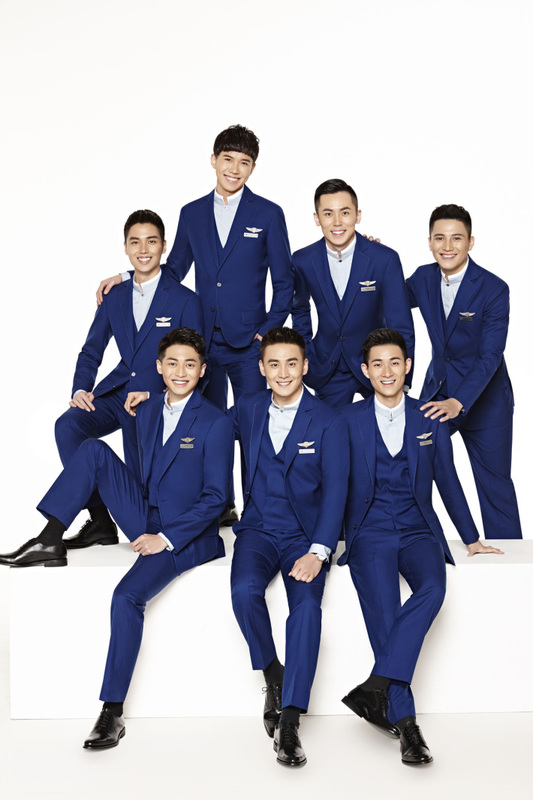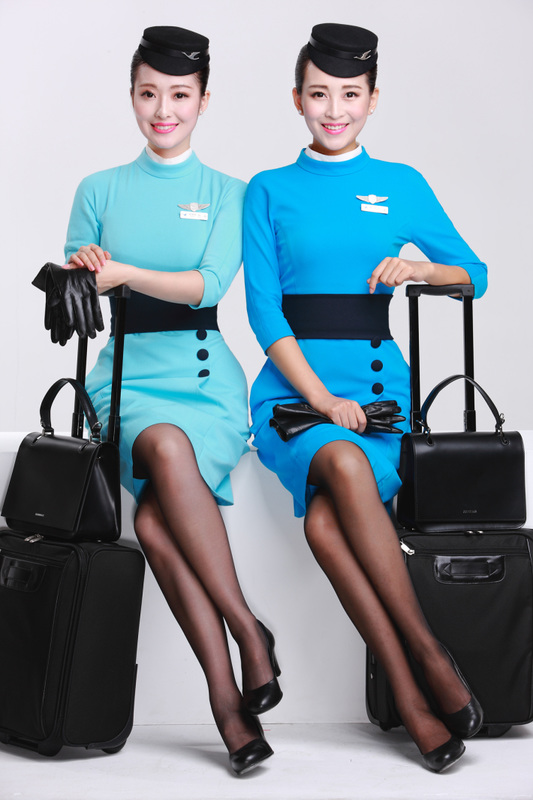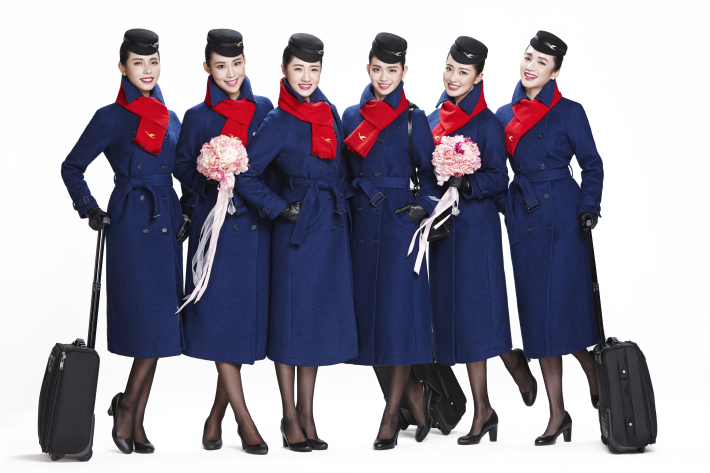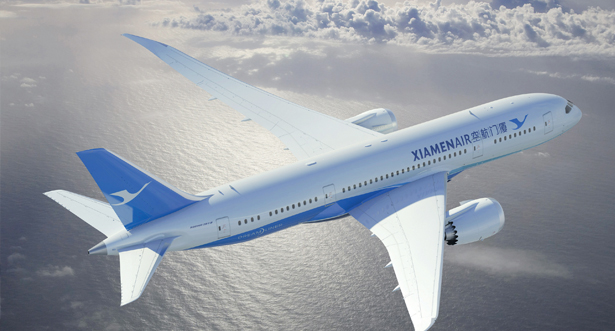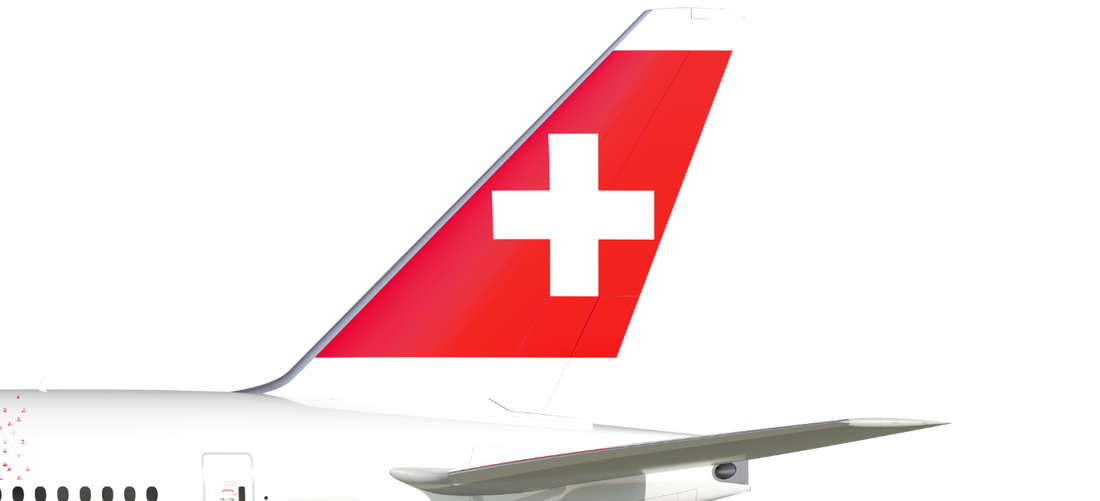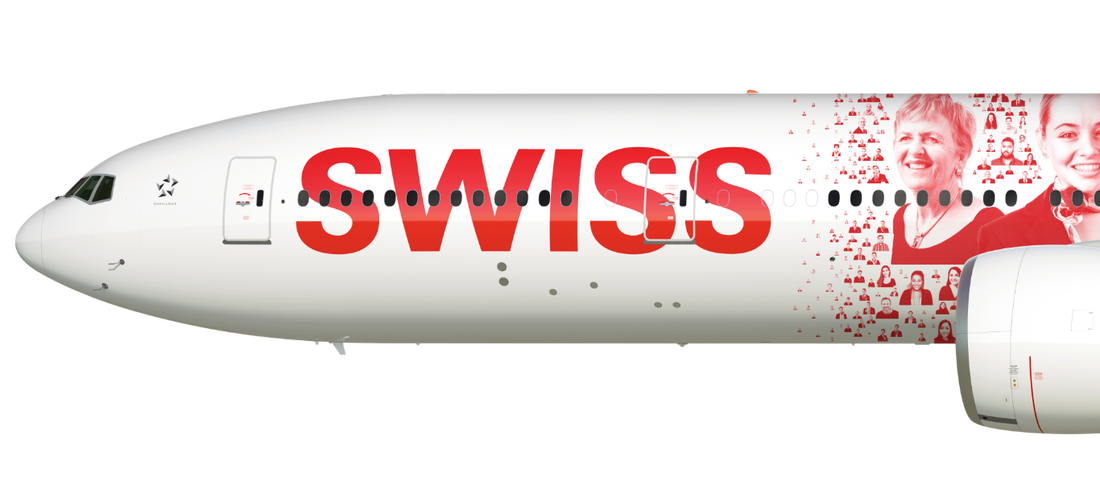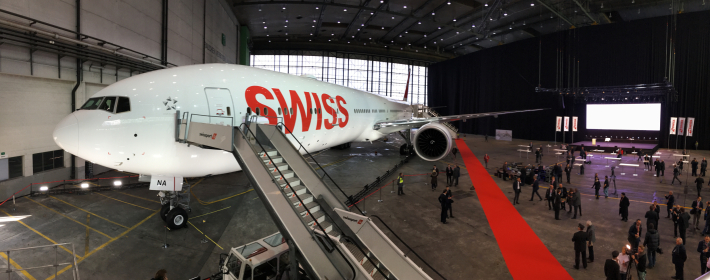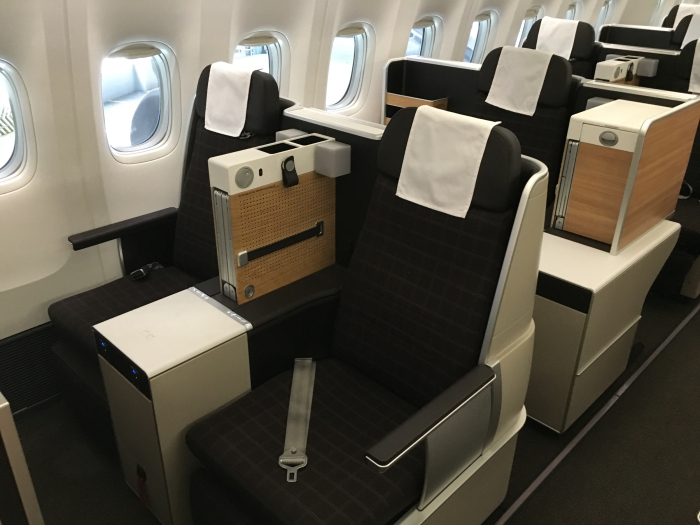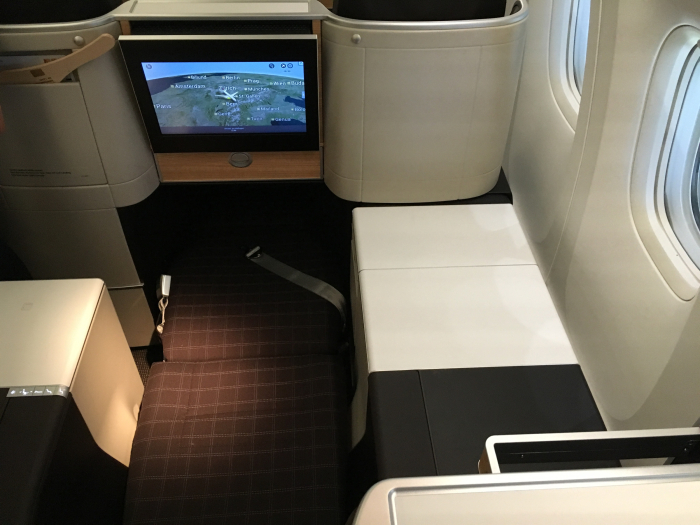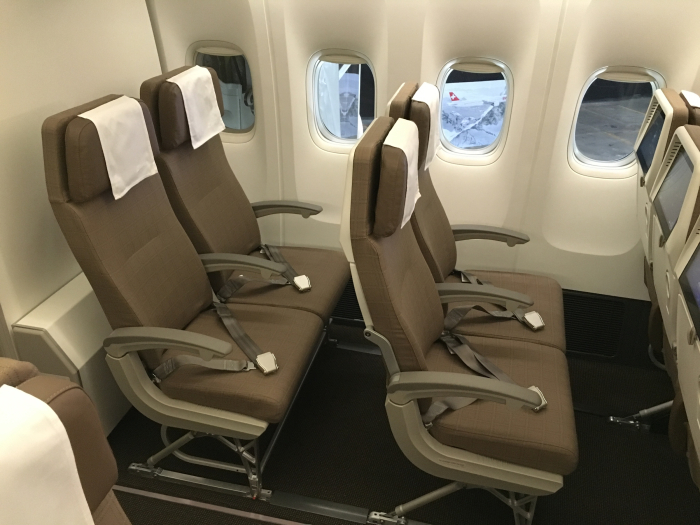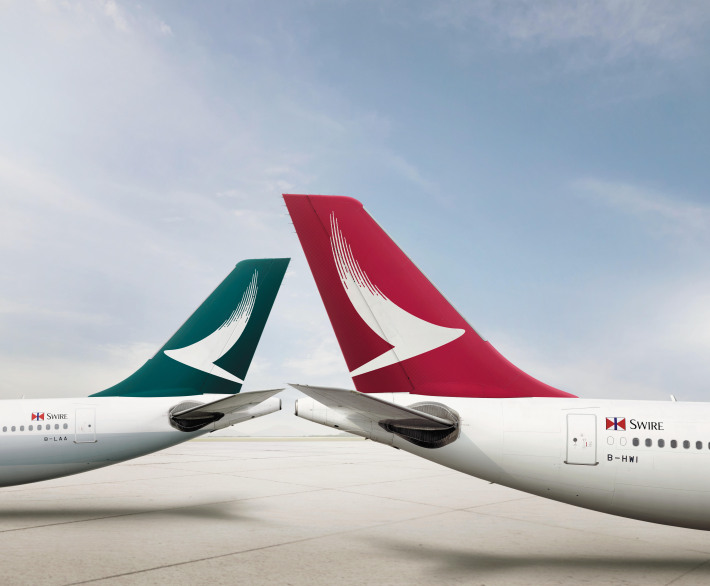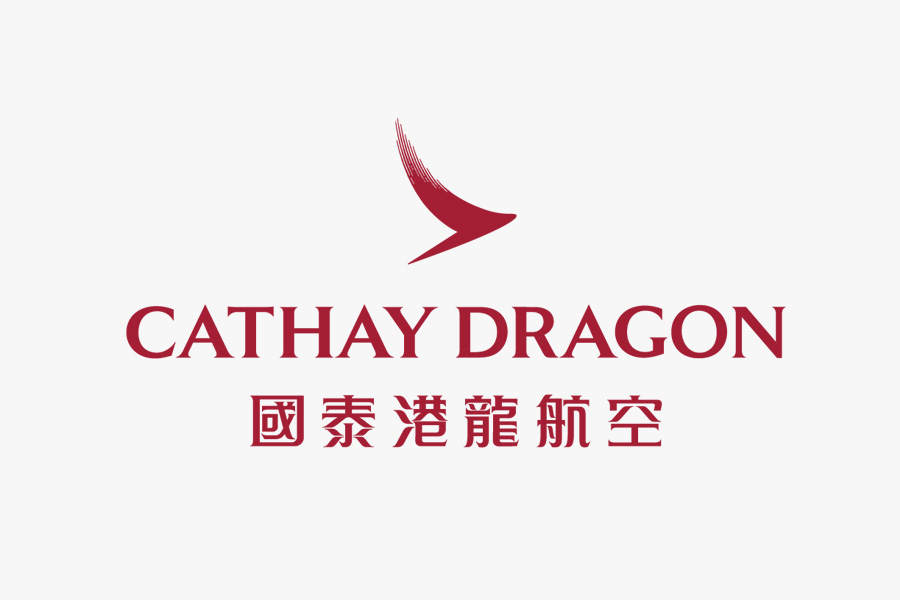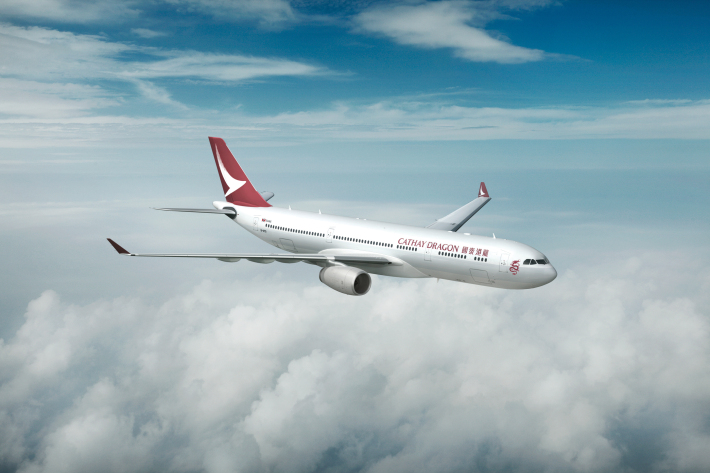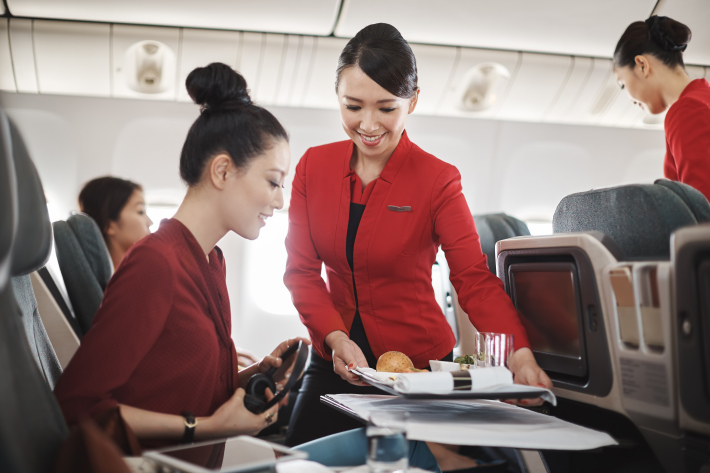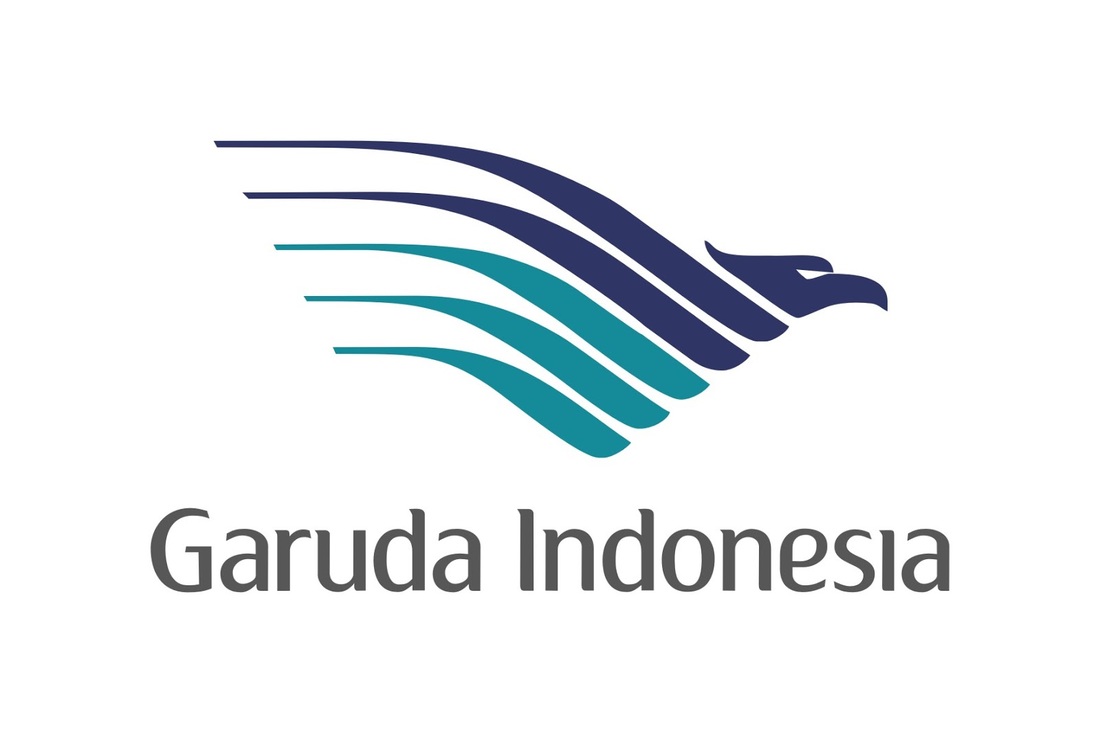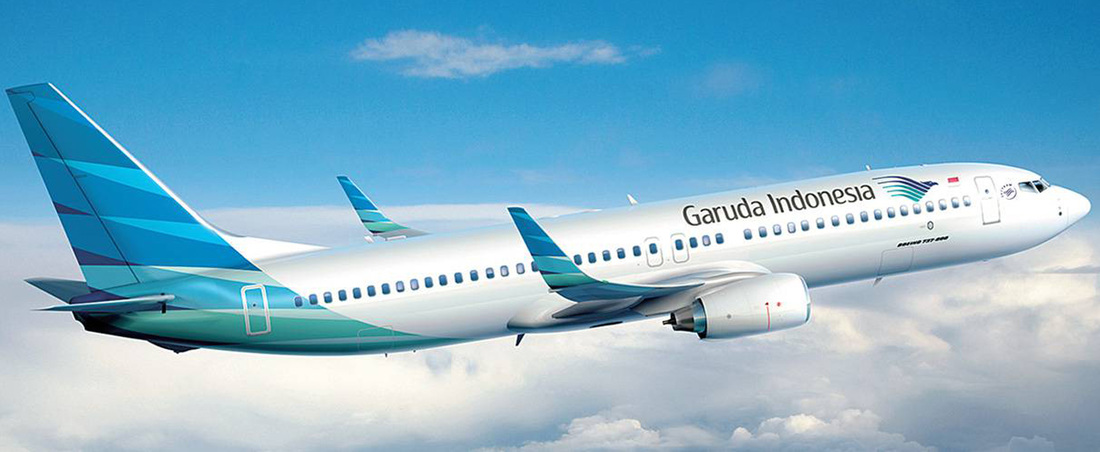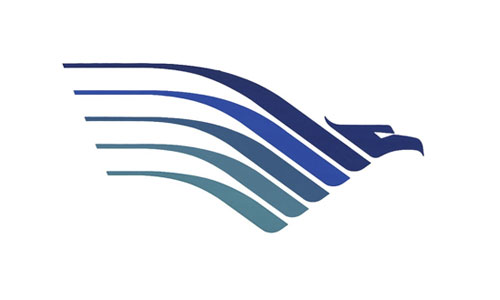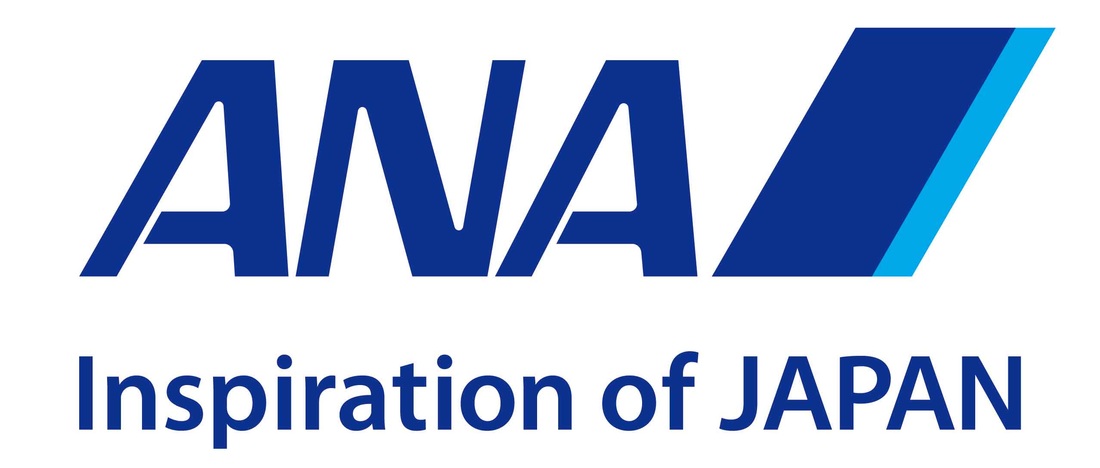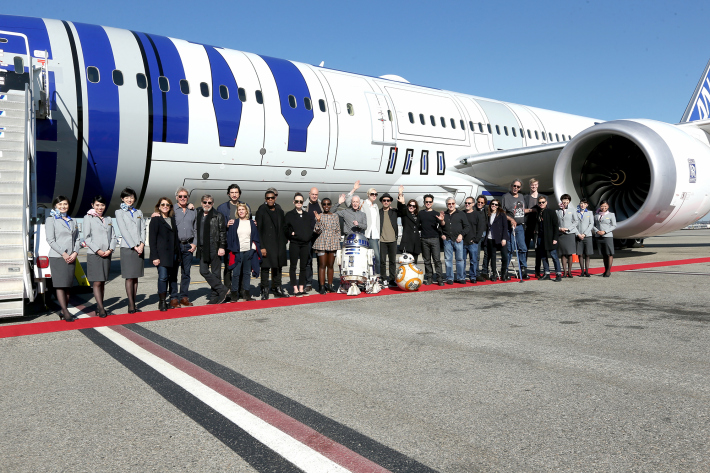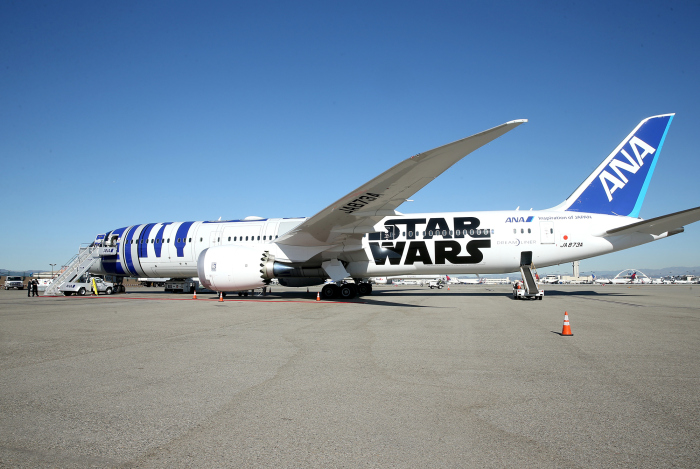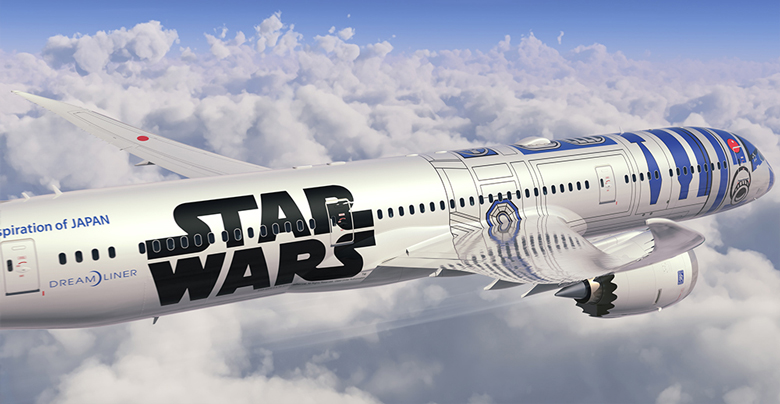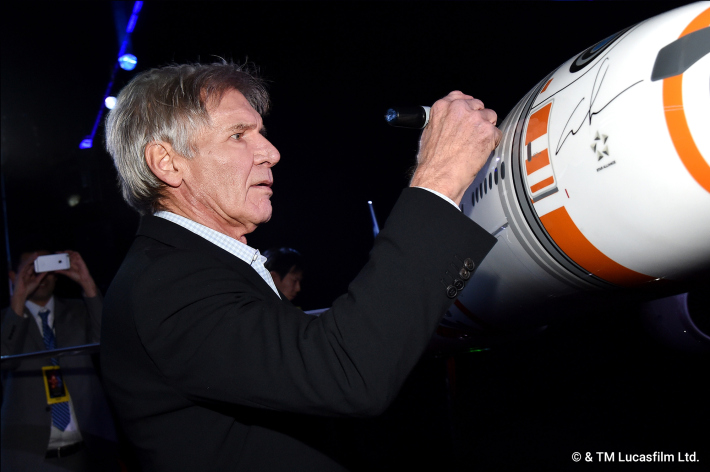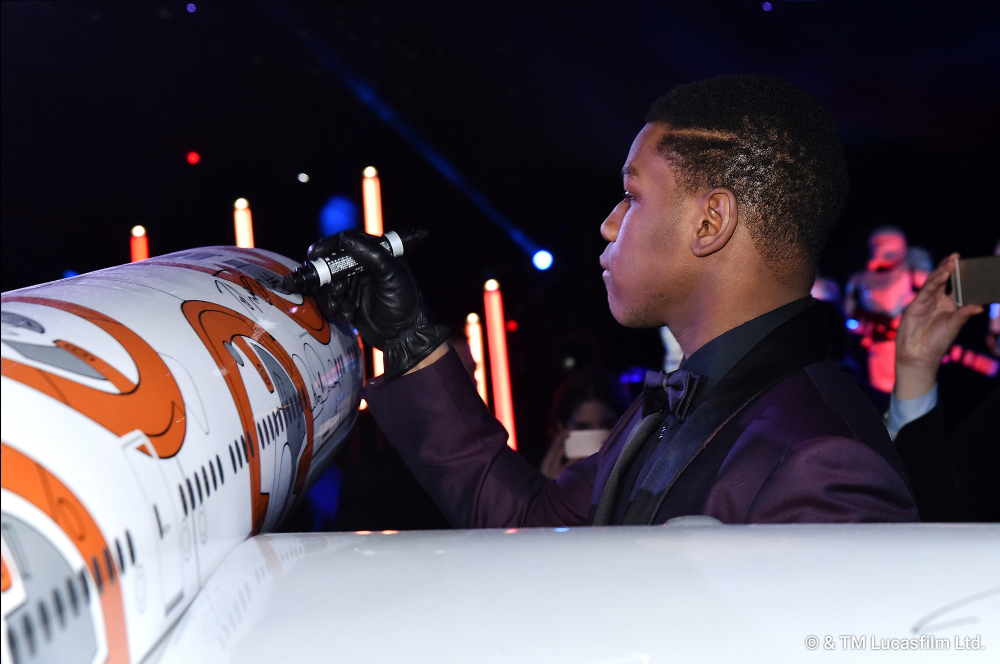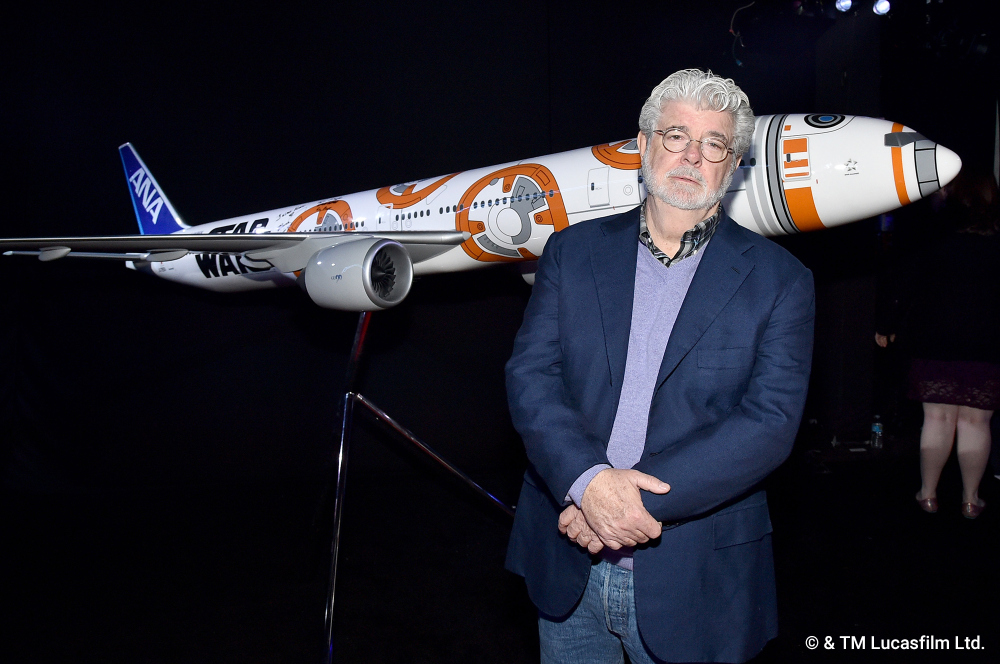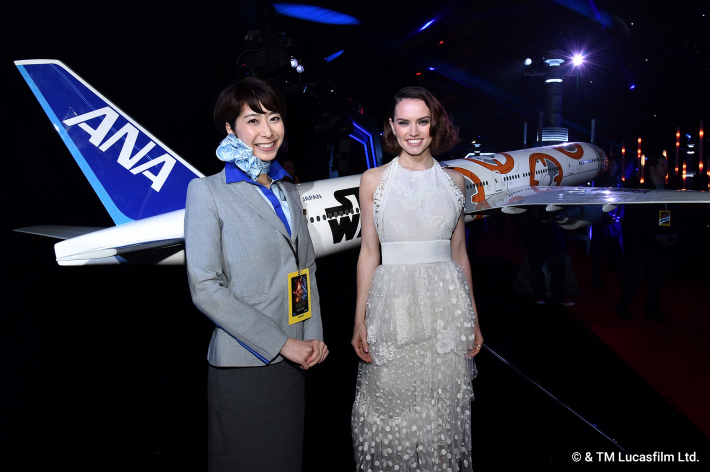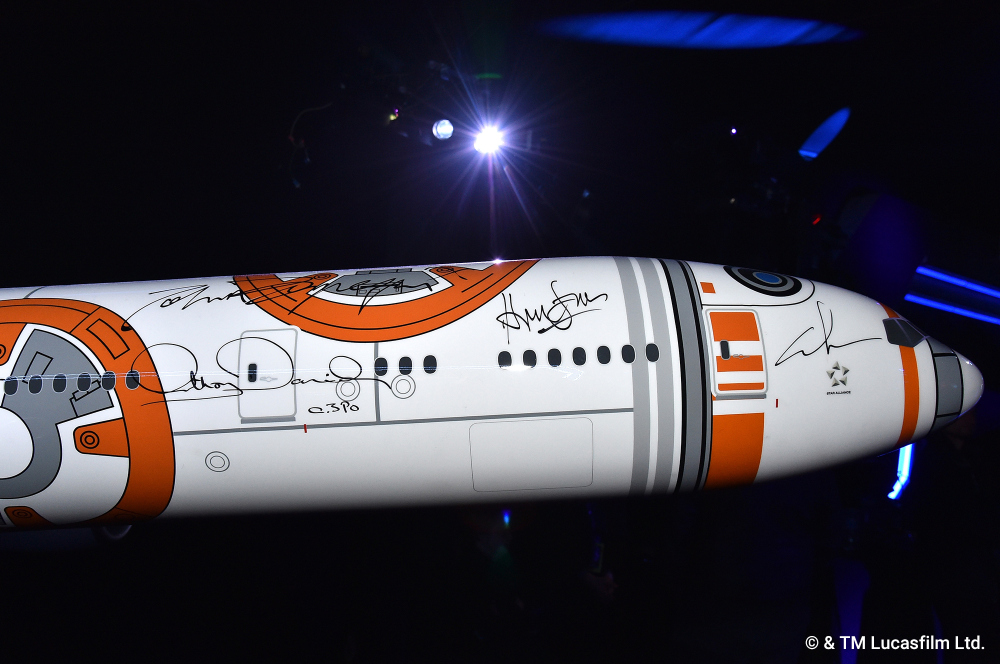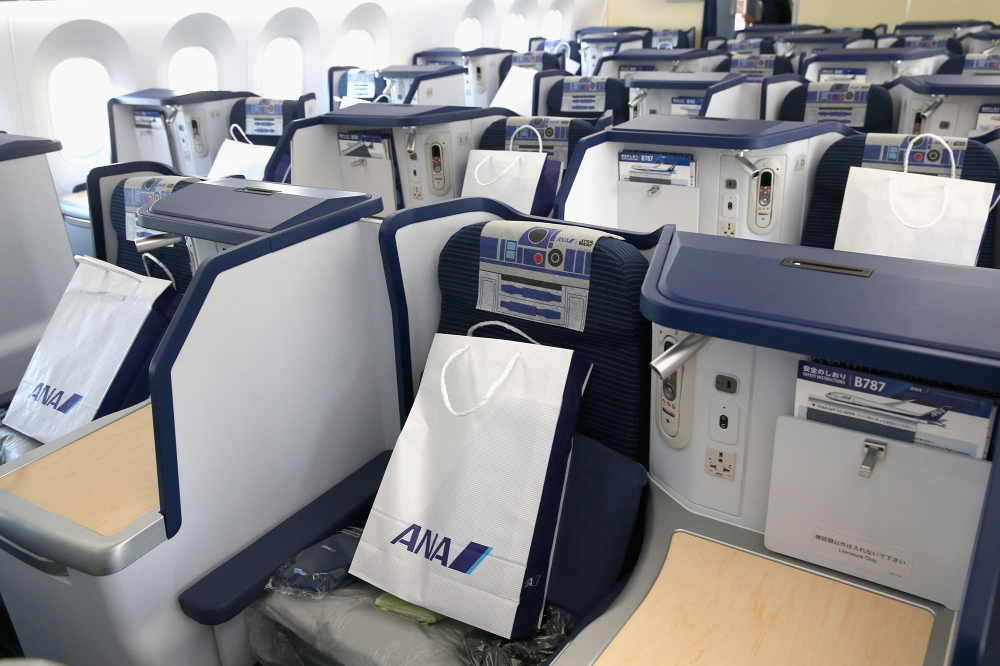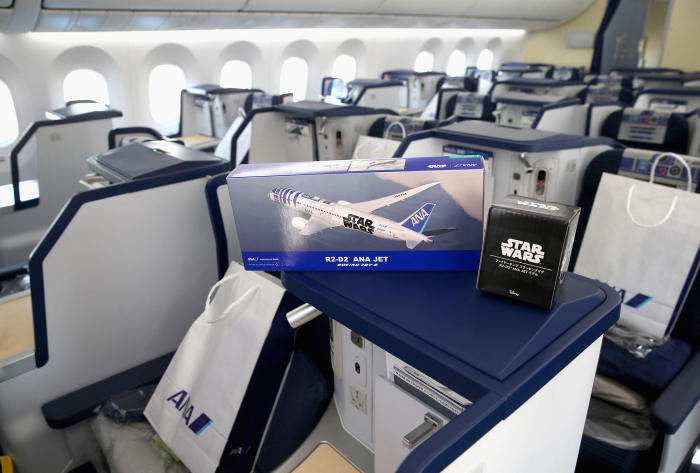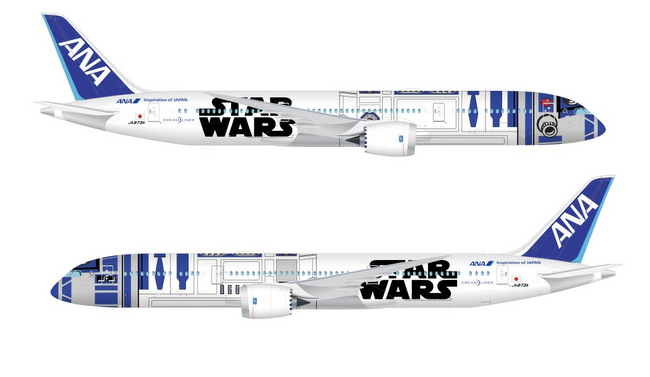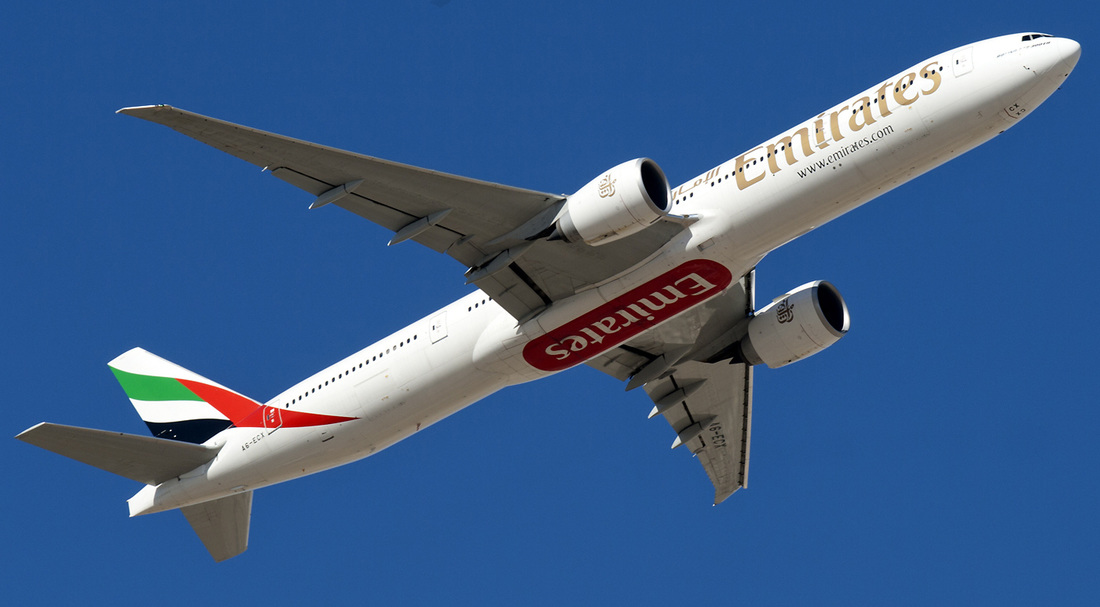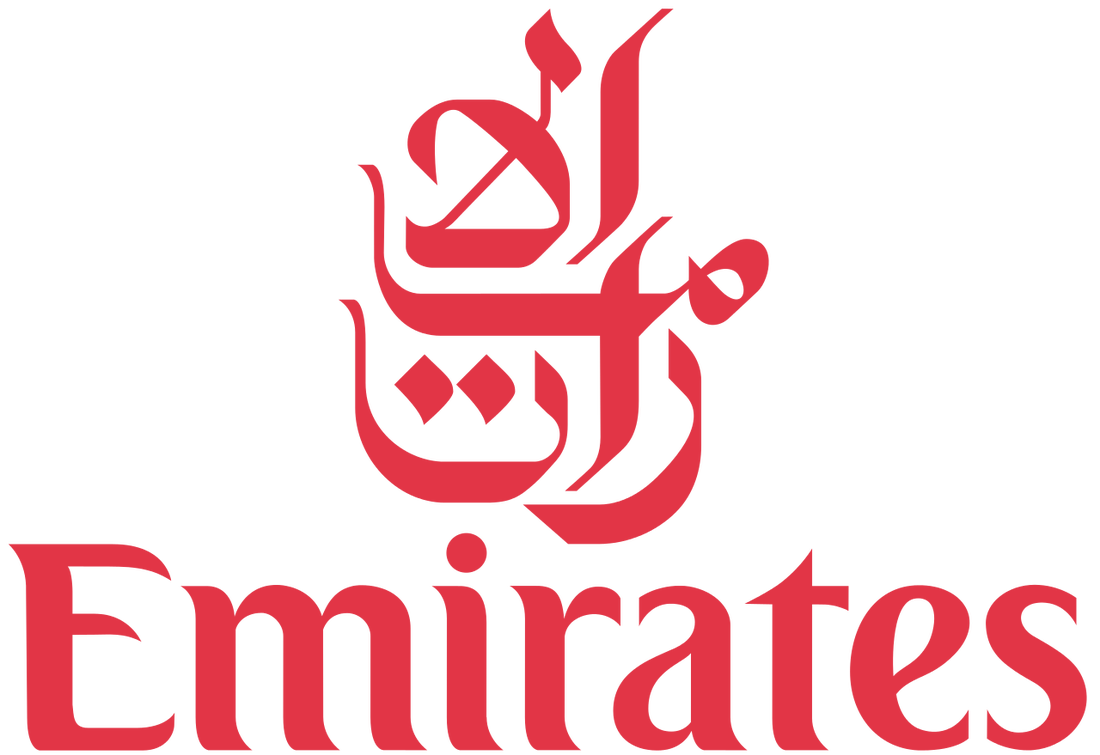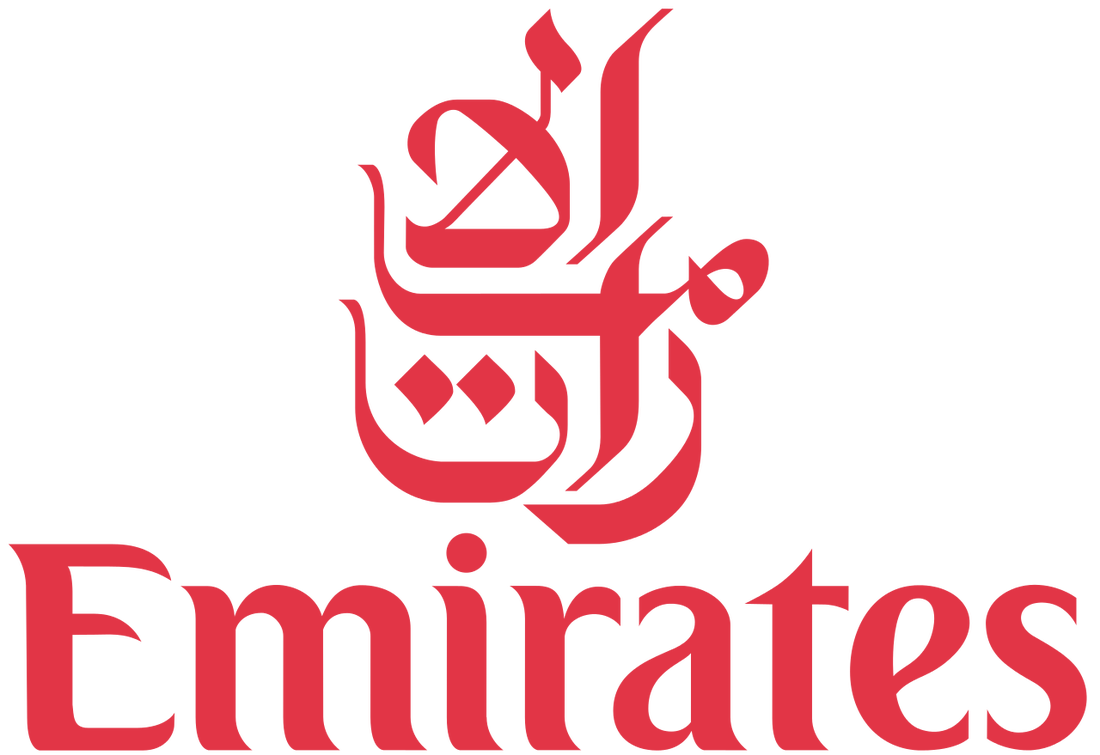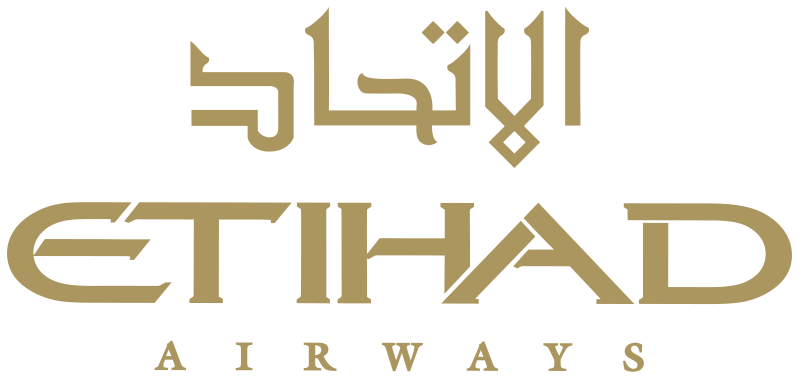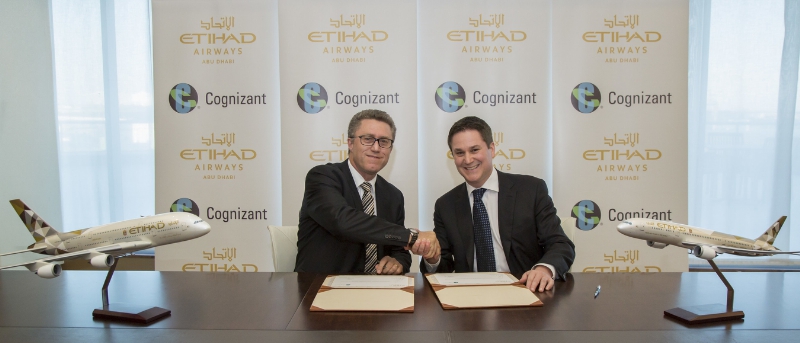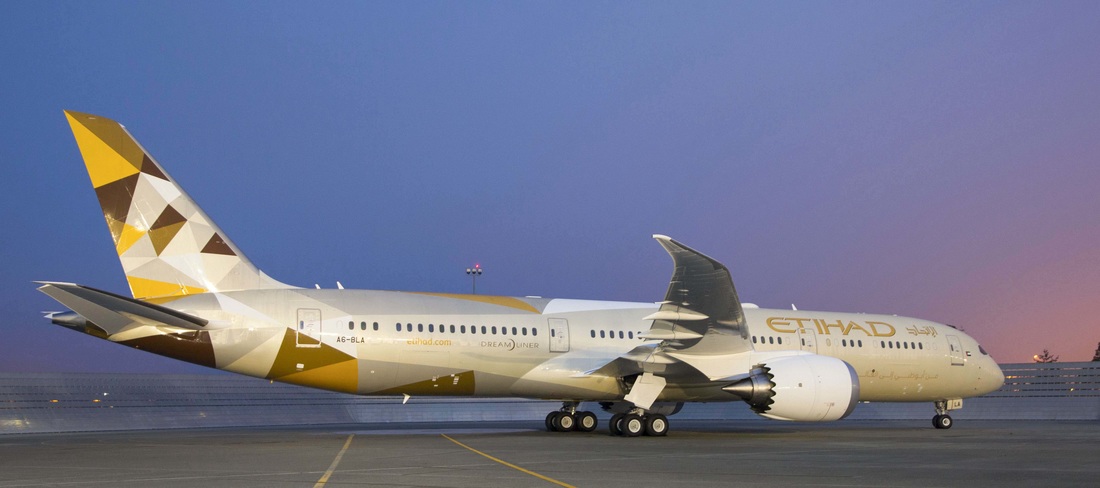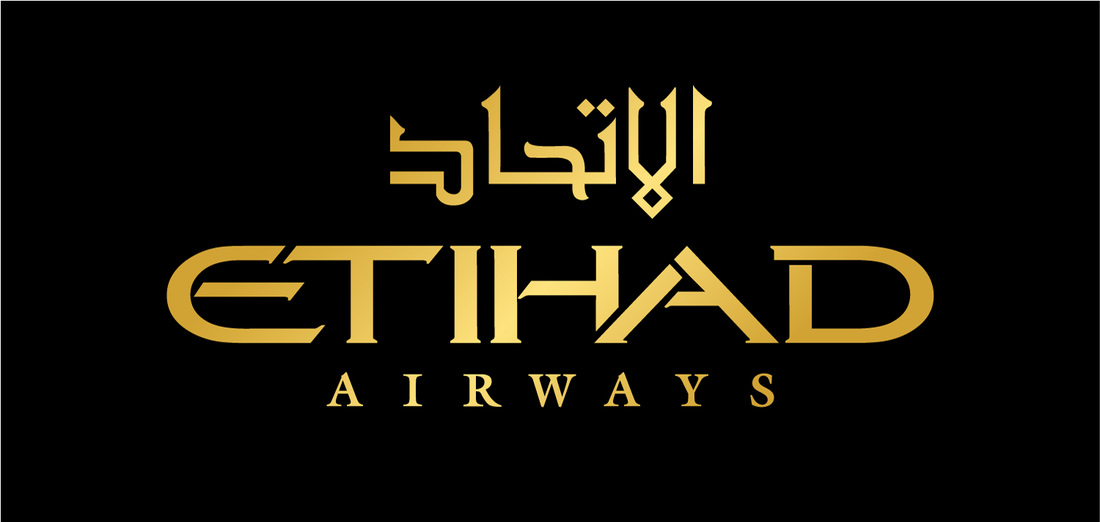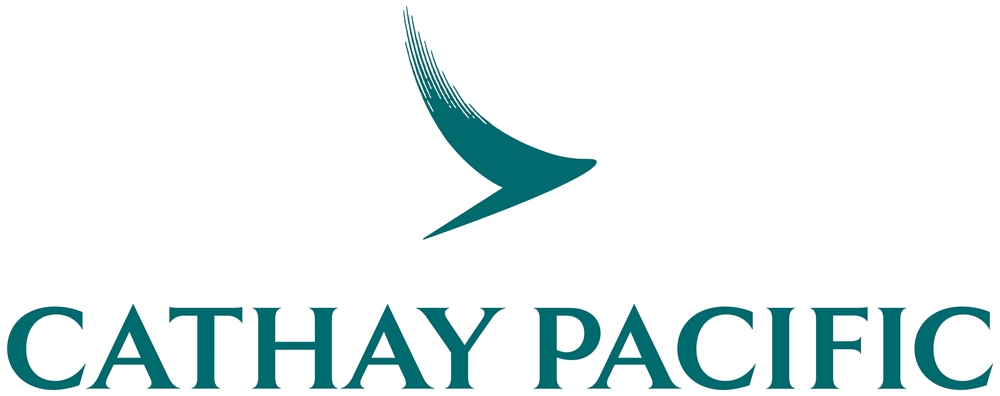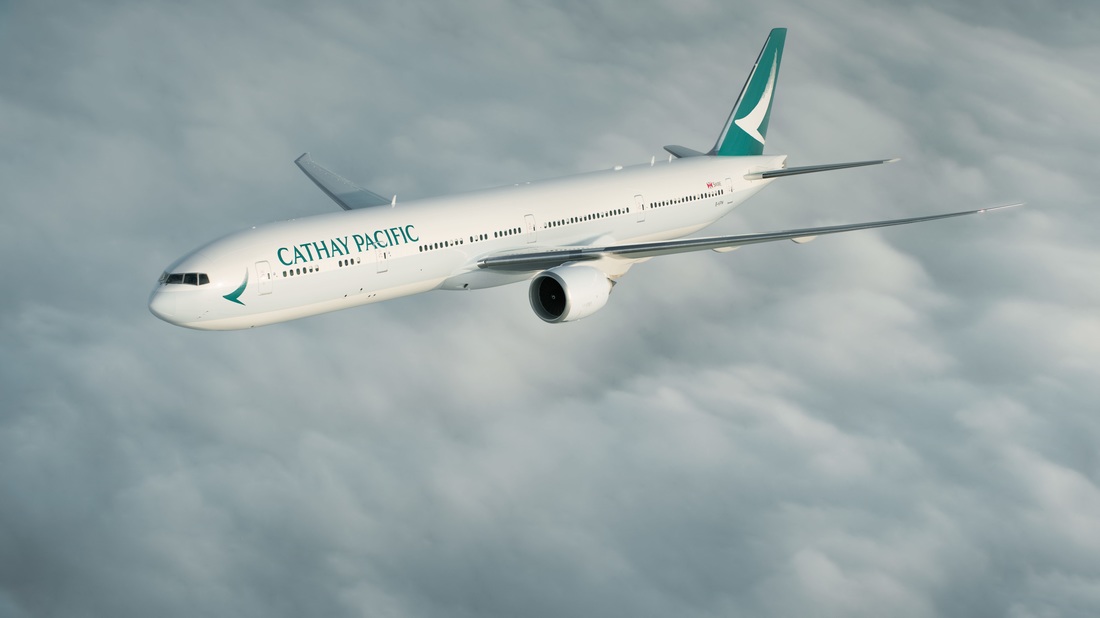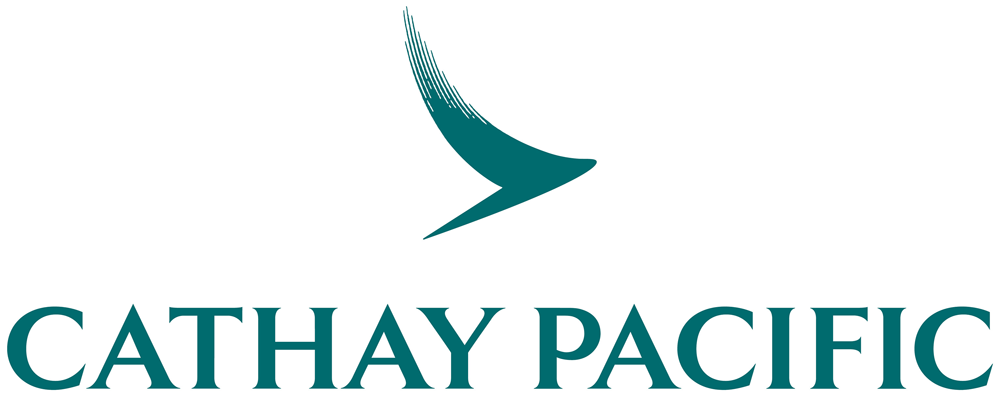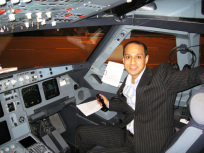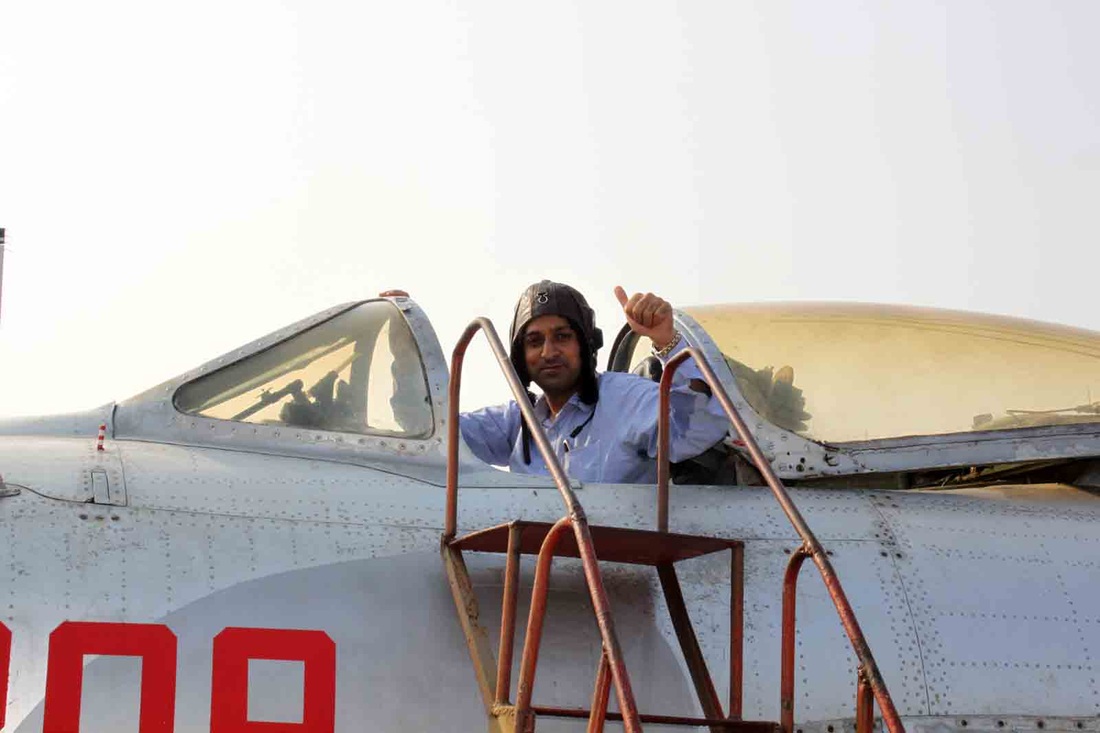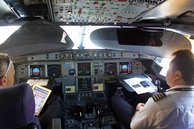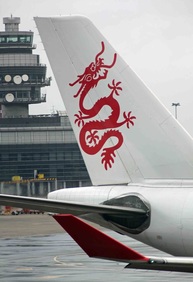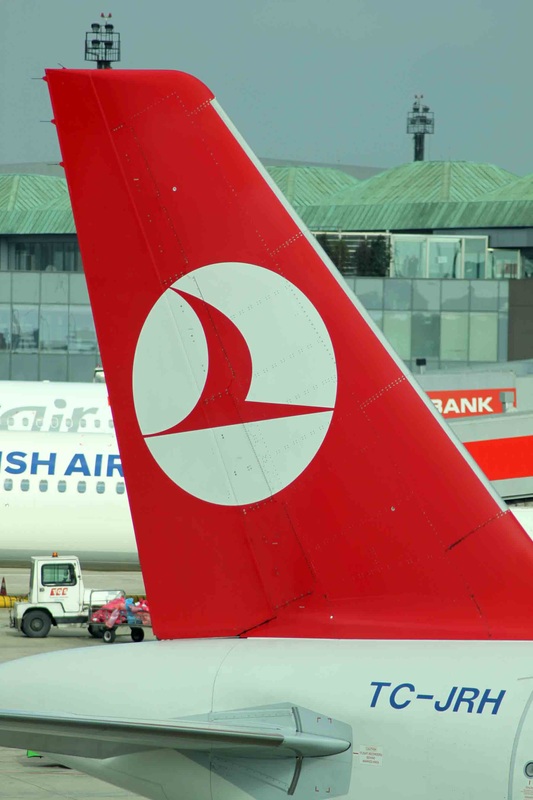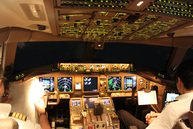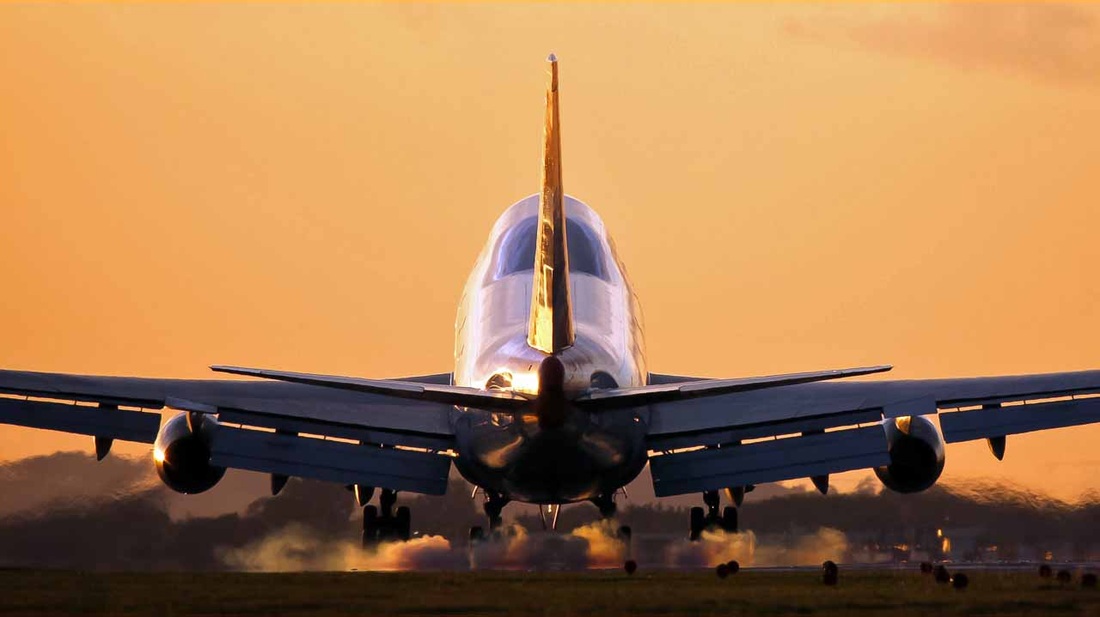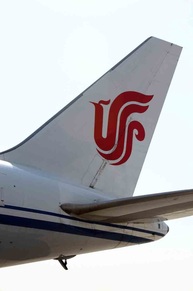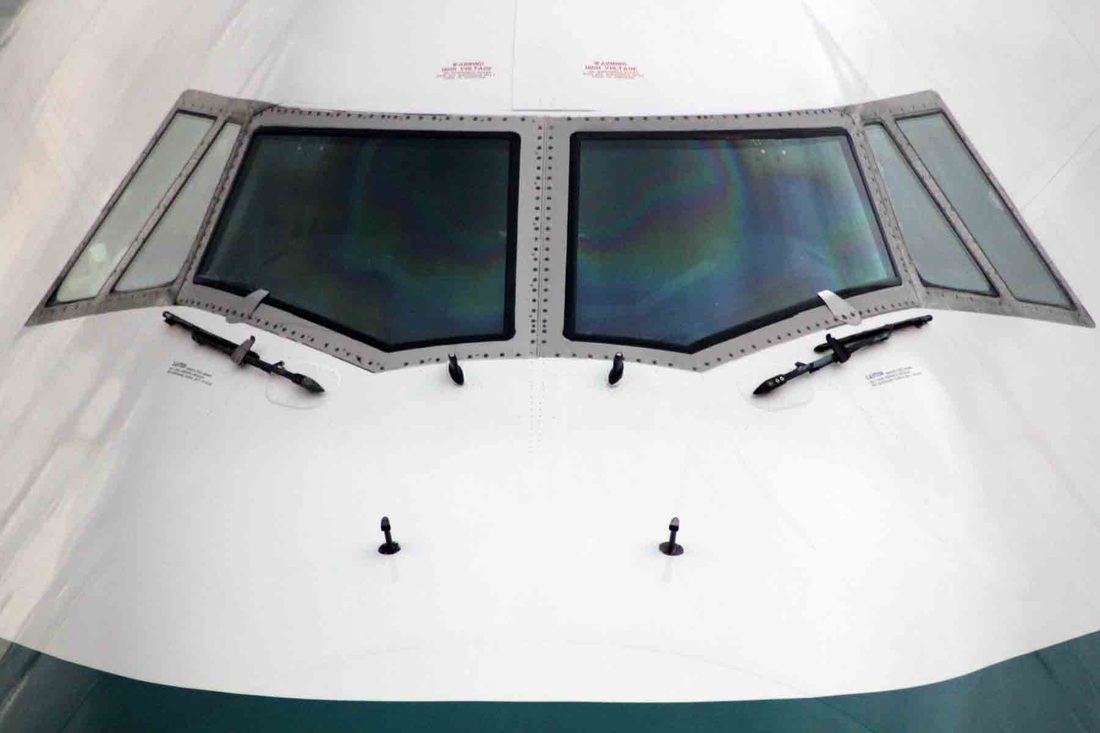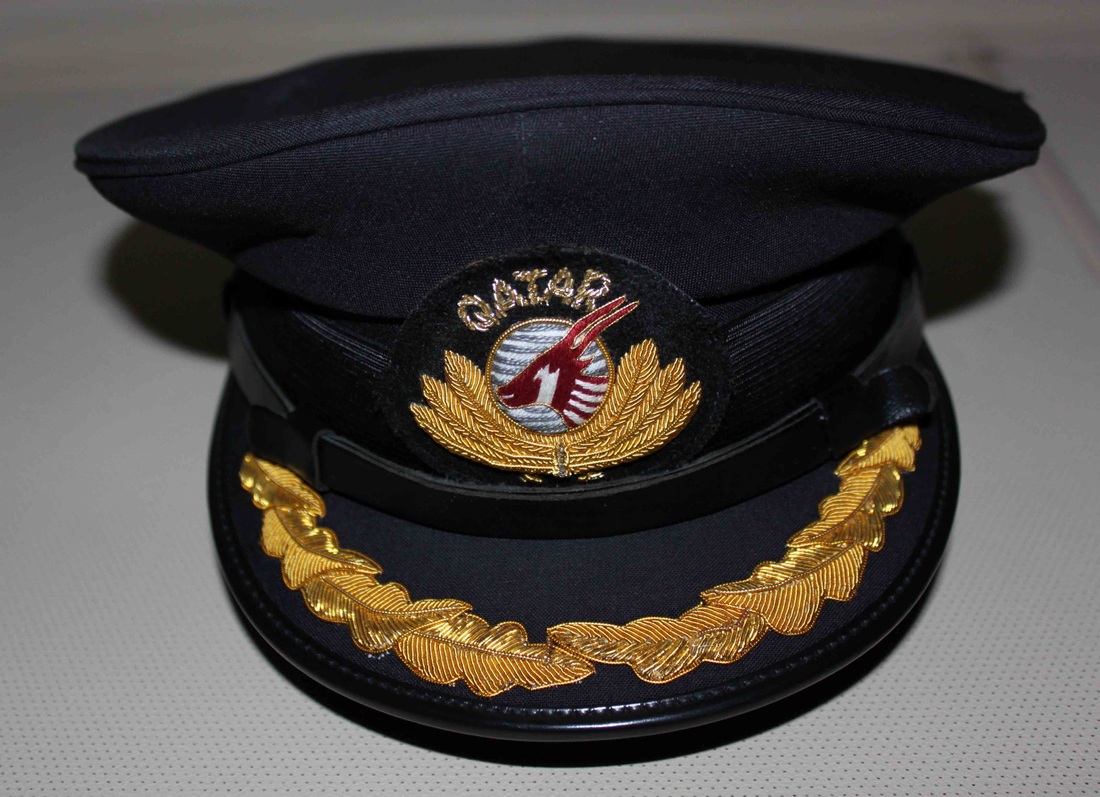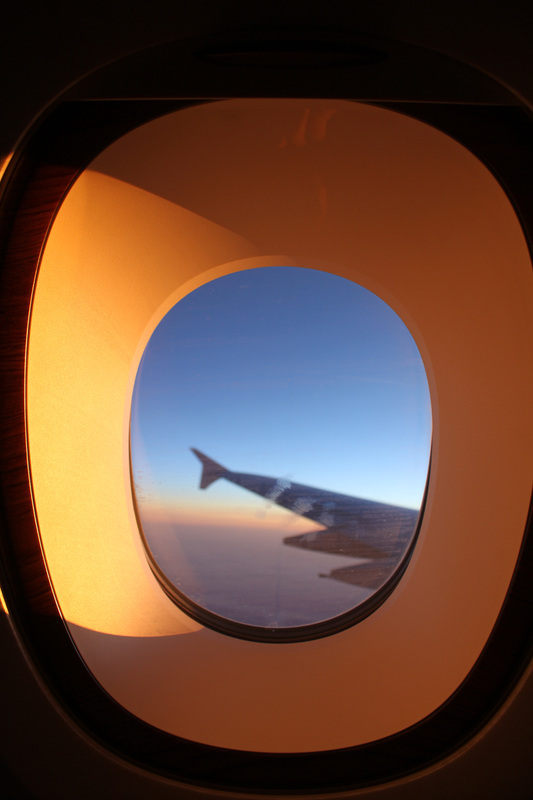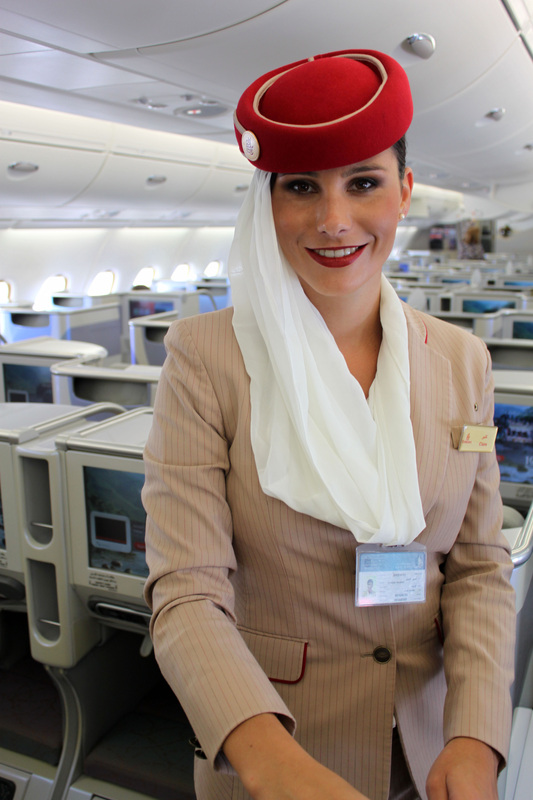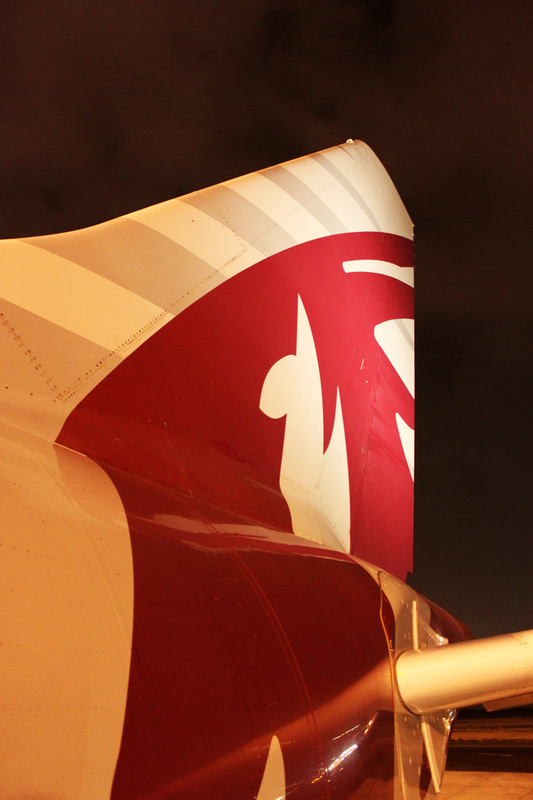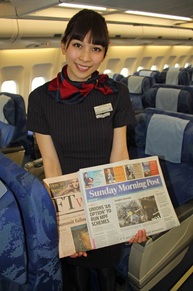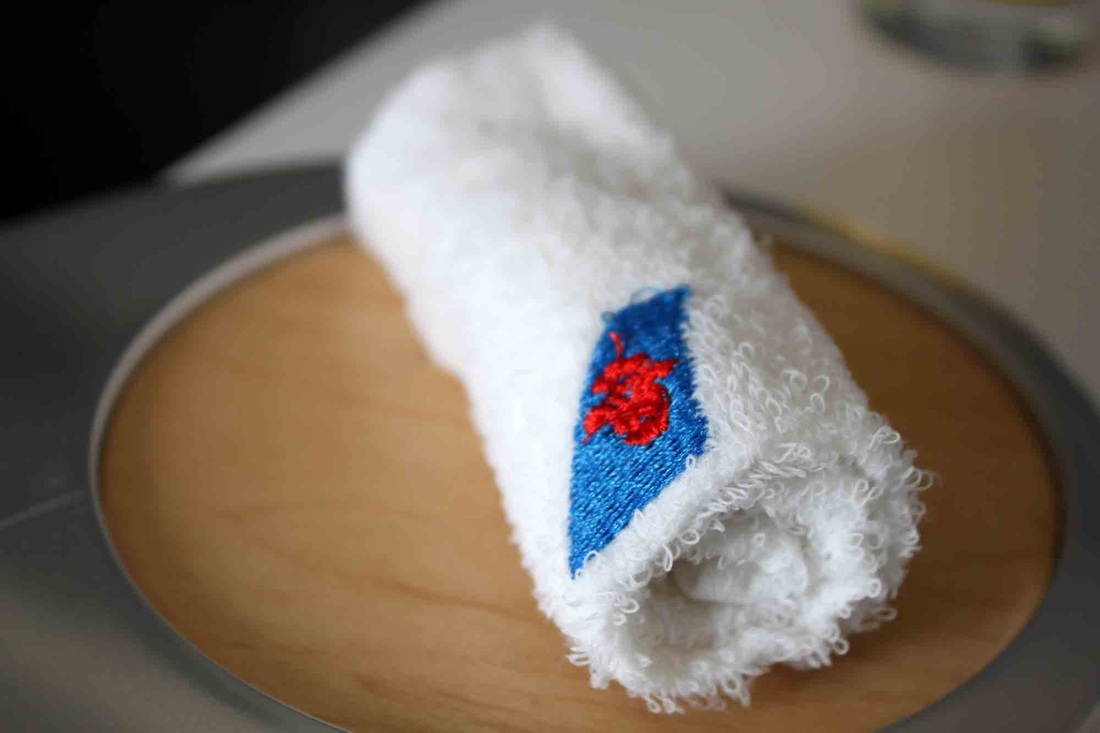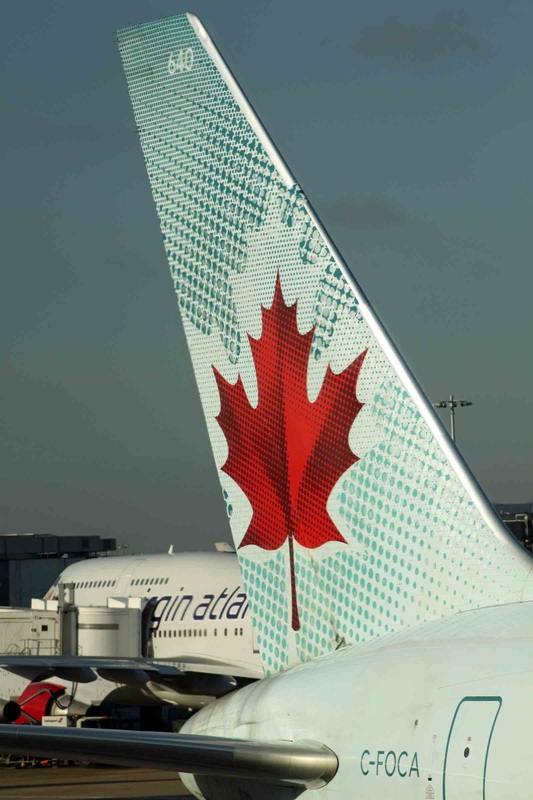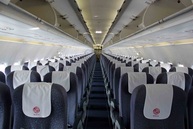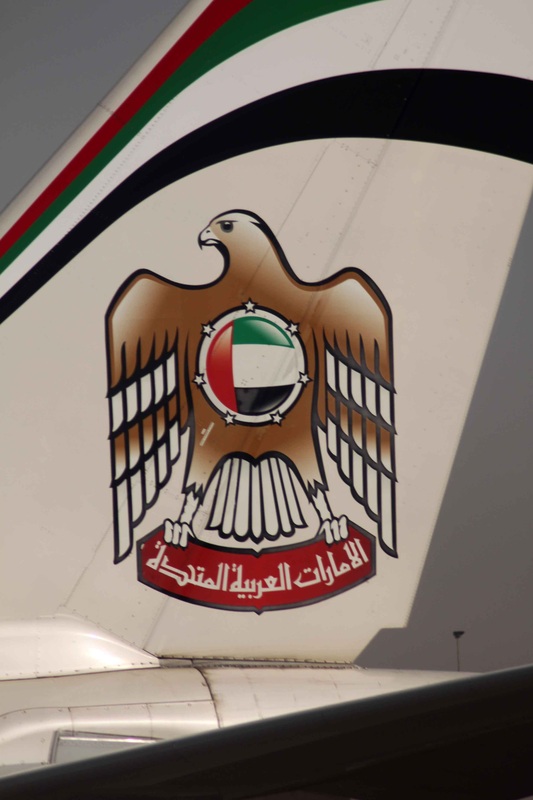|
The new Lufthansa livery has been revealed, and we love it! The Lufthansa Blue project will see the airline’s classic yellow and blue tailfins replaced with a new, deeper blue design. A redrawn wordmark will also feature while the airline’s fuselages are now all white, instead of the existing grey underbelly. The crane logo, created by Otto Firle in 1918, has been retained. It is sleek and stylish, and has a modern look.
The livery was shown to media at an event in Cape Town by CEO Carsten Spohr. But what really matters to passengers is fixing the interiors of the planes. Service is good; but the aircraft interiors also need to world-class. The passenger experience comes from what's inside the aircraft, not what's outside. I recall trying out the Business Class seats of the brand new Boeing 747-8i, and it was like sitting in a brand new Mercedes car! Starting December 1st Emirates will introduce a refreshed interior across its Boeing 777 fleet with the carriers updated “light and modern” colour scheme featuring refined textured panels, as well as new lighting and design accents. There has certainly been a lot of investment in terms of wowing the customer experience and especially what you get for your money.
At the heart of the refresh is the long-awaited First Class and Business Class products. As an industry first, the airline will adopt floor to ceiling sliding doors in the First Class cabin, taking design features from the Mercedes-Benz S-Class. They plan to offer up to 40 square feet of personal space each, laid out in a 1-1-1 configuration. The inclusion of an artistic motif representing the Ghaf (prosopis cineraria) tree, is used as a design highlight throughout the aircraft. An indigenous evergreen plant, the Ghaf is a considered the national tree of the United Arab Emirates, and has deep cultural and ecological significance. Sir Tim Clark, President Emirates Airline said: “The inflight experience is the heart of our brand and service proposition. The new 777 interiors that we are unveiling today is part of Emirates’ ongoing investment to continually raise the bar and exceed our customers’ expectations. Aside from our new fully enclosed private suites, Business Class features our latest fully-flat leather seats with personal minibars, Economy Class seats have adjustable full leather headrests, and the inflight entertainment system has been upgraded for all cabin classes. Throughout the aircraft, our customers will see modern and airy cabins, with painstaking attention to detail evident in design touches such as the textured wall and ceiling panels, lighting features, and more.” On the airline’s new First Class product, Sir Tim said: “Emirates pioneered the First Class private suite concept back in 2003, and today it’s the industry benchmark when it comes to first class travel. Over the years we have continually improved on our private suites, adding thoughtful refinements and features. We are very excited about our new fully-enclosed suite which is a real game-changer in terms of privacy, comfort, and thoughtful luxury. This is the first time an Emirates product has been so influenced by another luxury brand, but it is a natural fit as both Emirates and Mercedes-Benz have the same unwavering commitment to fine detail, uncompromising quality, and a drive to push the boundaries.” The new Emirates 777 First Class cabin interior uses a whole new colour palette of soft greys, cream and champagne, conveying a contemporary, open and airy feel, with quiet and timeless luxury. Read more. Hong Kong Airlines has received it's first Airbus A350 aircraft, on lease from AerCap, making the carrier the 15th airline to operate the airliner. Altogether Hong Kong Airlines will acquire 21 Airbus A350 XWBs, including 15 purchased directly from Airbus and six on lease from third party lessors.
Hong Kong Airlines has configured its A350-900s with a premium three-class layout with a total of 334 seats, comprising 33 in Business Class, convertible to fully lie-flat beds, 108 in the new cabin class “Economy Comfort” and 193 in Economy Class. Slightly different from the configuration on the other wide-bodies, such as the A330. The aircraft features the airline’s latest cabin products, including an all-new entertainment system and full in-flight connectivity. After an initial period flying on regional routes, Hong Kong Airlines’ A350-900 will begin long-haul operations in December this year, flying on the carrier’s non-stop service to Los Angeles. Meet Vatnajökull, the First Flying Glacier, In Celebration of Icelandair's 80th Anniversary5/16/2017
Excuse the pun, but Icelandair have perhaps one of the coolest liveries around in the air! The airline has introduced a pretty impressive aircraft livery to celebrate their 80th year flying. The Boeing 757-200, which took 2,500 man-hours to paint, is named after the largest glacier in the whole of Europe. Named “Vatnajökull” (I know, try and pronounce that!) the new vibrant livery will bring one of Iceland’s most famous landmarks across the carrier’s ever expanding network across Europe and North America. It is very similar to it’s Northern Lights aircraft, the airline has also invested in turning its interior into an experiential zone. If you are fortunate enough to fly on this plane then make sure you take the best photos that you can. Watch the video below to find out more and also check this link out! Hawaiian Airlines revealed an updated logo and a new livery for its aircraft on May 1, 2017, though the changes are more a tweak to the previous versions than a complete overhaul. Hawaiian debuted its new look by rolling out one of its Boeing 717 jets (registered tail number N488HA) in the new paint scheme on the 1st of May 2017, celebrated as "Lei Day" in Hawaii. The carrier also provided the media an image and a logo (on the top of the article) of an Airbus A330 painted in the new livery. “Our new livery embodies a stronger, more contemporary representation of Hawaiian Airlines’ culture of service and hospitality, which is the bedrock of our guest experience,” said president and CEO Mark Dunkerley, who unveiled the new brand design at Honolulu International Airport during a special employee event on Lei Day, a statewide annual celebration of Hawaiian culture. “It acknowledges our place as Hawaii’s airline and underscores the commitment our employees make every day to provide our guests with a gracious and genuine island welcome.” Also receiving a subtle update is Hawaiian’s logo, which also features Pualani. Pualani remains central to the logo, but she’ll now be “framed” by what Hawaiian says is the likeness of a “rising sun.” Previously, Pualani’s image was framed by a floral-themed background. Hawaiian Airlines is one of the more exotic and special airlines that I really want to try as and when I get the chance one day! On March 6, Japan’s All Nippon Airways (ANA) revealed a special livery for its first new Airbus A380 aircraft. The livery was selected from over 2,000 submissions received in an open competition organised by the carrier. The winning design will be painted on the airline’s first new A380, which will be delivered in early 2019. ANA will operate the aircraft on its most popular leisure route, from Tokyo to Honolulu in Hawaii. The winning entry consists of a colourful design featuring the Hawaiian green sea turtle – a symbol of good luck and prosperity in Hawaii. The flights between Japan and Hawaii represent a highly competitive market because around 1.5 million Japanese travel to Hawaii annually, with airlines enjoying consistently high load factors. ANA parent company ANA Holdings placed its order for three A380s in January 2016 and will become the first Japanese airline to operate the type. In relation to the introduction of the new aircraft, ANA is planning a number of future activities in Hawaii to protect the green sea turtle, known as the “Honu” in Hawaii and one that is listed by the International Union for Conservation of Nature (IUCN) as an endangered species. Watch the official video, released by Airbus: The national flag carrier of India, Air India says it has made the first passenger journey around the world operated by an all-women crew. The Air India flight departed from New Delhi (DEL) to San Francisco (SFO) on Monday 27th February and returned to the Indian capital on Friday 3rd March. The Boeing 777-200LR flew over the Pacific Ocean on its trip to the US, while its return flight was over the Atlantic, encircling the globe, the company said. Air India says it has applied for an entry on the Guinness World Record. The airline confirmed that the check-in and ground handling staff, the engineers who certified the aircraft and the air traffic controllers who authorised the departure and arrival of the plane were also all women. Air India also becomes the first Indian carrier to operate on the Pacific Ocean route which has reduced the total flying duration by three hours. Last week, Singapore Airlines (SIA/SQ) launched their latest digital campaign video which showcases dishes from its “Book the Cook” menu. Rather than showing how the life-sized versions are made, it instead created miniature versions of the food made in a tiny kitchen. The campaign, which is the brainchild of social media agency Dentsu Mobius, aims to draw the audiences focus to the airline's passion for high-end exquisite food, flavors and craftsmanship- especially in their Business and First Class cabins. The digital campaign generated nearly a million views within the first 24 hours of launch. Since then, the Facebook video has garnered 1,667,683 views, and over 27,000 reactions. The tiny kitchen features miniature versions of stoves, grills and even utensils used to prepare the food which is cooked over a candle flame. The dishes during filming were reduced to just 5.5cm. This was to show that there is indeed “no detail too small”, which is the name of its campaign. Singapore Airlines specifically hired a food artist who specialises in miniature food to replicate mini versions of in flight meals. The airline is one of the best when it comes to providing a truly 5-star customer service, and hence for the quality of service they provide, their fares also tend to be slightly higher than most other airlines (even for Economy Class as well). New-generation aircraft to offer a 'Life Well Travelled' for passengers 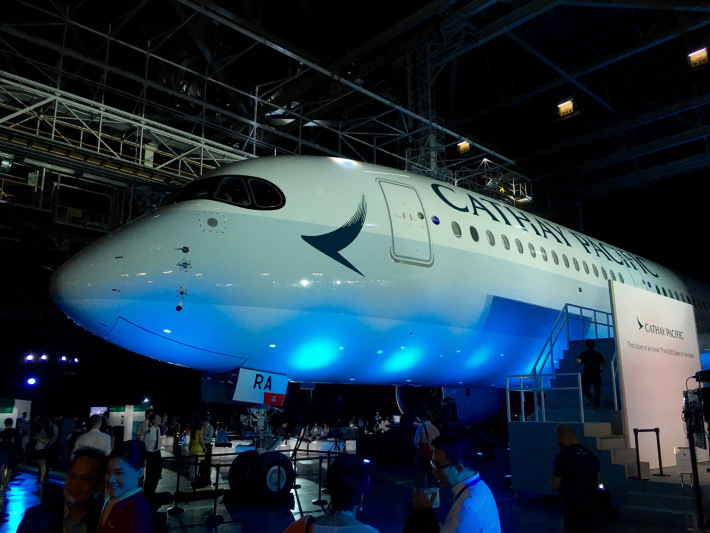 Cathay Pacific's first Airbus A350-900XWB: Photo Cathay Pacific Airways Cathay Pacific's first Airbus A350-900XWB: Photo Cathay Pacific Airways Cathay Pacific Airways’ first Airbus A350-900XWB aircraft arrived at Hong Kong International Airport from Toulouse, France on Sunday, 29 May. It is the first of 48 A350s scheduled to be delivered to the airline. The new aircraft features Cathay Pacific’s latest inflight products in the Business Class, Premium Economy Class and Economy Class cabins, enriching the experience of passengers and helping the airline to deliver on its promise of a Life Well Travelled. Cathay Pacific have been working hard in the past two years, aligning two brands, opening world-leading impressive lounges across the network, and introducing the new brand direction with simpler websites and airport signage. It is all about considered simplicity – removing the clutter and focusing on the elements that really matter to the passenger experience. The airline held a special event in the hangars of Hong Kong Aircraft Engineering Company Limited (HAECO) at Hong Kong International Airport on the 30th of May to give an exclusive preview of the new arrival to aviation and trade officials, key business partners, members of the Marco Polo Club loyalty programme and guests from the Hong Kong public. Guest of Honour at the event was Joseph Lai, Permanent Secretary for Transport & Housing (Transport), who officiated at the welcome ceremony together with Cathay Pacific Chief Operating Officer (COO) Rupert Hogg. “We understand that for our passengers, sleeping well, enjoying first-class entertainment, and using products that have been designed with them in mind are of the utmost importance. The new A350 will provide the very best of all these,” Mr Hogg said. “The lower cabin pressure and noise levels combine with our new features to set passengers up for the best sleeping experience possible in the skies. We have gone all out to provide the best inflight entertainment too. All seats come with the latest high-definition touchscreen personal TVs and a greater selection of movies, TV, live news channels and music. Inflight Wi-Fi is also available to connect passengers to family, work and world events, if they choose. We could not be more excited with what we’ve seen so far of the A350, and I’m sure that our passengers will feel the same way once they step on board. “This superbly efficient aircraft will help us further expand our global network and strengthen Hong Kong’s reputation as an international aviation hub, helping to oil the wheels of commerce and trade in our home city,” Mr Hogg added. Each of the cabins features brand new products. In Business Class the seat has been refined with new enhancements, in premium economy there are brand new seats, and Economy Class features larger screens, and more intelligent storage to increase passenger space and comfort. There is no First Class cabin on the A350 on Cathay Pacific, however, the Business Class section has had a complete refresh. The Business Class has a complete finish and trim mirrors, normally the same as you would expect on a corporate private jet. The existing seats have been completely reworked to offer enhanced automotive lines, new finishes that are calmer, and reduce the heavier forest green found in the current cabin. Everything feels cleaner, from the seat controls to the seat cushion. The biggest and most noticeable differences are the new IFE screen, which is much larger and has a more intuitive and simpler interface, the bed extender, which no longer flips up from the seat, but instead from the armrest – which makes it stronger, and more practical – and also a new tray table which isn’t fixed in one position unlike its predecessor. In the Premium Economy cabin, passengers will enjoy brand new B/E Aerospace MiQ seats, which will offer enhanced passenger comfort compared to the previous generation Premium Economy seats. The biggest improvement that has been introduced to the new seats includes leg rests for each passenger and enhanced an IFE screen size. Responding to passenger’s needs, Airbus have made the Airbus A350 first aircraft for Cathay that offers Wi-Fi for passengers (at a fee). The seats also offer push down arm rests on the aisle, which allow for passengers requiring assistance to be seated easily, as well as offering increased space for passengers who want a bit more room. The Premium Economy cabin seat configuration is a 2 x 4 x 2 arrangement, matching the current Boeing 777 layout. To revamp its Economy Class cabin, Tangerine, a London based company, were brought in to re-imagine the seats, inspired by glass skyscrapers and bamboo. The finishes, like the other cabins, are inspired by Asian minimalist tradition. Bulkheads feature an embossed irregular-striped pattern that is evocative of bamboo, contrasting with the natural textured finishes that are incorporated throughout the interior across all classes. Green is an essential colour palette for Cathay Pacific’s brand and three shades of green, blended with natural tones, were used. London 23 May 2016: Digital and creative agency, Catch, is today announcing its latest digital campaign with the British airline Thomas Cook Airline, entitled #CatsOnAPlane. The campaign, which launches as part of a wider advertising initiative for Thomas Cook Airlines in both the UK and Germany, aims to highlight the airline’s belief that customers “deserve better” when flying on their hard-earned holidays. #CatsOnAPlane sees a team of furry testers try out Thomas Cook Airline’s newly refurbished fleet in a bid to highlight the quality of the airline’s newly refurbished fleet. The animals were used to test the interiors of both Thomas Cook Airlines’ planes and those from sister airline, Condor, playing on the perception of them being creatures of comfort. The campaign will see activation across Twitter, Facebook and Instagram and involve a series of short videos. These will show the feline characters challenging the brand’s standards including examining everything from the carrier’s award-winning service to comfort levels and seat quality. The filming involved a 24-hour shoot with 10 cats - each with their own distinct personality - on an Airbus A330 and Boeing 767 at Manchester airport. Each short video features the cats exploring different areas of the planes, including Premium Economy for Thomas Cook Airlines UK and Business Class for Condor. To ensure no cats came to harm on the shoot, vet Aniket Sardana was onsite for the full duration of filming. Speaking of the campaign, Senior Group Marketing Manager at Thomas Cook Airlines, Tom Morey said: “No-one can assess comfort like a cat. They’re the hardest customers to please, which is why we wanted to test our new interiors with the best. And the results left the cautious kitties feline great.” Discussing the launch, Catch’s Creative Director, Sam Chatwin added: "Cats are the undisputed champions of the internet. They’re fussy, demanding and know exactly what they want. What better way to put the airline’s service to the test. We love working with the team at Thomas Cook Airlines, they're fearless and you can't ask for more than that in a client." To view the campaign, visit the Thomas Cook Airlines YouTube channel or Facebook. New Uniforms, New Services, a Brand New Experience Alitalia launched a new global brand campaign with the worldwide premiere of a new television commercial at the Nazionale Spazio Eventi in Rome, attended by hundreds of representatives of the global media and specially invited guests. The television commercial celebrates the Italian airline as it faces the future with renewed vigour and vitality, following a successful restructure in 2014, which saw it also introduce a series of enhancements and upgrades to its inflight product and fleet. Cramer Ball, Alitalia’s Chief Executive Officer, said: “Italy is the embodiment of beauty, warmth, passion, hospitality and a way of life celebrated the world over. It is an undisputed leader of style and innovative design. The Alitalia of today, as a national symbol, is imbued with the finest qualities for which this country is famous. It is with this spirit that we introduce our new global brand campaign, starting with a television commercial which presents the best of Italy and the importance that the country enjoys on the world stage.” The new campaign showcases Alitalia as a modern airline, its commitment to excellence in all areas of its operations, and the pride and passion of its talented people, who are the driving force behind the progress the airline has made since its re-launch. It also strives to represent Italian excellence around the world, to promote a vibrant nation at the forefront of design and style, highlighting its arts, culture and landscapes. Two weeks of video and photo shoots took place in a variety of locations including Alitalia’s hub at Rome’s Fiumicino airport and onboard its aircraft. The campaign’s photography collection was produced at studios in Milan. Pierpaolo Ferrari, one of the most highly acclaimed fashion photographers in Italy, was commissioned by Alitalia to capture the nuances of Italian beauty, including a set of stunning images of its new uniform collection, designed by Milan based haute couturier Ettore Bilotta. The campaign also integrates a series of web videos revealing aspects of Italian warmth and hospitality, the skill and experience which has propelled Alitalia along a remarkable renewal process, and a selection of interviews with the airline’s industry partners, who include exclusive and quintessentially Italian brands such as Poltrona Frau, Lavazza, Ettore Bilotta, diego dalla palma Milano, Cantine Ferrari, Atelier Fragranze Milano, and architect Marco Piva, who created the airline’s new ‘Casa Alitalia’ airport lounge designs. The feature will be shown on global TV stations in major markets such as Italy, the USA, Brazil and Germany in both 60 and 30 second formats, and on social media channels, with still versions of the campaign appearing in print, digital and on outdoor channels. A strong focus will be placed on digital channels with a strategic presence on main news portals, entertainment websites and on social networks, and on mobile devices and tablets. The Alitalia brand story has been visually interpreted by award-winning director Federico Brugia, whose work includes motion pictures, music videos and commercials for major brands including BMW, Damiani, Audi, and Dolce & Gabbana. His music industry collaborations include Elton John, Malika Ayane, and the late Luciano Pavarotti, among others. Mr. Brugia said: “This short film has provided an opportunity to create a visual and emotional piece of work which connects Alitalia’s brand and vision directly with the heart and mind of the viewer. Whether they are Italian or from elsewhere around the world, we wanted to deliver the same message, and that is one of Italian passion and culture, expressed through the experience and achievements of its airline.” The concept for the new campaign was created and developed by communication agency Leo Burnett Italia, part of Leo Burnett Worldwide, one of the world’s leading advertising agencies, and part of the giant Publicis Groupe. Media strategy and planning were managed by Starcom, leading worldwide media agency and referent agency for the Etihad Airways Partners group. The Italian carrier is 49 per cent owned by the UAE's Etihad Airways Alitalia commissioned award-winning Italian singer Malika Ayane to provide the vocals for the title track of the television commercial, the timeless Italian song ‘Volare’. The singer, who is famous in Italy for her raw, emotional musical style, also performed the song live at the official launch event of the new advertising campaign in Rome. The new campaign is on air from today and can be viewed on the Alitalia.com website. Australia's national flag carrier, Qantas Airways, revealed their latest uniform for their cabin crew and pilots. Designer Martin Grant has given a nostalgic feel to the uniform, who has resurrected the Naval inspired white pilots cap, making the uniform not only striking, but iconic as well. The uniform replaces the 13-year old uniform designed by Peter Morrissey, but one which maintains the single breasted jacket, with a more fitted look – and the new threads actually hark back to the uniforms of Qantas from the 1940s. It kind of has a similarity to the Pan Am uniform, especially with the white cap. The fitting of the jacket doesn’t just reflect fashion trends, but also serves a purpose, allowing more range of movement in the cockpit, a fairly confined space. As the main partner of the new Batman VS Superman Holywood movie, and to celebrate the launch of this blockbuster, Turkish Airlines, the national flag carrier of Turkey, decorated one of their aircraft in a dual-sided design for one of their 777-300ERs. On the boarding side, the superman logo is emblazoned on the empennage, whilst on the other, the large batman symbol can be seen. The airline even started an advertising campaign that promotes the carrier’s new routes Gotham City and Metropolis (which allegedly was the topic of some amusement, as after the commercial some people wanted to purchase tickets to the two fictional cities). The YouTube video has already reached over 27 million views in under two months, showcasing the success of this brand partnership for the carrier. Earlier this week, Japan Airlines (JAL), the national flag carrier of Japan, announced a new cabin enhancement for their Boeing 777-200ER fleet which would ‘raise the bar one class above in all cabin services”, according to a press release from the carrier. The brand new Business Class is dubbed “JAL Sky Suite 777 (SS2)” and is scheduled to be launched on the Tokyo Haneda- Bangkok route from July 2016, and will also be introduced on Tokyo Haneda -Singapore route and also the Honolulu route from the winter season later this year. The new Business Class seats are manufactured by Herringbone, and are similar to the Zodiac Cirrus Aero seats found on Air France, Cathay Pacific and American Airlines. The most pleasant thing to note is that all of the seats have an all-aisle access in a 1-2-1 configuration. The customisation of the seats include a small privacy partition and customised storage for passengers. There is also a large 17” PTV screen for entertainment, which is an enhancement from the current 10” screens, and will showcase a range of movies and entertainment on a brand new inflight entertainment system dubbed “Magic VI”. Yoshiharu Ueki, President of Japan Airlines, said, “Our aim is to deliver enhanced services and products to more customers. We have developed this new Business Class seat with highly in-flight habitability and provision of appropriate capacity as well.” He went on to say, “JAL will be continuing to embrace new challenges, and striving to become the most preferred airline in the world.”
Earlier this week, Malaysia Airlines, the national flag carrier of Malaysia, unveiled brand new fully-flat Business Class seats fitted in its first Airbus A330-300 aircraft. The new seats will be introduced on the airline’s Kuala Lumpur–Sydney route. The new Business Class seat product for the airline is a great step up from the current angle lie-flat seats, which is available on the Boeing 777-200 and the Airbus A380-800 aircraft; although the layout doesn’t provide each passenger with aisle access. The seat layout is in a 1-2-1 and 1-2-2 configuration. This seat configuration is a smart move for Malaysia Airlines, who are currently going through a brand restructuring process. The Business Class seat offers a pitch of 44 inches and a width of 20 inches. When extended the seats convert into a bed 76 inches long. The seats come with increased working space and extra stowage space for personal items. Each seat is equipped with a 16-inch touch screen in-flight entertainment system. The seats are designed and manufactured by Thompson Aero’s long standing partner, Factorydesign, a UK based leading product design and aviation specialist company. Speaking at the event, Malaysia Airlines chief commercial officer Paul Simmons said, “This marks the start of an exciting product roll-out for our Business Class customers to experience. The Business Class cabin refurbishment will be carried out in stages on all 15 of Malaysia Airlines’ A330 aircraft by September 2016.” He went on to say: “With the launch of our new seats, we are confident that Malaysia Airlines will be the first choice for travel to, from and around Malaysia. We are also confident that these seats will further improve and strengthen our premium product and service offerings.”
Japan’s All Nippon Airways (ANA)’s hunt for seven talented British chefs to take off on a unique trip to Japan to learn the secrets of the country’s legendary cuisine has taken another step forward. The chefs have now been whittled down to seven, and dubbed as ANA’s seven ‘Samurai Chefs.’ The talented chefs from the UK were whisked to Japan on for an immersive culinary tour, sponsored by ANA. Hand-picked by a judging panel that included the world-renowned chef Hideki Maeda from Nobu and Yuki Gomi of Yuki’s Kitchen, the chefs were given the full Japanese culinary experience that included the showcasing of unique production methods behind popular local delicacies and visited some of the country’s most popular food markets, as well as renowned restaurants in Tokyo, Osaka, Toba and Kyoto. As a result of the trip, the seven chefs created some spectacular results, including salmon donburi and popcorn-smoked dashi, to ponzu-infused calamari and zesty hibachi. Fighting off fierce competition, only one Samurai Chef will win the chance to collaborate with ANA’s own award-winning catering team to create a light meal for its Winter 2016 Business Class menu on the airlines London Heathrow–Tokyo Narita route (mostly flown using the Boeing 777 or the Boeing 787-8). Here are the seven finalists: Cured Hamachi, Cucumber & Lemon Verbena Donburi Spencer Metzger, London “My inspiration was for a donburi dish that’s light, fresh, full of acidity and one that is not served hot, as this is the common perception of in-flight food. I want ANA’s guests to be surprised with an exceptional meal. My dish can be prepared fresh and finished on board along with the side garnishes.” Donburi N 7 Piero Leone, London “A 7 day tour. 7 seas where fish swim and 7 heavenly virtues. 7 herbs and 7 Gods of Luck. All inspired my dish which focuses on good, fresh ingredients packed with flavour and natural umami. The calamari, scallops and prawns are just seared, with a touch of sesame oil and ponzu sauce. Lemon jelly and miso paste add flavour, alongside two rice chips: yuzu lemon and wakame seaweed.” Seaweed & Hazelnut Dukka, Pickled Shitake & Beansprouts Donburi with Yuzu & Tamari dressing Lizzy (Elizabeth) Stables, London “As you can see, my dish has quite a few different recipes going on. All are very simple but with keeping in the theme of a vegan dish, I thought it was very important to still keep the balance of sweet, salty fresh and crunch.” Charred Mackerel Donburi with Popcorn Smoked Dashi Kelvin Tan, Ireland “I want ANA’s guests to relive our trip to Tenpaku dried bonito factory, where we were shown wonderful hospitality alongside an unforgettable experience – the mellow smoky aroma, the heart- warming dashi, the simplicity of a delicious bowl of rice. My donburi is a twist on the classic Ochazuke (Tea & Rice).” Seared Sesame & Herb Crusted Tuna with Chinese Cabbage Sticky Rice Hamza Aidouni, London “My dish is refreshing, simple and healthy without compromising flavour. I was inspired by Tsukiji fish market – the fresh flavour was wonderfully offset by the texture and flavour of sesame seed and herb. An obvious accompaniment to my dish was the Japanese staple of rice, coated in fresh cabbage. The tofu soya is an homage to the soya district.” Donburi Dish of Ox Cheek in Miso, Cabbage, Soy, Ginger & Crispy Noodles Craig Floate, Nottingham “My dish is punchy and full of flavour, with a hint of spice to get the taste buds going. The melt in the mouth beef compliments the crunchy vegetables, finished off with fragrant fresh coriander. No salt or pepper is used in the dish, with tomatoes and miso aiding the natural umami.” Poached Salmon Donburi, Pak Choi, Shiitake, Lotus Root & Fried Leeks (Served With Ginger Infused Pu Er Tea) Cheung-On ‘Jason’ Shum , London “My dish has five key ingredients from Japanese cuisine; salt, sugar, miso, vinegar and soy sauce. With dashi, the gently poached salmon stays beautifully moist yet not too oily. Shiitake mushrooms and nori with the salmon achieves additional umami. The lotus root crisps provide a change in texture and is all lifted by the acidity and slight sweetness of the pickled ginger.” Earlier this week, Aeromexico, the national flag carrier of Mexico, revealed their latest bold social media advertising campaign in a bid to promote Mexico as much more than just its stereotypical global perception. The campaign, produced by Ogilvy & Mather Mexico, premiered on television, radio, print, and billboards, and will gradually include different types of ads and graphic materials. The social media ad provides a selection of vignettes to dispel the myths cantered around Mexico, and showcase it as a progressive and peaceful destination (and is mostly aimed the US audience- I can only hope that Donald Trump and his supporters are closely watching this, too!) Part of a new marketing campaign, the airline states that “Aeromexico is undergoing a comprehensive renovation plan focused on innovation. Proof of this can be found in the carrier’s fleet evolution program featuring nine Boeing 787 Dreamliners, considered one of the most modern commercial airplanes in the sky.” Xiamen Airlines of China has recently announced the introduction of new uniforms for their male cabin crew. This follows on from their announcement in May 2015 about the introduction of new uniforms for their female cabin crew. Xiamen Airlines has one of the most colorful brand liveries around, and the new uniforms are in line with the colors of the brand. Designed by the famous Taiwanese fashion designer Jamei Chen, the new male uniforms include off-tailored silhouettes that hark back to the JetSet era, whilst being neatly blended with contemporary touches, such as mandarin collar shirts and stylish black leather gloves. The color palette used is sleek and stylish, with aqua and cobalt blue tones running through the uniforms. “The empire waist design used on dress and waistcoat makes the uniform more classic and gives the wearer a better figure. The combination of different blue comes from the brand color which represent the sky and the sea.” XiamenAir confirmed in a PR statement on their new uniform. The smart pill box hats, waist bands and gloves on the ladies outfit adds a ‘fashion catwalk’ edge to the uniforms whilst the men’s three piece tailored suit feels understated, smart and effortless with the hidden buttons on the waistcoat offering clean sharp lines.
Swiss International Air Lines (SWISS) took delivery of the first of nine new Boeing 777-300ER aircraft at Zurich Airport at 9:14 a.m. on January 30, marking a new era in Switzerland's aviation history. The 777-300ER aircraft, which bears the registration HB-JNA and name "November Alpha", was welcomed with loud applause from the especially invited media and VIP guests, and the large number of proud SWISS fans and other keen spectators. The youngest and biggest member of the SWISS fleet was flown to Zurich from Boeing's Everett Factory in Seattle. On January 29, SWISS also officially opened First Class, Business Class and Senator Lounge facilities in Zurich Airport's Terminal E. The two events usher in a new era for SWISS, in the air and on the ground, under its "Next-Generation Airline of Switzerland" strategy. The Boeing 777-300ER has state-of-the-art technology. It offers maximum reliability, a very high level of comfort in the cabin, and has space for over 330 seats. It can also save 23% in fuel and CO2 emissions per seat in comparison with the A340-300. With five sister aircraft to follow by August 2016, and then three more during 2017-18, the long-range Boeings will replace Swiss' older gas-guzzling Airbus A340s, and will be used exclusively on routes to Hong Kong, Bangkok and Los Angeles, plus some flights to San Francisco, São Paulo and Tel Aviv. The Boeing 777-300ER features all-new First Class suites and Business Class seats shaped by leading design house PriestmanGoode as a natural evolution of Swiss' award-winning cabins – but with more space, more storage and greater privacy. The colour palette throughout the cabin has been updated to richer, more sophisticated tones, while keeping very much on-brand for that unmistakeable Swiss look and feel – even in the entrance to the Boeing 777-300ER- effectively it is like a five-star hotel in the sky. "We took inspiration from Switzerland’s design and craft heritage, as well as Swiss’ own brand identity, including the airline’s headquarters and flagship lounges in Zurich" says Nigel Goode, Co-Founding Director of PriestmanGoode. "The resulting cabins are luxurious, elegant and timeless with a lightness of touch, precise craftsmanship and attention to detail that embody the Swiss brand.” All passengers will have access to a new satellite Internet service, with prices ranging from 9 Swiss Francs (A$12.60) for 20MB through to 39 Swiss Francs (A$54.60) for 120MB. Swiss will also allow calls to be made direct from your smartphone using special 'pico-cells' fitted to the aircraft which mimic the mobile network your phone would see on the ground. On January 28, Cathay Pacific announced that DragonAir will cease to exist, instead the sister airline to Cathay Pacific will be re-branded as Cathay Dragon. In a press release, Cathay Pacific’s Chief Executive Ivan Chu said: “We are very proud of what we have achieved together. Cathay Dragon is a brand that will be recognisably part of the Cathay Pacific Group for our customers from different parts of the world. The rebranding will enable us to capture the fast-growing passenger flows across the two carriers by creating a more seamless travel experience. “ He continued: “We are building on what is a true Hong Kong success story that has made our city a leading international aviation hub and gateway to and from Mainland China markets. This rebranding will sharpen our competitive edge by offering an attractive Cathay-led brand package that carries the assurance of a consistently high-quality customer experience.” However, the airline also announced the two airlines won’t be merged, but will instead be continuing to operate as two separate carriers, with just the name and brand changing rather than the operation. Cathay Dragon has adopted the new livery design of Cathay Pacific, whilst turning the blue and green areas to red. “We see this a real Hong Kong success story, and we aim to ensure the success continues. Through this rebranding, we will make it much clearer to customers that they are flying on a member of the Cathay Pacific Group, and we have created a new look for Cathay Dragon that clearly identifies it as a Group airline.” Ivan went on to say: “There are two main reasons behind this rebranding, the first being a desire to capitalise on Cathay Pacific’s strong international brand recognition. The second driver is to leverage on Cathay Dragon’s unique connectivity into Mainland China.” It’s fair to expect little difference to the cabin products, as there is already a strong synergy between the two carriers. Chief Executive Officer Algernon Yau said: “We can assure our customers that Cathay Dragon will continue to provide the same high level of products and services that made us a four-time winner of the World’s Best Regional Airline award. We will have the same dedicated team continuing to offer their friendly and caring service style. We will also continue to build on our experience and understanding of what our passengers like and treasure, such as speciality Chinese and Asian dishes as well as popular local Hong Kong snacks.” My own thoughts are that it sounded better as DragonAir. The Cathay Dragon doesn't really have a kick to it, and doesn't come across as a catchy name (whereas Cathay Pacific is). Many observers have also commented that the new branding has a striking resemblance to the branding of Turkish Airlines, Swiss and Qantas Airways. Read More Introducing Cathay Dragon - The VideoGaruda Indonesia Airlines Appoints JPA Design To Create New Business And Economy Interiors12/26/2015
Garuda Indonesia, the national flag carrier of Indonesia, has appointed JPA Design, an International transport design specialist, to create the interiors of its new aircraft cabins. This is the same agency that provided the design consultancy for Singapore’s new Premium Economy Class cabins. The airline has expanded its fleet and builds on its reputation as a world-class carrier. In recent years, many airlines from Indonesia have sadly gained themselves a reputation for having a very bad safety record. However, the Indonesian national flag carrier's senior management have worked very hard to uplift its branding image and improve itself. The airline is an official 5-star carrier, and has recently won a number of awards for excellent customer service on and off the plane.
Garuda’s new aircraft orders modernizes its fleet and will support additional short, medium haul flights and routes. JPA Design’s new cabin interiors for both Business and Economy class will feature on 50 new 737 MAX aircraft, scheduled for first delivery in 2017 and will be retrofitted to Garuda’s existing long-haul wide body Airbus A330-300 fleet. Garuda’s intention is to progressively re-brand all its aircraft interiors – both narrow and wide body – in order to achieve consistency across its entire fleet. Nicodemus P. Lampe, Director of Services at Garuda Indonesia, commented, “Strong competition was forcing airlines to innovate their product gradually and we are pleased to work together with JPA Design on creating the next generation of our Business and Economy aircraft cabin interiors. As Garuda Indonesia continuously strives on its ongoing service enhancement program to provide its passengers with the best possible full-service air travel experience, we need to collaborate with industry members that share the same vision regarding service excellence, particularly in terms of reliability and quality.” JPA Design’s interior scheme – yet to be revealed – will be aligned to the airlines brand drivers as defined by branding specialists Landor Associates; Garuda’s new look Business Class: “an experience of accessible luxury that is energetic, authentic and dynamic.” Economy is defined as “an uplifting experience that is dynamic, positive and warm.” Tim Manson, Design Director at JPA Design, said; “Competition is getting tougher and passengers now expect more out of their flying experience. For an airline to successfully compete against the worlds’ best, you need to provide an element of surprise and luxury and ensure that you give those discerning customers an unforgettable travel experience.” On working with Garuda, Manson went on to say; “Being selected to work with an airline that has such keen ambition and one that places passenger comfort and joy at the heart of all they do, is a great opportunity for JPA Design. We both share in the commitment to constantly innovative and strive for best in class solutions. To be design partners with Garuda Indonesia, the third airline we have worked with that is a member of the exclusive 5-Star Airline Award, is a real honour.” Japan’s largest airline, All Nippon Airways (ANA), proudly shuttled the whole cast and crew of the latest Star Wars movie, Star Wars: The Force Awakens, from the World Premiere in Los Angeles (namely Hollywood) to the London Premiere in its custom R2-D2™ ANA JET, a Boeing 787-9. Starting at the Premiere on Monday 14th December, ANA laid out a large scale model of their 777 Star Wars Jet which was signed by the stars of the franchise. The scale model was modelled after the BB-8™ ANA JET took to the red carpet. The jet is another aircraft decorated with special livery featuring BB-8, the new Star Wars droid introduced in the film. The jet is a Boeing 777-300ER and is scheduled to begin its service on international routes from March 2016, principally between North America and Japan. “ANA is proud to be part of the global celebration for Star Wars: The Force Awakens,” said Osamu Shinobe, President and CEO of ANA. “As we fly passengers to Japan and across the world, we aim to provide our guests with the magic and joy that these films spark. As the first aircraft to be decorated with Star Wars livery, there was no question that the R2-D2 ANA Jet was chosen to fly between the U.S. and U.K. premieres of Star Wars: The Force Awakens.” Following the World Premiere of Lucasfilm’s Star Wars: The Force Awakens in Hollywood, the film’s stars including Harrison Ford and newcomers Daisy Ridley and John Boyega (both proud Londoners!), the director of The Force Awakens J.J. Abrams, and producer and Lucasfilm president Kathleen Kennedy, flew on the chartered flight from Los Angeles to London. The flight number of the trip was NH 1977, in honor of the first Star Wars film release in 1977, and the callsign of the flight was "All Nippon 1977 heavy". The R2-D2 ANA Jet is the first ever aircraft in the world to feature a Star Wars character on its exterior and is a product of an agreement between ANA and The Walt Disney Company (Japan) Ltd. First unveiled at the Star Wars Celebration in Anaheim, Calif., earlier this year, the R2-D2™ ANA JET, a Boeing 787-9, started its regular flight in October and now flies to various destinations, including Europe, Asia, China and the U.S. Video: "Star Wars: The Force Awakens" The World PremiereOn December 14, Emirates announced that it will expand its services in mainland China with four weekly flights to Yinchuan (INC) and Zhengzhou (CGO) utilising a Boeing 777-200LR aircraft, starting from 3rd May 2016. These services will offer new international connectivity for two of China’s fastest growing cities, and expand Emirates’ destination offering on the mainland to five, including: Beijing, Shanghai, and Guangzhou.
Yinchuan, the capital of Ningxia, lies to the West of the Yellow River and to the East of Helan Mountain. With a large Muslim population, it serves as a gateway connecting China to Arabic countries, and is positioned as a hub for economic and trade cooperation and cultural exchange between China and the Middle East. Zhengzhou, the capital of Henan Province and a major transportation interchange for central China, is an educational, technological and economic centre. The second largest city in central China, Zhengzhou’s strategic location has enabled the city to become one of the largest economic hubs in China. “With the opening of these new strategic routes, Emirates looks forward to contributing to the enhancement of China’s trade links with the rest of the world, in particular with the UAE and Arab world. We believe the new international air links that we are launching will help create tourism and trade opportunities for Chinese business and leisure travellers that may not otherwise exist,” said HH Sheikh Ahmed bin Saeed Al Maktoum, Chairman and Chief Executive, Emirates Airline and Group. “With our established network across Africa, Europe and the Middle East, Emirates is a ready-made connector of people and trade, and we look forward to further developing aviation links with China in a mutually beneficial way.” Emirates’ new services will connect Yinchuan and Zhengzhou with many new destinations via a convenient connection in Dubai, and help boost trade and tourism flows to the growing central and western parts of China where these cities are located. Emirates flights to Yinchuan and Zhengzhou will depart on Tuesday, Wednesday, Friday and Saturday from Dubai as EK326 at 02:45hrs arriving at Yinchuan Hedong International Airport at 13:35hrs. The service will then depart from Yinchuan at 15:20hrs and arrive at Zhengzhou Xinzheng International Airport at 17:00hrs. The return flight, EK327, will depart Zhengzhou at 21:10hrs, arriving at Yinchuan at 22:55hrs. It will then depart Yinchuan at 00:40hrs, arriving in Dubai at 04:30hrs the next day*. Timings of the new service have been scheduled to allow for seamless connections to many Middle East, European and African destinations. The services will be operated by a three class configured Boeing 777-200LR aircraft, offering 266 seats and 14 tonnes of cargo capacity in the bellyhold. Popular commodities expected to be transported on these services include electronics, such as mobile phones from Zhengzhou, and agricultural products such as goji berries and cashmere from Yinchuan. Supporting China’s “Belt and Road Initiative” As China looks to connect with the world through the ‘Belt and Road Initiative’, Dubai is well-positioned to support China in achieving the mutual benefits that will come from this Initiative, including deeper levels of co-operation and exchange. Located at the crossroads of East and West, Dubai is the largest import-export hub in the Middle East, connecting the world through its strong governance, extensive trade networks and global connectivity links. Ties between Dubai and China continue to grow stronger. A growing number of Chinese banks and businesses are establishing branches within Dubai’s business and financial districts and the city is now home to over 3,000 Chinese companies and 200,000 Chinese residents. Growth in visitor numbers to Dubai from China grew by 25% in 2014. Emirates has been a large part of this growth story, being the first airline to establish non-stop connectivity between the Middle East and mainland China, first with freighter operations to Shanghai starting in 2002, followed by passenger services in 2004. Currently serving 54 cities in 30 of the 65 countries identified as part of the Belt and Road Initiative, Emirates is uniquely positioned to support China in advancing its trade and investment links with these countries. “As China's regions continue to open up to the global economy, Emirates remains keen to support this with the further expansion of air services in mainland China. In particular we’re interested in exploring the opportunity of daily services to Hangzhou and Chongqing, and a second daily service to Guangzhou,” said HH Sheikh Ahmed bin Saeed Al Maktoum. Passengers travelling on Emirates’ Boeing 777-200LR will be able to enjoy the airline’s award-winning ice entertainment system with up to 2,000 channels of on-demand entertainment to choose from, including Mandarin language movies and music. Emirates flights to and from China also cater to the needs of the Chinese market with Mandarin-speaking cabin crew on board, and inflight cuisine options with popular Chinese dishes. As with all Emirates flights, passengers travelling on the Yinchuan and Zhengzhou services will enjoy the generous Emirates baggage allowance of 30kg in Economy Class, 40 kg in Business Class and 50 kg in First Class. *Flight times are as per summer schedule 阿联酋航空宣布计划开通郑州-银川-迪拜航线, 拓展中国大陆市场 ——阿联酋航空 (以下简称“阿航”)今日宣布,从2016年5月3日起,将开通郑州(CGO)飞往迪拜经停银川(INC)的新航线,每周四班,由波音777-200LR客机执飞,此举将进一步拓展阿航在中国大陆市场的业务。新航线将帮助这两个发展迅速的中国城市构建新的国际化桥梁。此外,加上北京、上海和广州三地,阿航在中国大陆的目的地数量将扩大至五个。 阿航的新航线将成为连接郑州与迪拜的第一条直飞航线,同时为来自郑州和银川以及周边地区的乘客提供更快速、便捷的出境方式选择,他们可经由迪拜中转,去往中东、非洲及欧洲地区的目的地,例如罗马、巴黎、伦敦等热门城市。同时,该航线的开通也将促进两个城市所在的中国中西部地区的跨境贸易及旅游业的发展。 今年,银川和郑州两个城市的出境人数都有显著的增长。宁夏出入境检验检疫局数据显示,从今年1月到11月,出境人数达到了48774人次,同比增加46.2%。根据郑州边防检查站的数据显示,截至今年10月,郑州出境人数超过了55万,比去年同期增长了38.1%。 阿联酋航空公司及集团主席兼首席执行官阿姆德·本·萨伊德·阿尔马克托姆殿下(His Highness Sheikh Ahmed bin Saeed Al Maktoum)表示:“通过开通这些具有战略性意义的新航线,阿航希望为促进中国与其他地区的贸易往来做出更大贡献,特别是阿联酋和阿拉伯世界。我们相信,新的国际航线将帮助中国的商务旅客创造全新的贸易机会,并为休闲旅客提供无与伦比的旅行体验。” “凭借在整个非洲、欧洲和中东地区的发达航线网络,阿航已成为连接世界各地旅客和贸易往来的一个重要桥梁。我们期待以互惠互利的方式进一步推动与中国在航空事业方面的合作,”他补充说。 从郑州出发至迪拜经停银川的航班代码为EK327,将在每周二、周三、周五和周六晚上于21:10从郑州出发,22:55到达银川。随后在次日凌晨00:40离开银川,当地时间04:30抵达迪拜。返程航班的航班代码为EK326,将于凌晨02:45从迪拜起飞,当地时间13:35抵达银川河东机场。随后15:20从银川起飞,17:00到达郑州新郑国际机场*。 新航线的航班时刻安排旨在让乘客在迪拜转机飞往中东、欧洲和非洲的众多目的地的过程中实现无缝连接。 航班将由三舱配置的波音777-200LR客机执飞,可提供266个座位和14吨的腹舱货运能力。 预计航班将运送的热门商品包括电子产品(如郑州生产的手机)和农产品(如银川的枸杞和羊绒)等。 阿航响应中国的“一带一路”国家战略 中国正寻求通过“一带一路”战略加强与世界的联系,在此之际,迪拜所拥有的地理位置优势可支持中国实现由该战略带来的共同利益,例如更深层次的合作和交流等。 迪拜位于东、西方交汇的十字路口,是中东地区最大的进出口贸易中心。迪拜凭借其良好的政府管理、广泛的贸易网络和强大的通达全球实力,将全世界连接到了一起。 迪拜和中国的友好合作关系正不断发展壮大。越来越多来自中国的银行和企业在迪拜的商业和金融区内建立分支机构;这个城市现已拥有逾3000家中国公司和20万中国公民。到访迪拜的中国游客数量在2014年增长了25%。 在这个发展趋势中,阿航一直扮演着重要的角色。阿航是第一家在中东和中国大陆之间开通直飞航班的航空公司,2002年首先开通始发上海的货运业务,并于2004年开通连接该市的客运服务。目前,在“一带一路”战略覆盖的65个国家中,阿航在其中30个国家的54个城市开展客运和货运业务。在支持中国推进与这些国家的贸易和投资往来方面,阿航拥有得天独厚的优势。 阿姆德·本·萨伊德·阿尔马克托姆殿下表示:“随着中国各地区陆续向全球开放,阿航将进一步拓展在中国大陆市场的业务。具体而言,我们正寻求开通杭州和重庆两地每日航班的机会,以及在广州再添一班每日航班的机会。” 在搭乘阿航波音777-200LR航班之时,乘客将可享受阿航屡获殊荣的ice机上宽频娱乐系统,欣赏多达2000个频道的精彩娱乐内容,其中包括普通话版本的电影和音乐。 为了迎合中国市场的需求,阿航在往返中国的阿航航班上配置了会讲普通话的乘务员,并提供广受欢迎的中国美食。和所有的阿航航班一样,往返银川、郑州的乘客将享受到阿航的免费行李重量数额优惠,其中经济舱为30公斤,商务舱为40公斤,头等舱为50公斤。 *航班时间遵照夏季航班时刻安排 Etihad Airways Partners With Cognizant To Reimagine Digital Guest Experience Across The Group12/14/2015
On December 14, 2015, Etihad Airways, the national airline of the United Arab Emirates (UAE), and Cognizant (NASDAQ: CTSH), a leading provider of information technology, consulting, and business process outsourcing services, announced a strategic agreement to drive digital transformation across the airline and its equity partners. The agreement was signed between Dr John Burgin, Head of Cognizant Digital Works, APAC and Middle East and Peter Baumgartner, Etihad Airways' Chief Commercial Officer.
Under the three-year, multi-million dollar deal, Cognizant will help Etihad Airways define its digital strategy and reimagine the guest experience along a guest’s travel journey across the group. By bringing together its digital strategy, technology, industry and experiential design expertise, Cognizant will conduct a comprehensive study of Etihad Airways’ current business and technology footprint to outline and operationalise a best-in-class digital ecosystem, enabling multi-channel distribution, customer persona segmentation and personalised marketing techniques. Through data and customer insights, Cognizant will enable Etihad Airways, and subsequently its equity partners, to better understand the needs of their guests. Combining this research with streamlined best practices, processes and technology, the airline will provide guests with customised offerings, tailored travel solutions, and enhanced experiences throughout their journey based on their loyalty status and personal preferences such as product and service features, preferred seating, meal choices, holiday destinations and more. For the airline, this means unlocking new revenue streams, enhancing its brand and building new commercial models. Peter Baumgartner, Etihad Airways’ Chief Commercial Officer, said: “Our guests are increasingly turning to digital channels to connect with us, and therefore we recognise the importance of delivering a personalised and seamless guest experience across all touch-points. Our partnership with Cognizant will help us define a superior digital experience roadmap that enhances the customer journey from planning to booking, in the airport and on the plane, and improve guest loyalty by attracting and engaging with guests in new and innovative ways. The scope includes digital tools and data insights for our customer-facing staff to further enhance their ability to provide a more customised and personalised service to our guests.” Robert Webb, Etihad Airways’ Chief Information and Technology Officer, said: “This partnership is core to our technology and innovation strategy, which will empower us and our equity partners to redefine an exceptional digital guest experience that matches our remarkable inflight and on-ground experience. We chose Cognizant because of its leadership in digital transformation programmes, deep travel and hospitality industry experience, and long-term partnerships with digital technology leaders.” Francisco D’Souza, Chief Executive Officer, Cognizant, said: “We are pleased to partner with Etihad Airways to create a world-class airline guest experience by harnessing the power of digital technologies. For Cognizant, ‘digital’ means the ability to connect technology, data science, devices, design, and business strategy to transform processes and experiences. This engagement marks the coming together of two pioneering organisations whose growth strategy is underpinned by digital innovation. The Cognizant Digital Works team looks forward to helping Etihad Airways and its equity partners deliver control, simplicity and transparency to the modern connected traveller. The digital initiative will further strengthen Etihad Airways’ leadership position as a premium brand known for high-touch customer service.” As part of the engagement, Cognizant will manage Etihad Airways’ existing web applications and portals and integrate them into the new digital platform. A new Digital Centre of Excellence will be established to drive innovation with the airline’s key technology partners. Cathay Pacific Airways, the airline of Hong Kong, have announced a 10% increase in their flights between the UK and Hong Kong, showcasing a high demand for the popular long-haul city pair. Currently, the airline, which is one of founding members of the Oneworld Alliance, flies only to London Heathrow and Manchester in the U.K. However, with this move, a total of 43 flights a week between the UK and Hong Kong will be enabled, with the introduction of a new four-times-weekly service to London’s Gatwick Airport, starting from 2 September, 2016. The carrier stopped flying to Gatwick back in 1993, and it would be great news for the airline to start flying from London's southern airport. Gatwick usually hosts North American and European carriers (including charter flights), but in recent years, the airport has started hosting the likes of Emirates, Turkish, Iraqi Airways and Air China to name a few. The addition of Cathay Pacific Airways to Gatwick's list of airlines will give the airport an even more international feel to it.
At the time of writing, the new route is still subject to government approval. The new service will complement the airline’s current five-times-daily service to Heathrow Airport for a total of 39 flights a week between Hong Kong and London – more than any other carrier on this competitive route (British Airways and Virgin operate the other non-stop flights on the route). In addition to serving London, Cathay Pacific also offers a four-times-weekly service between Hong Kong and Manchester in the United Kingdom, catering for the large Chinese diaspora that lives in Manchester and the surrounding northern British cities. Cathay Pacific plan to operate the Gatwick service with its brand new Airbus A350-900 aircraft, which will eventually feature the ‘yet to be revealed’ refreshed Business Class cabin, as well as a spanking new Premium Economy Class and Economy Class cabin. When it does so, Cathay will become the first A350 operator into Gatwick. The aircraft will feature the airline’s much needed refreshed livery design (please click here to check it out!) Want to know what's it like to fly with Cathay Pacific? Check these flight reviews that I wrote: Doha-Hong Kong (Airbus A330, Business Class) London Heathrow - Hong Kong (Boeing 747-400, Premium Economy Class) Hong Kong - London Heathrow (Boeing 777-300ER, Business Class) Various flights with Dragonair (all Business Class) - Dragonair is part of the Cathay Pacific Group |
About Airline PRThis is a special section on Airline Branding, and Airline Public Relations written by me on all the flights I have been fortunate enough to have been on. These are not records taken from somewhere else, but are actual flights I have been on. Most of the flight trips are officially sponsored by the airline companies in order to promote their certain routes, and aircraft. Airline promotion and PR related work in the aviation industry is one of my expertise. Watch exclusive videos below taken in the cockpit of a Boeing 777-300ER in-flight over Chinese Airspace.
Special thanks goes to Turkish Airlines B777-300ER Cockpit Video 1B777-300ER Cockpit Video 2Archives
March 2024
Airlines Reviewed
All
Proud media partner of QATAR AIRWAYS |
